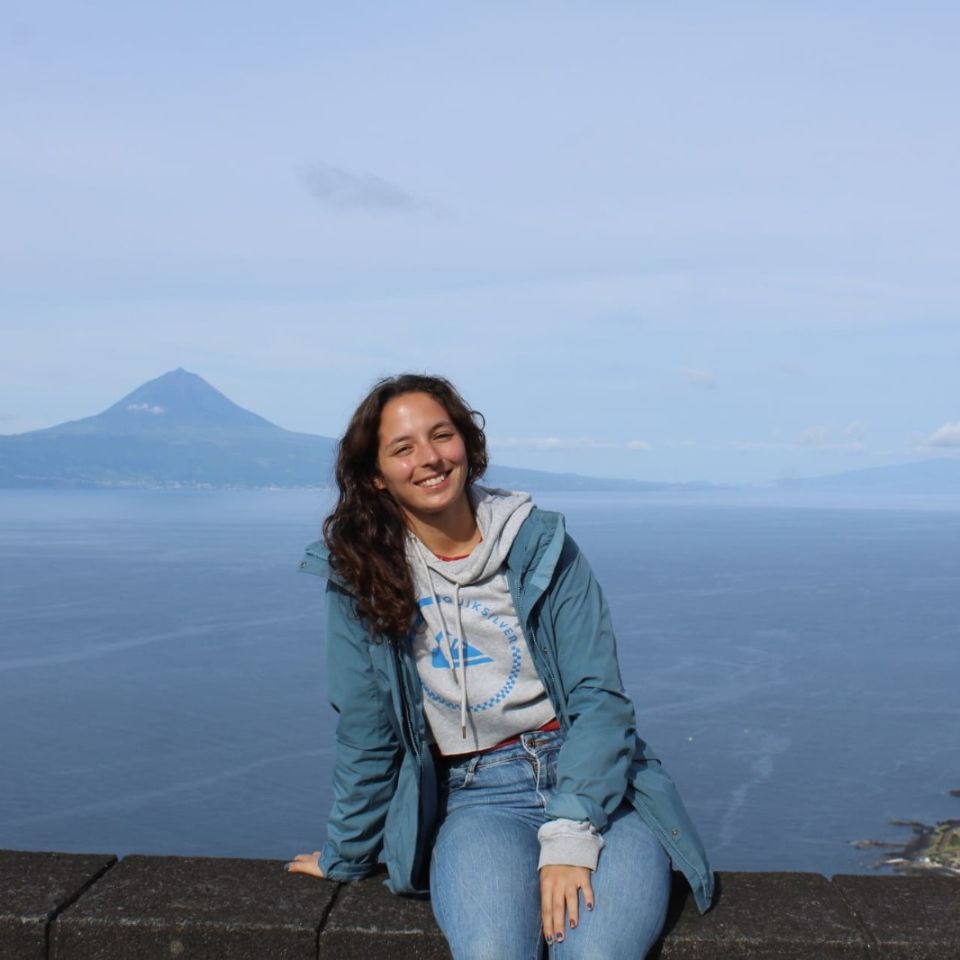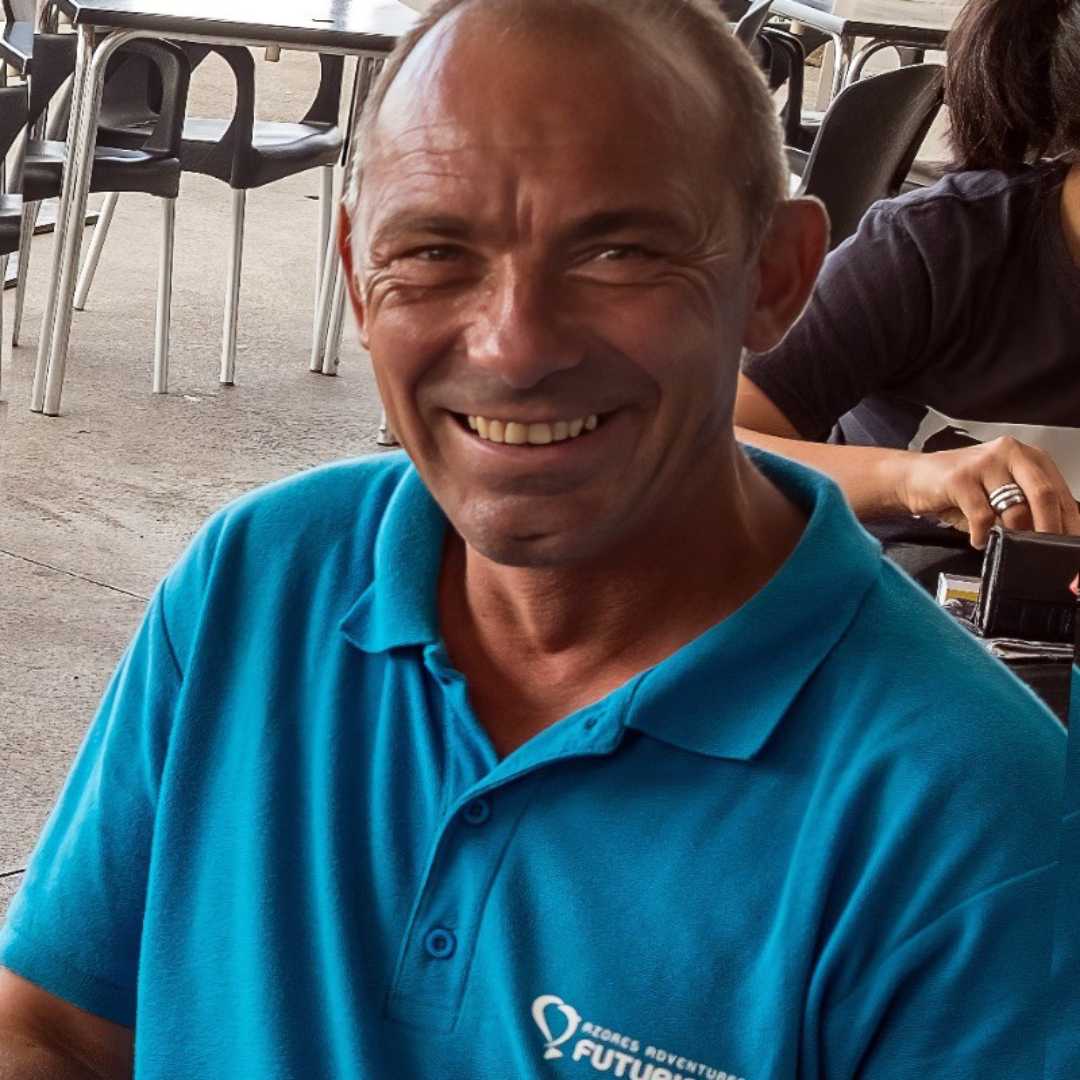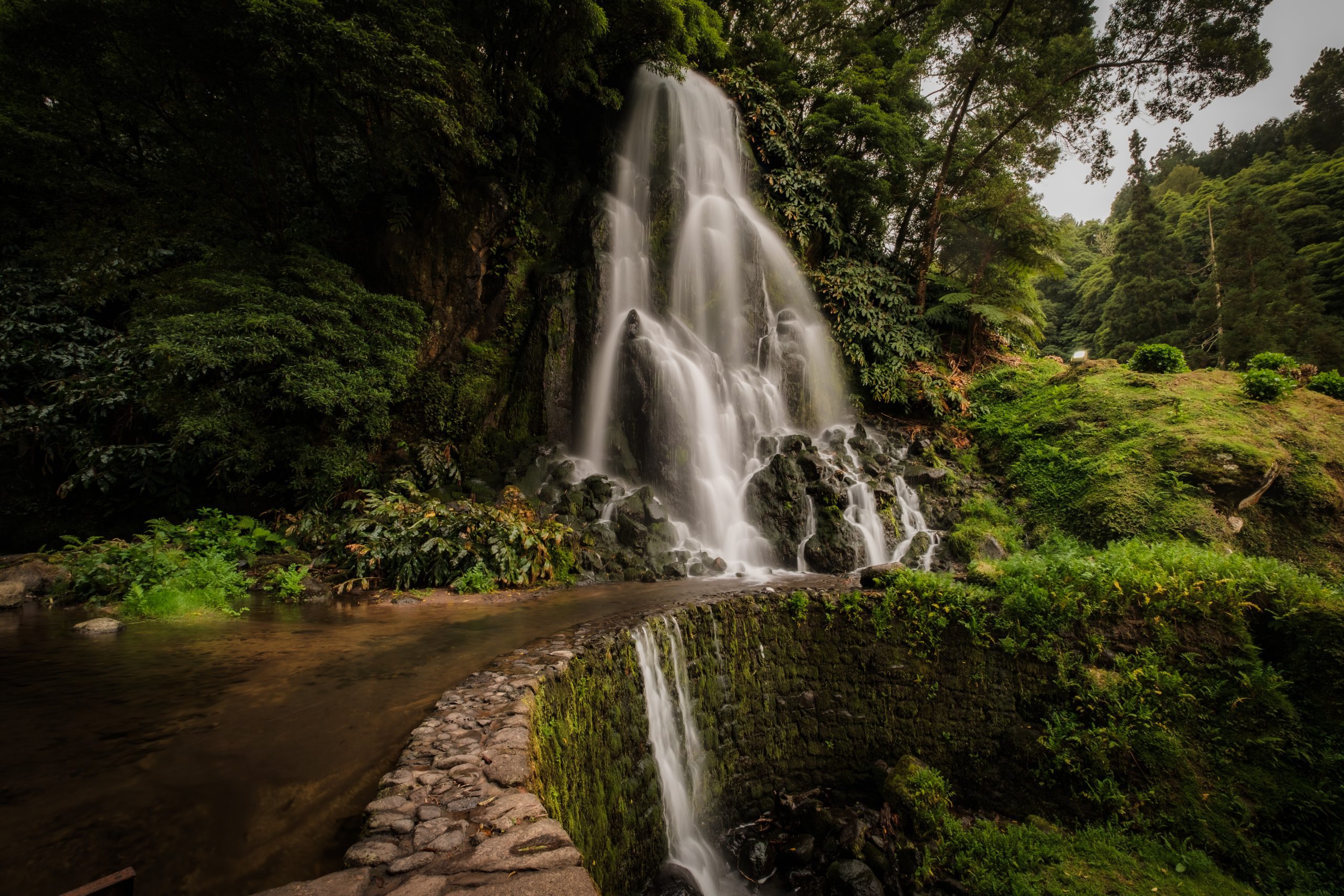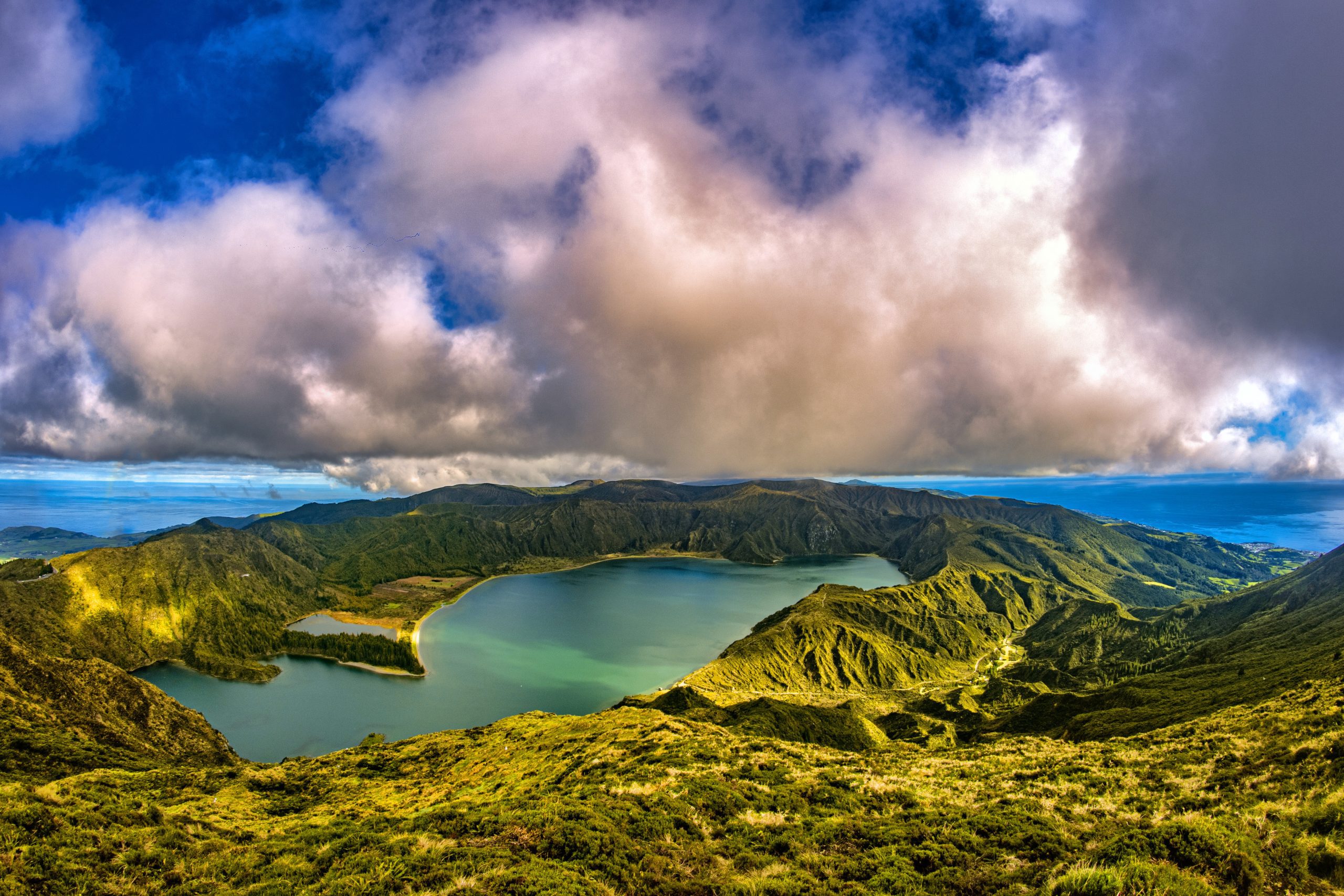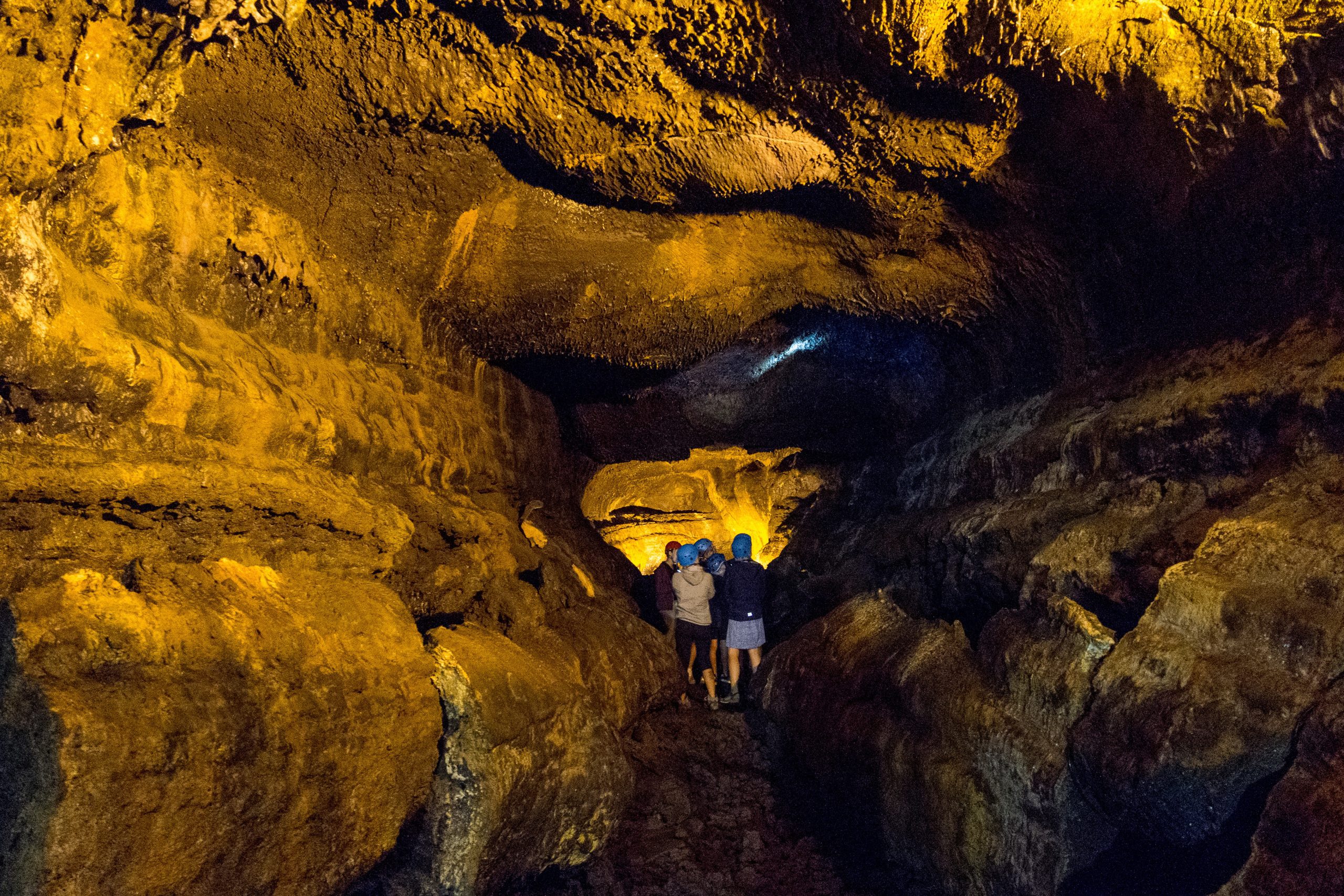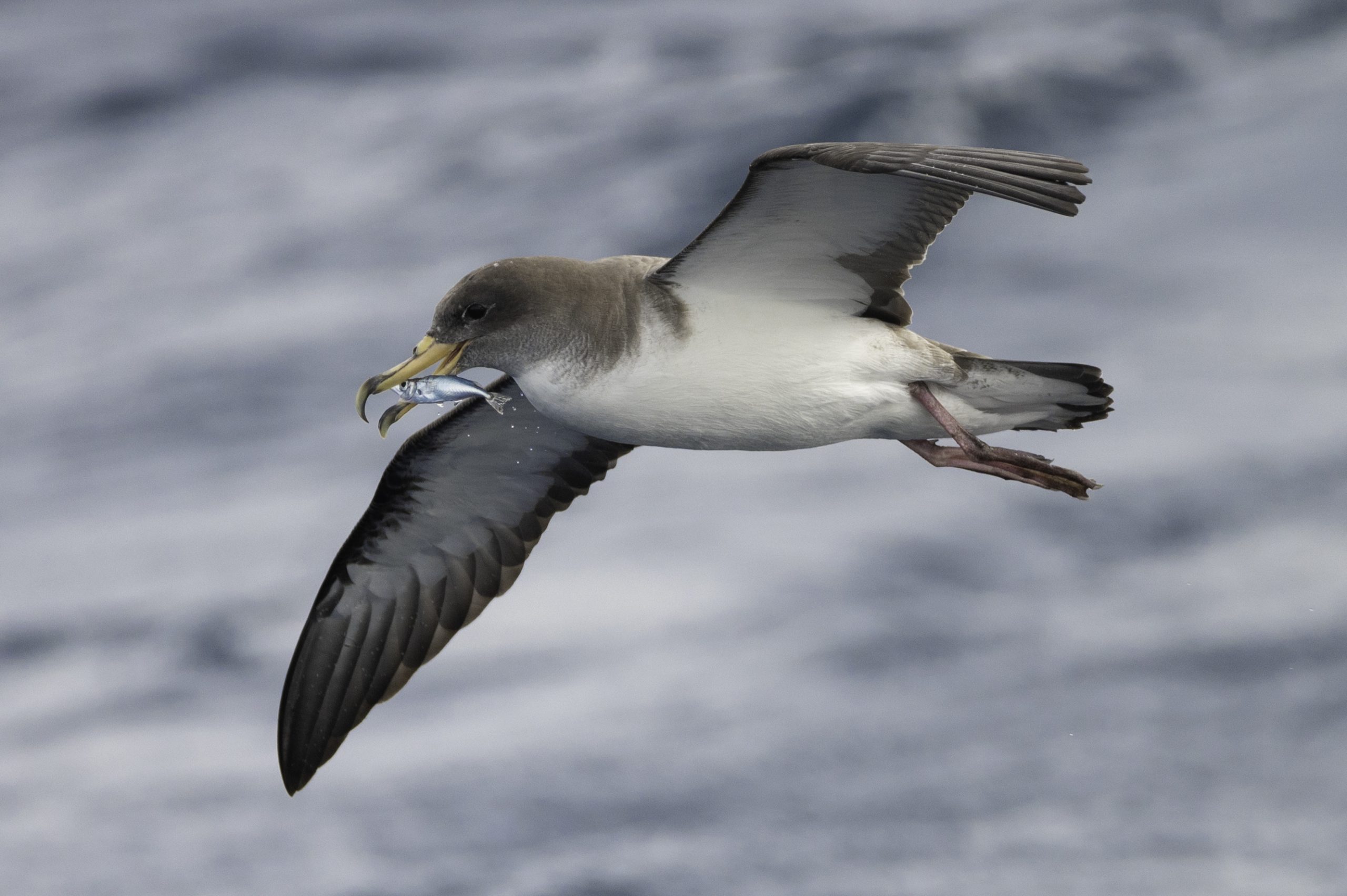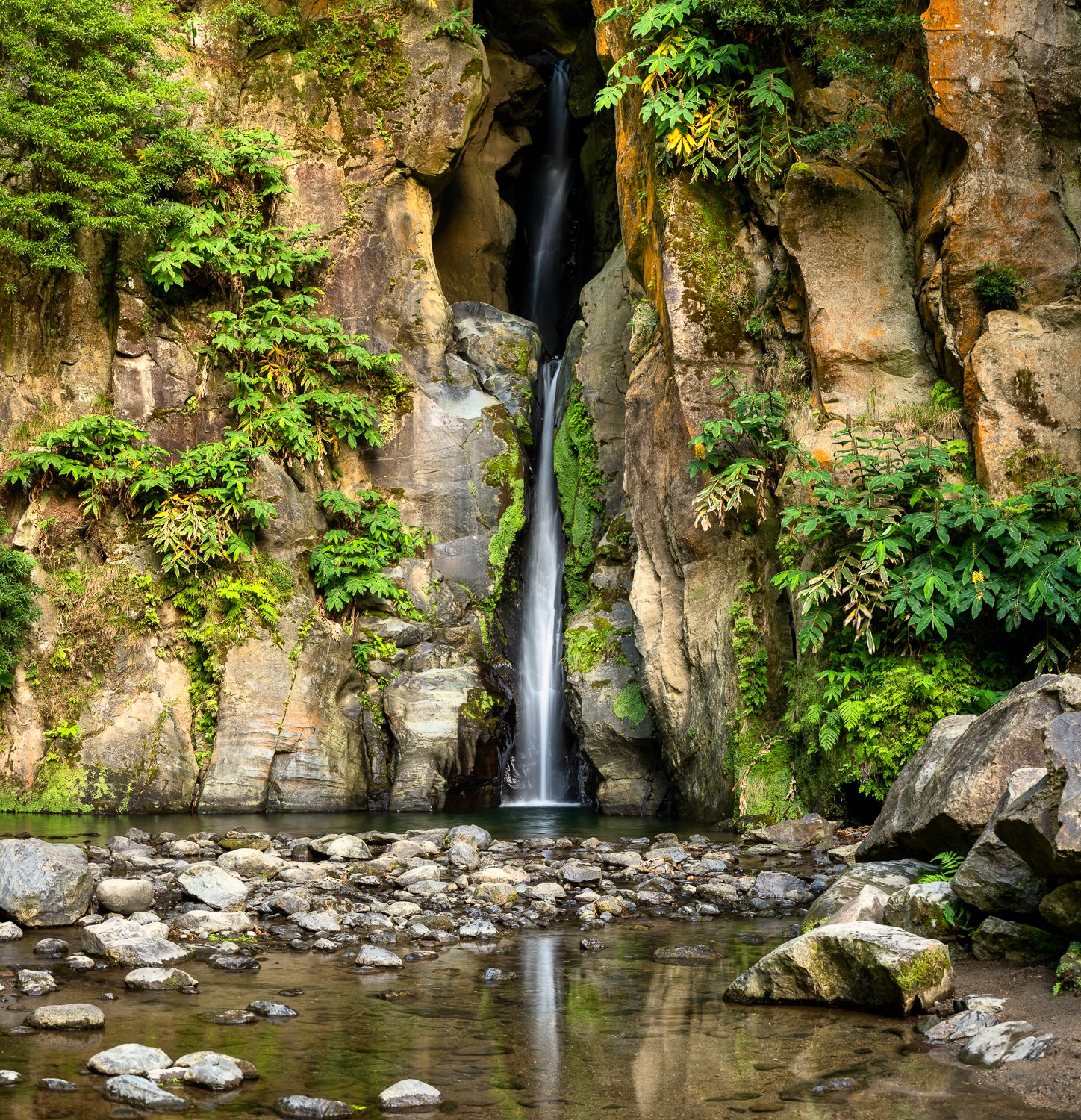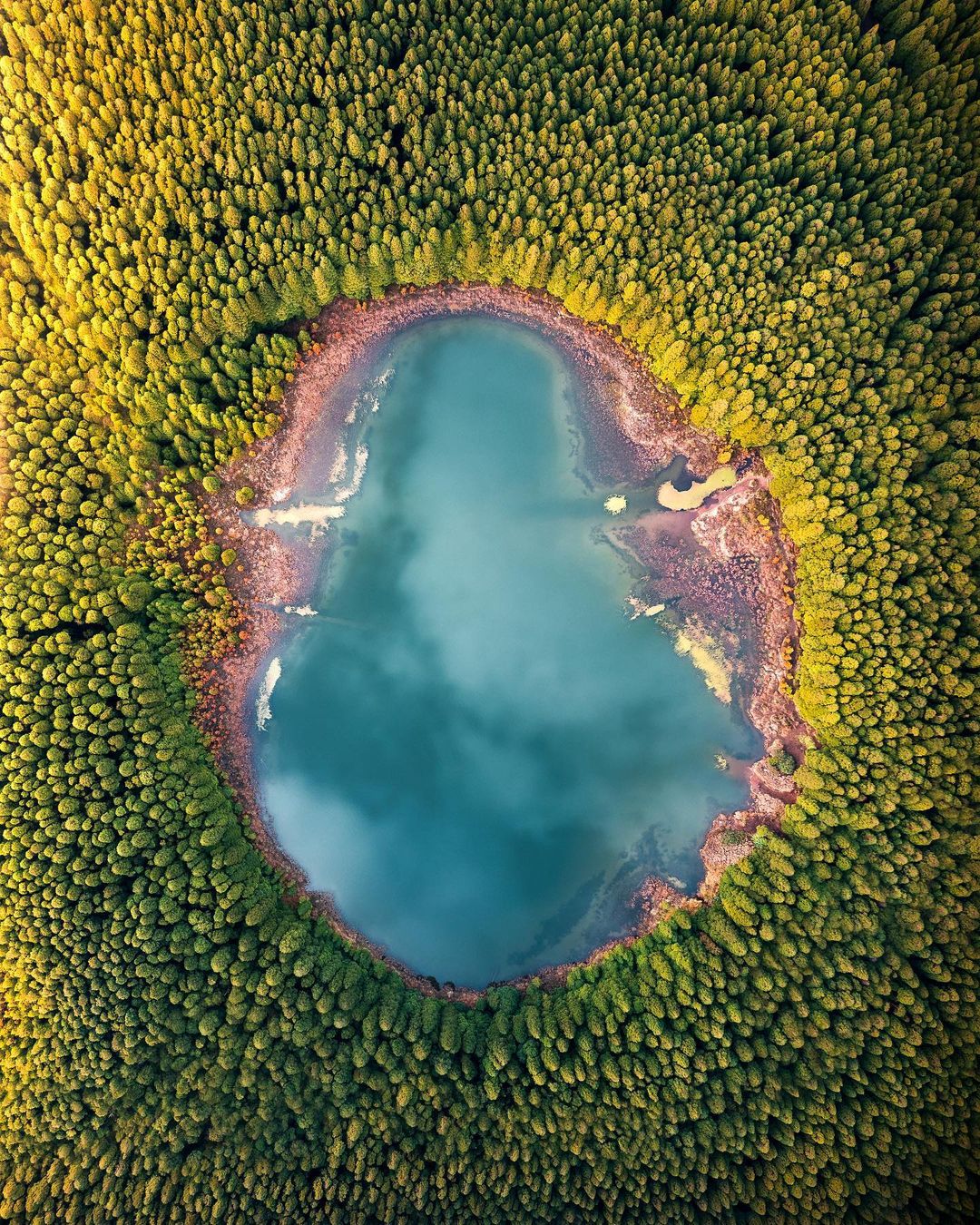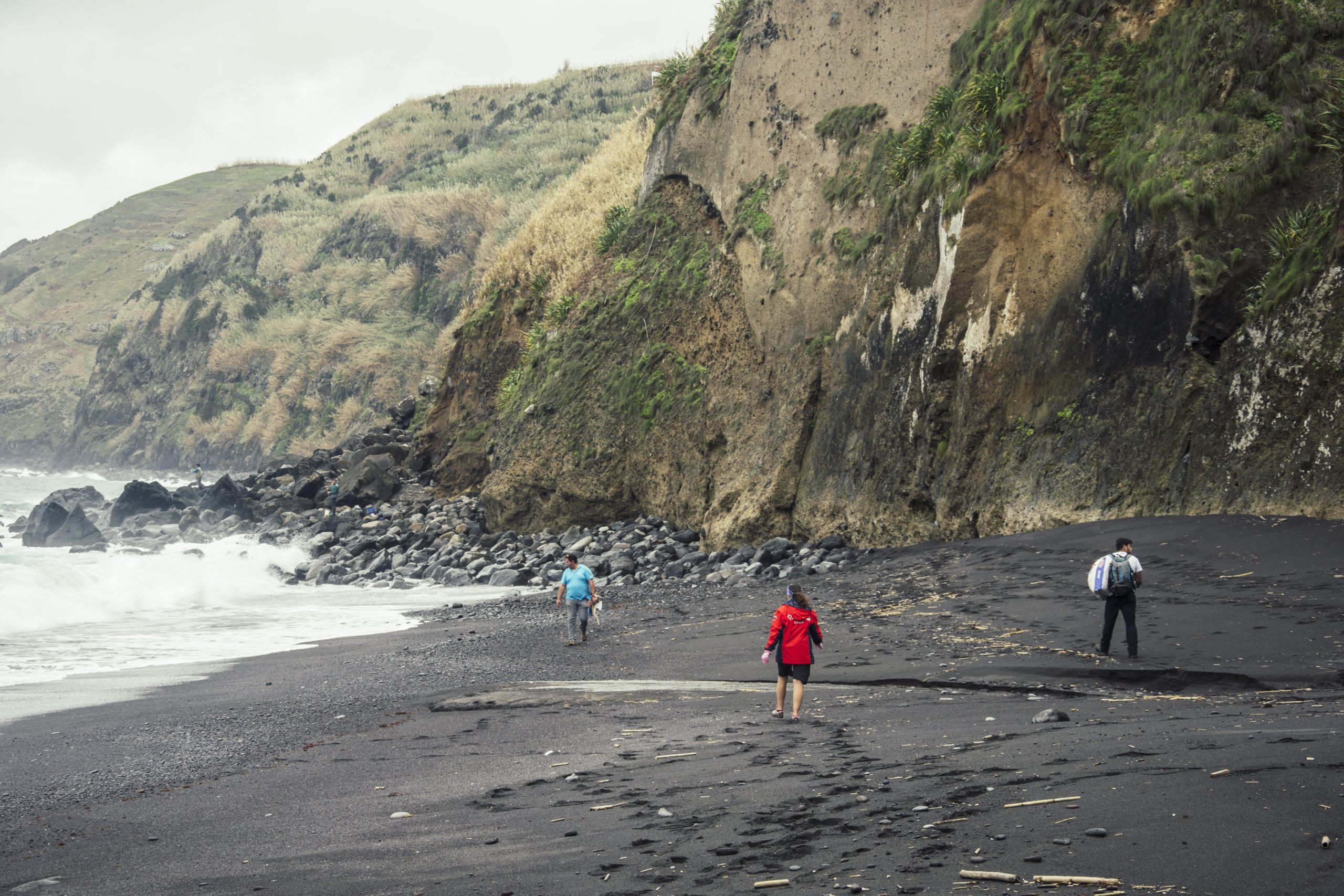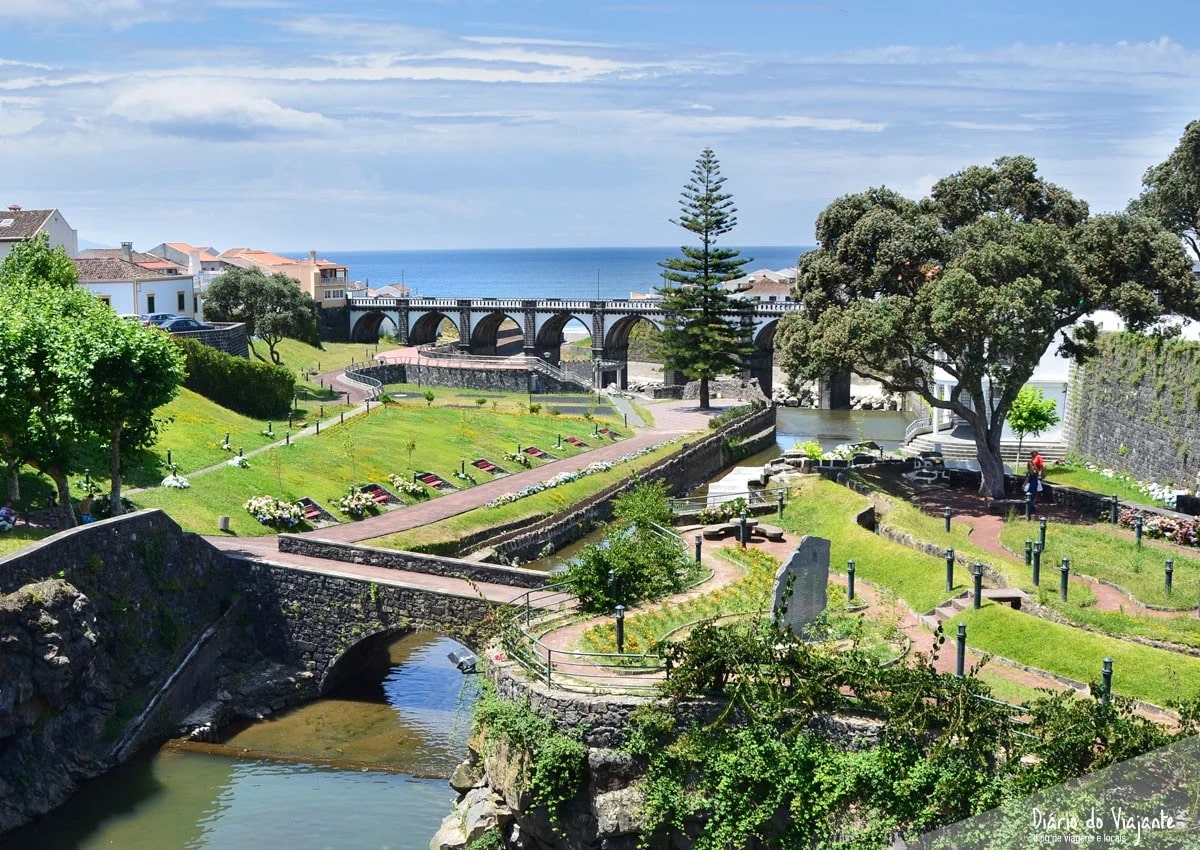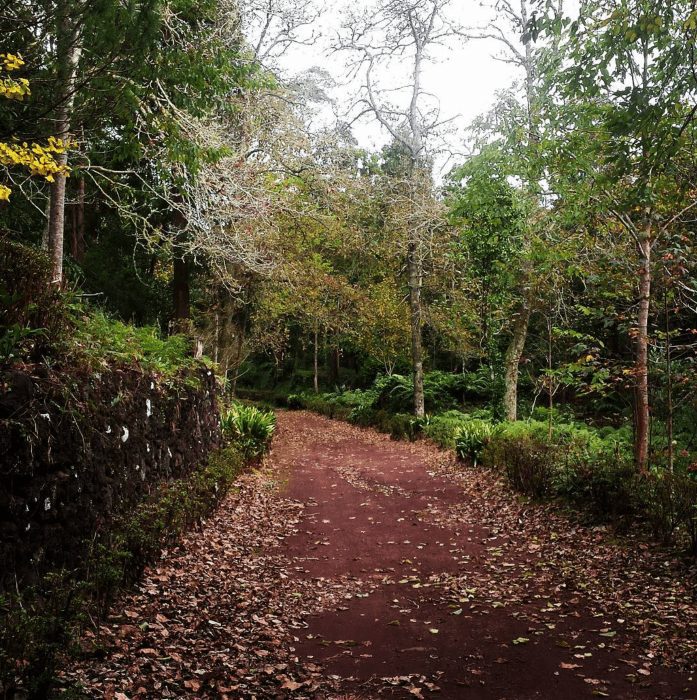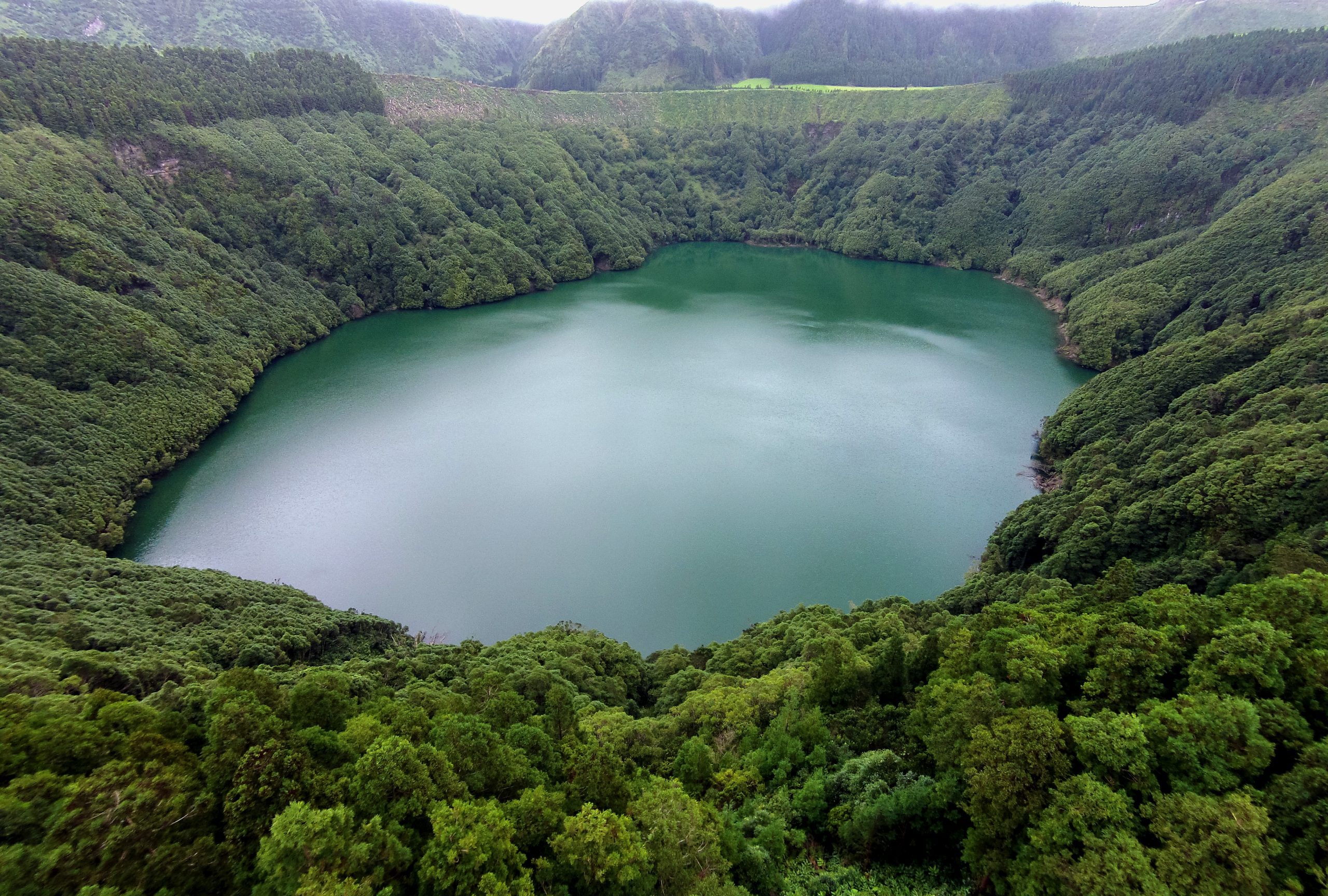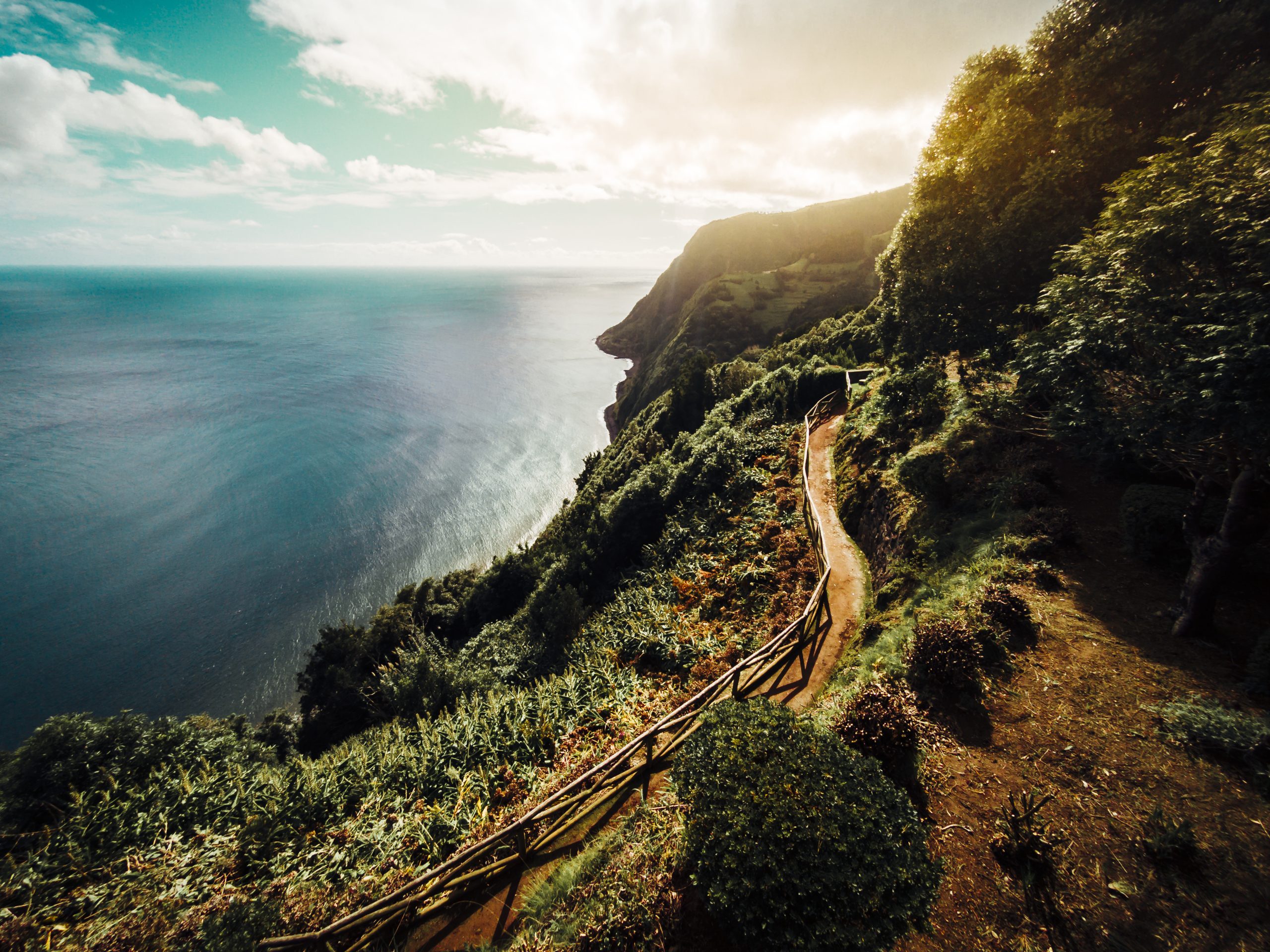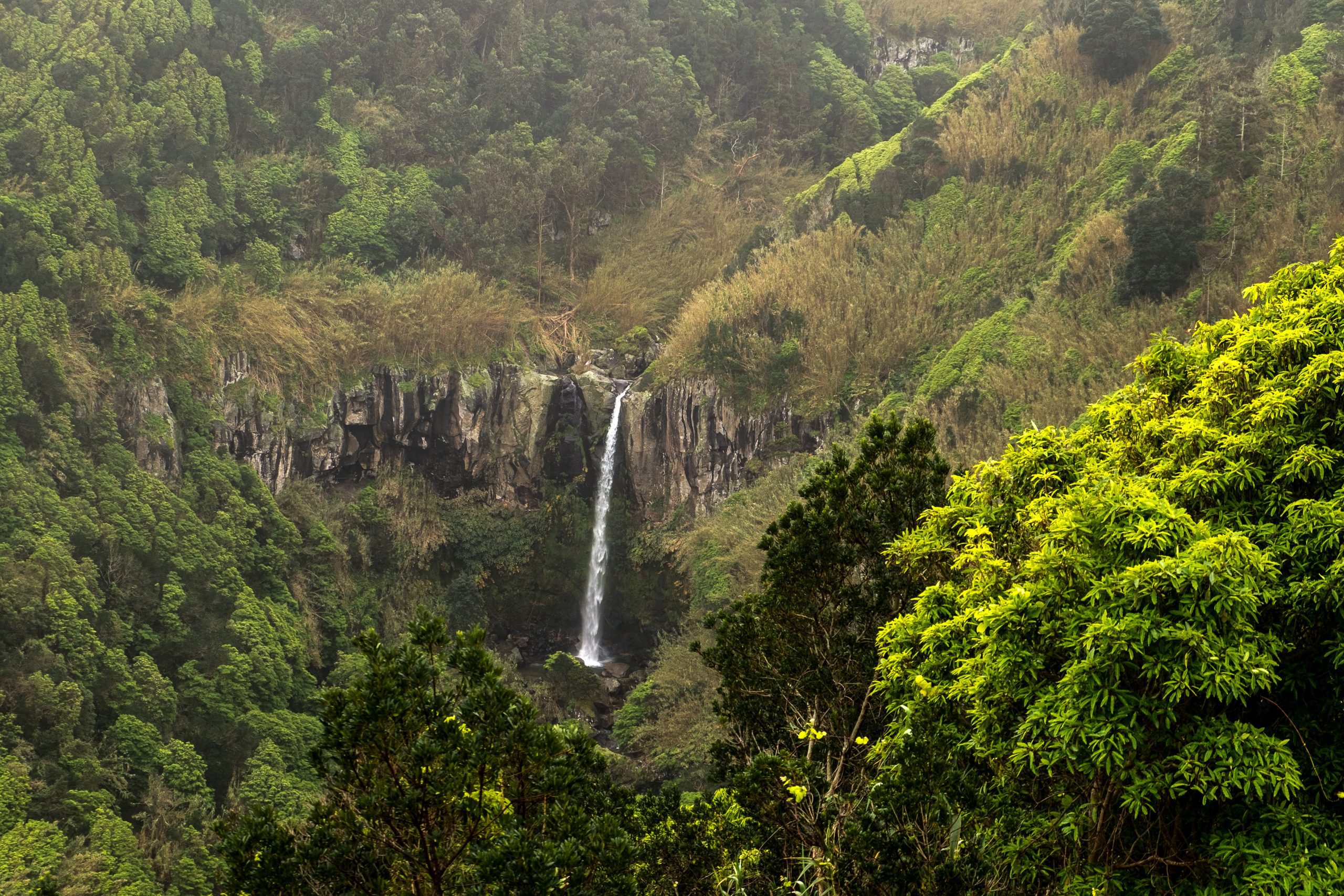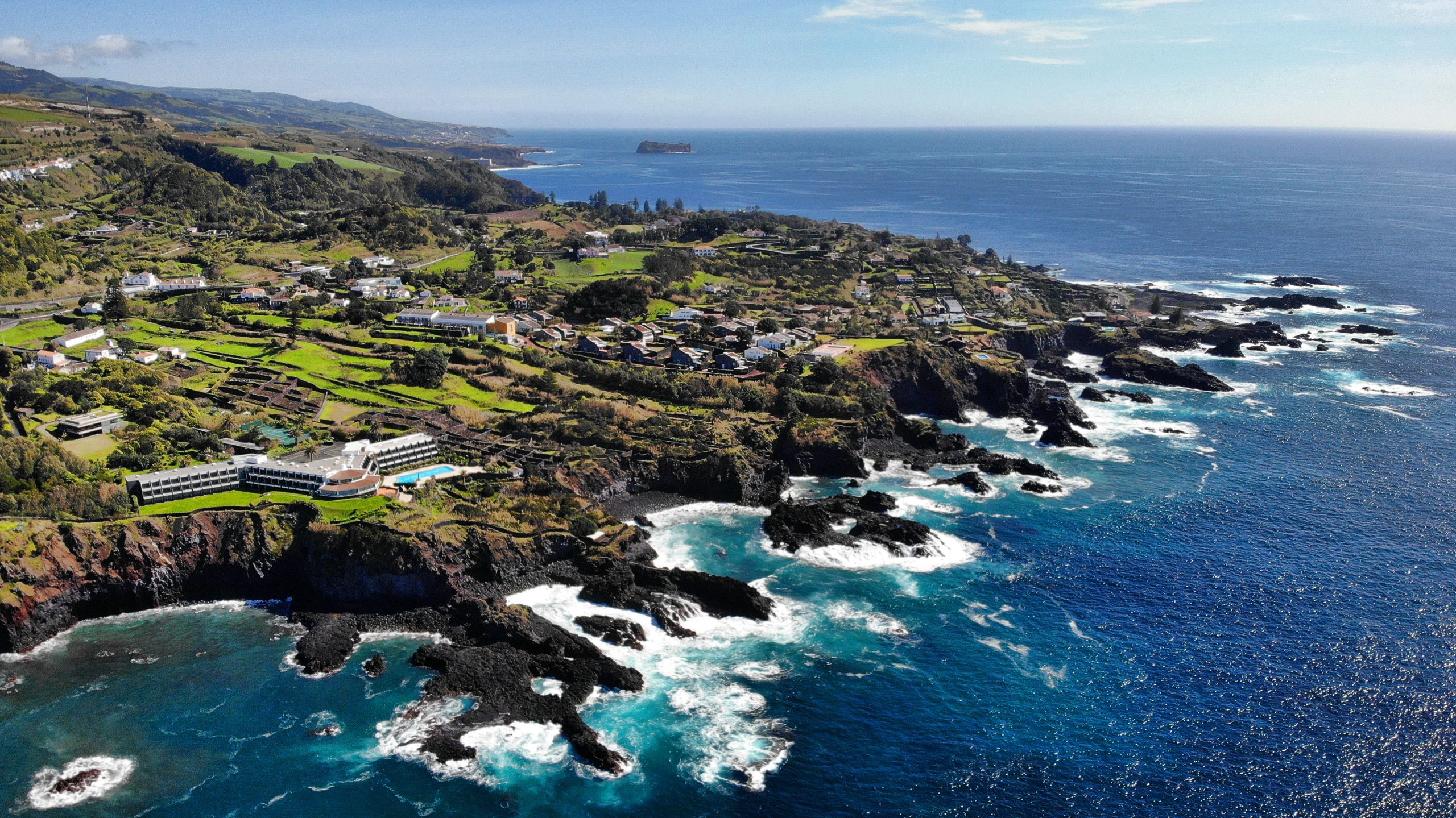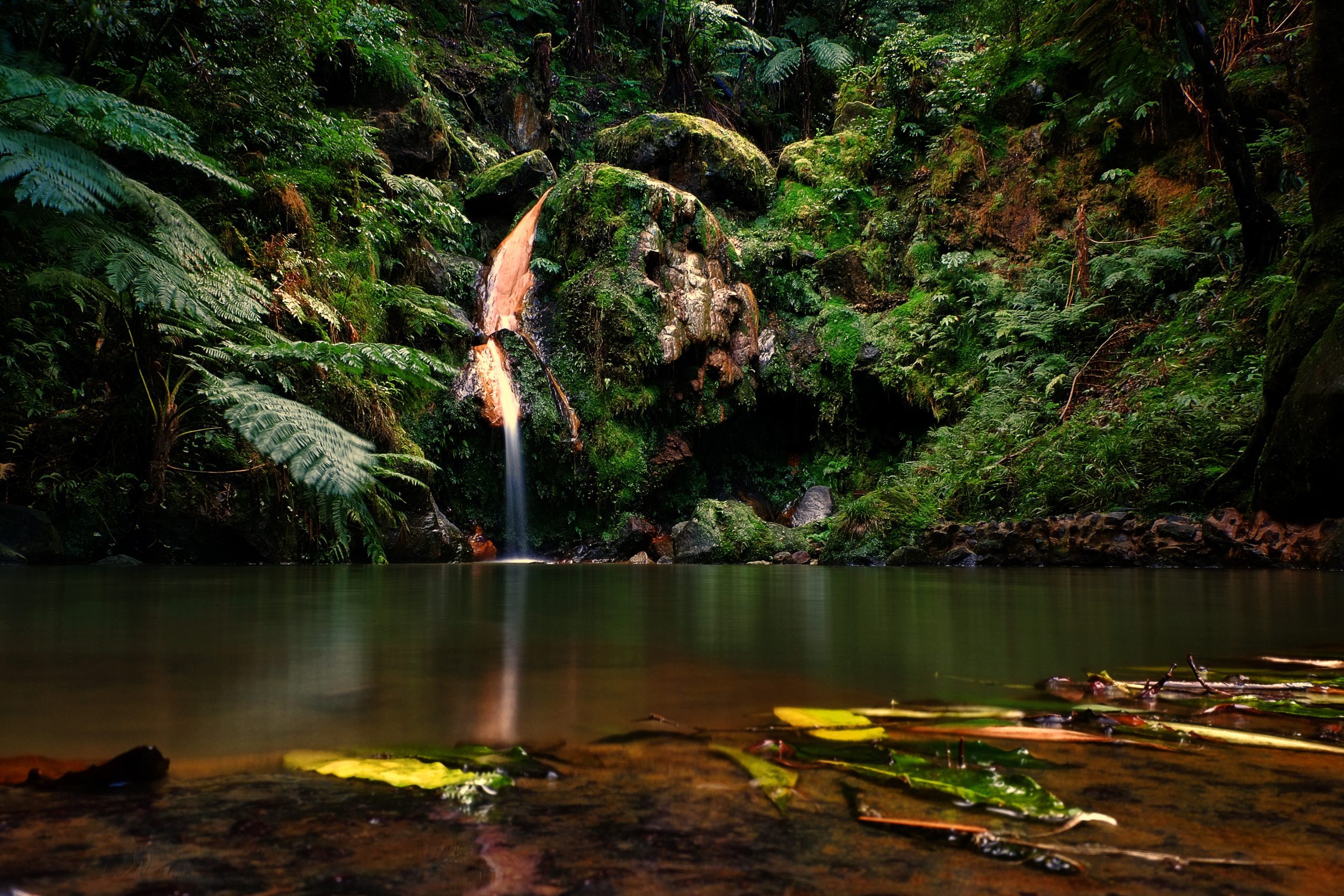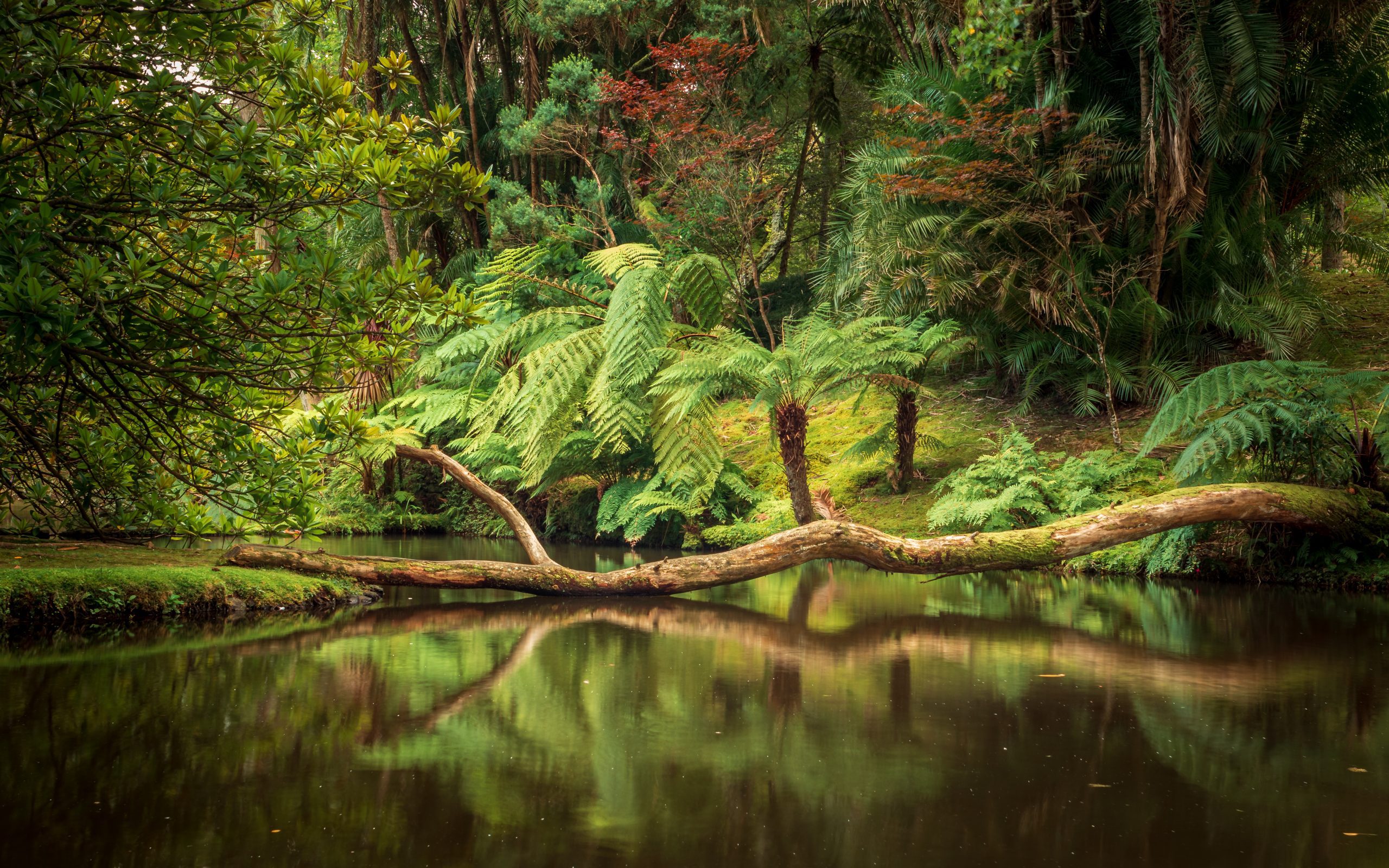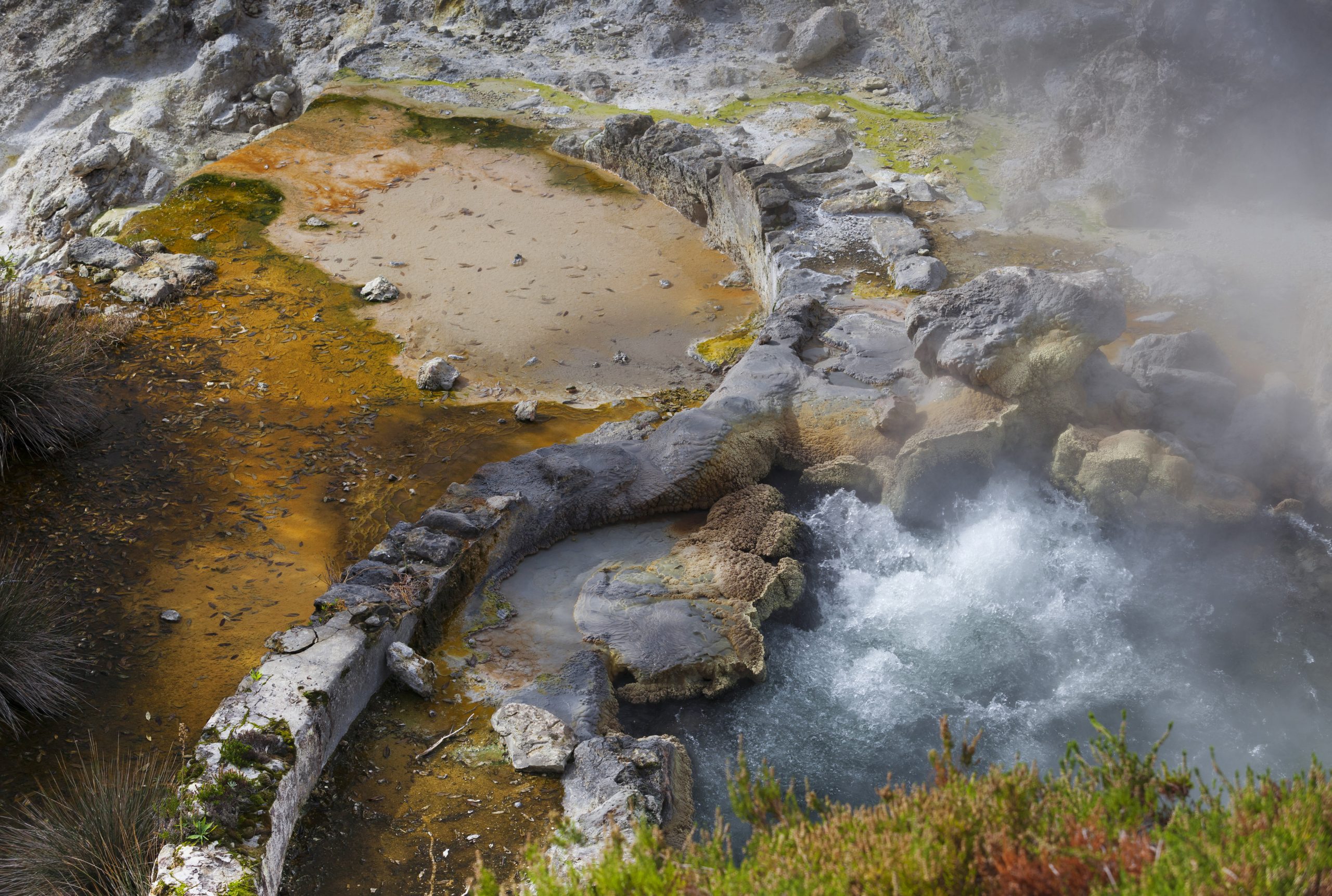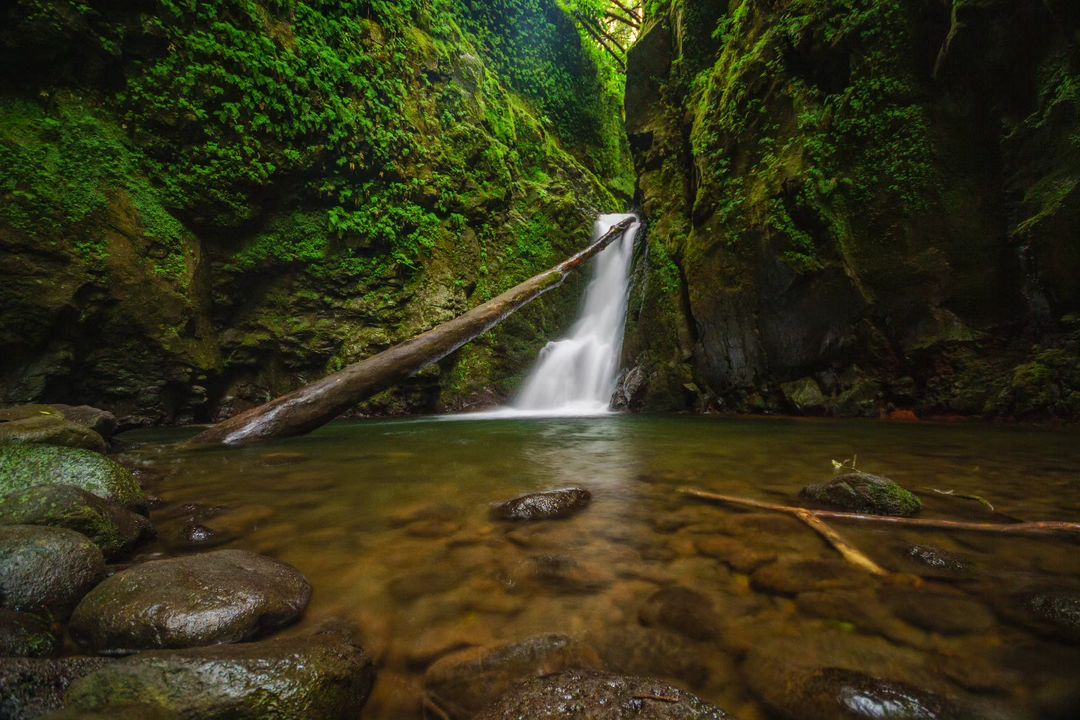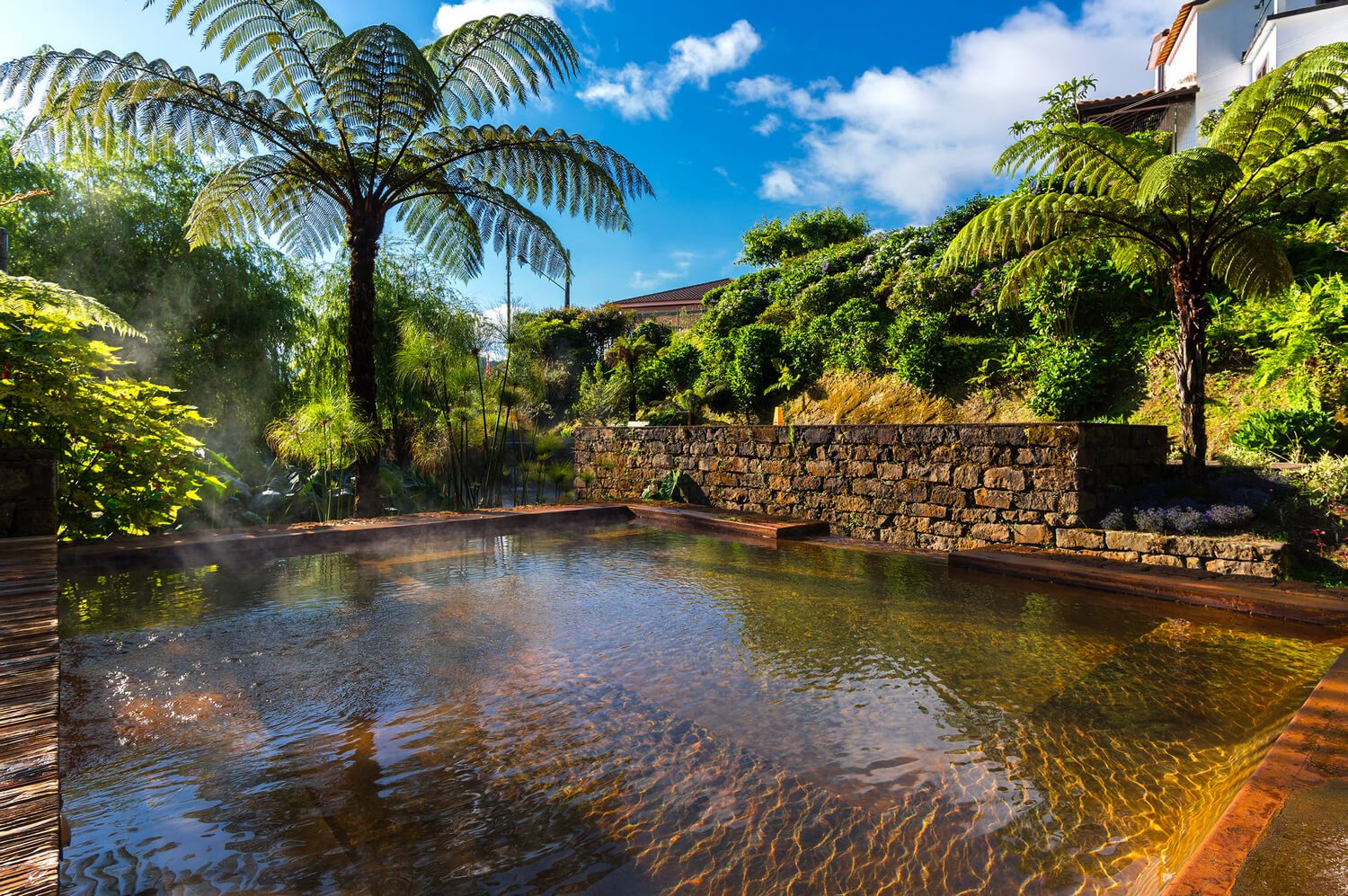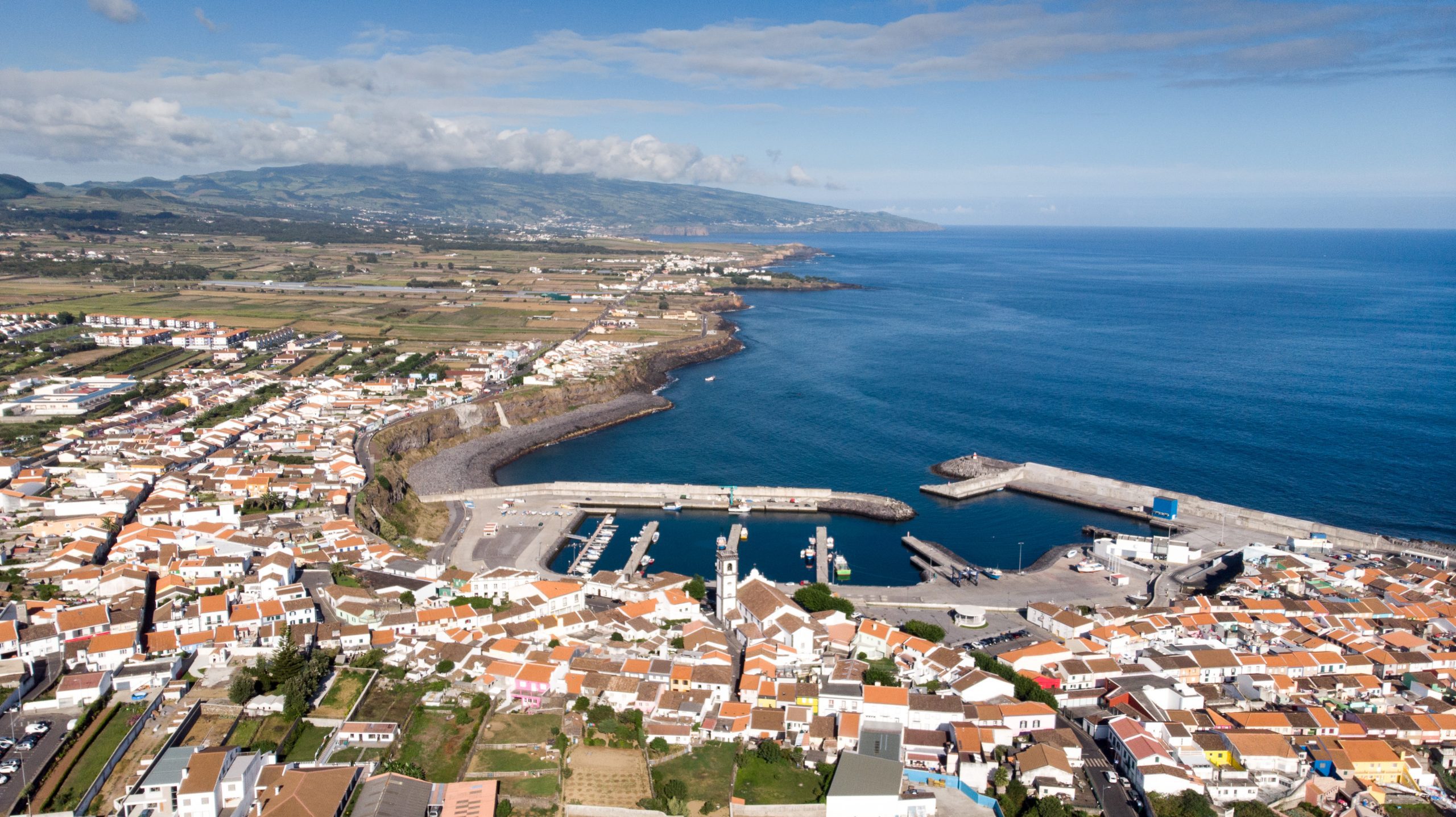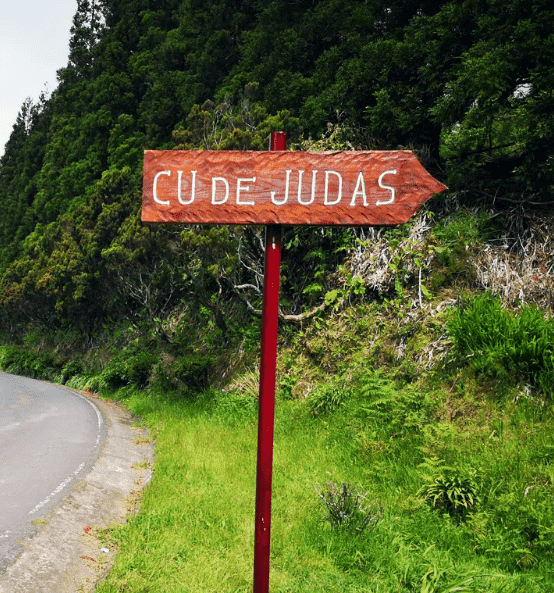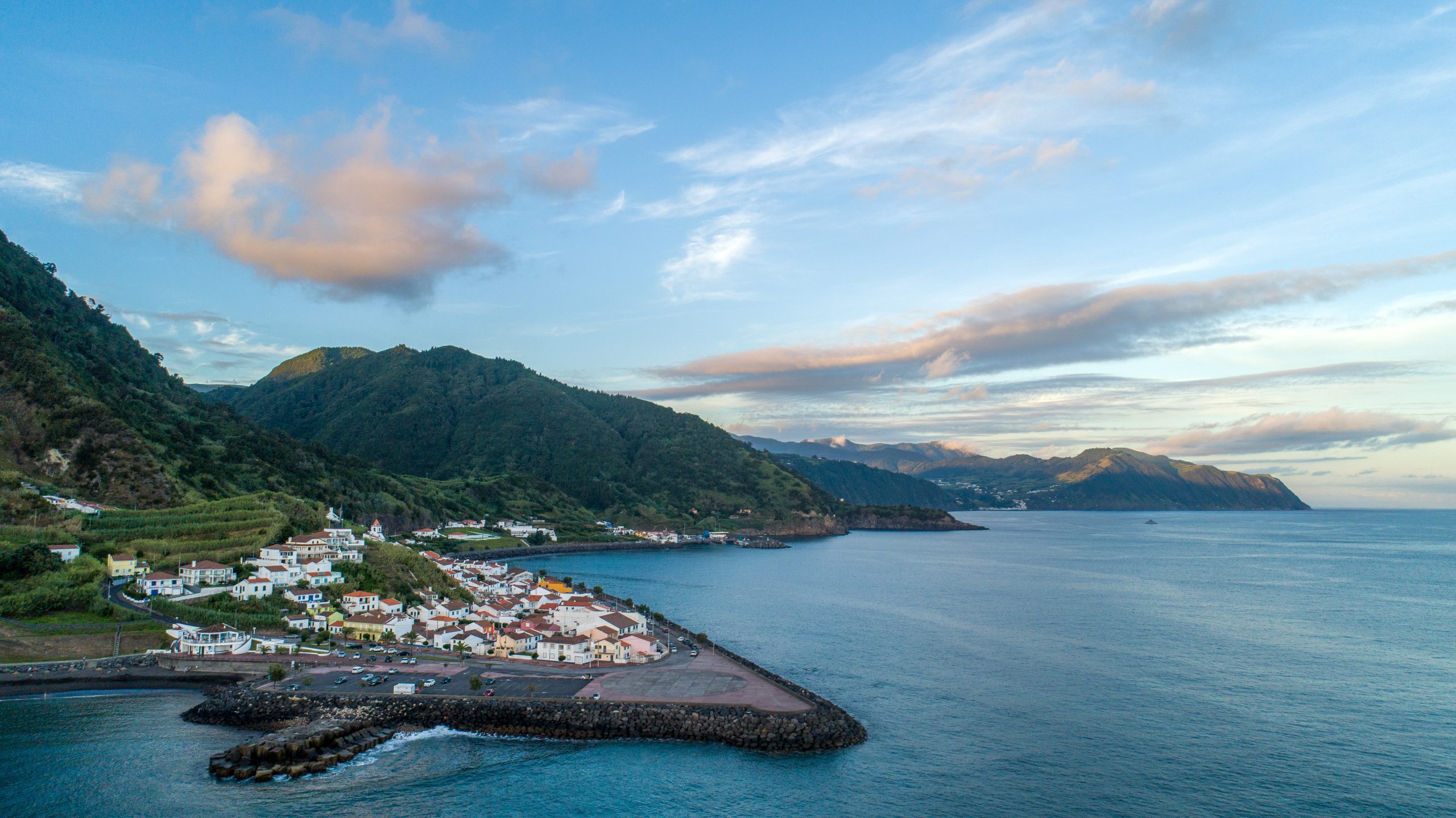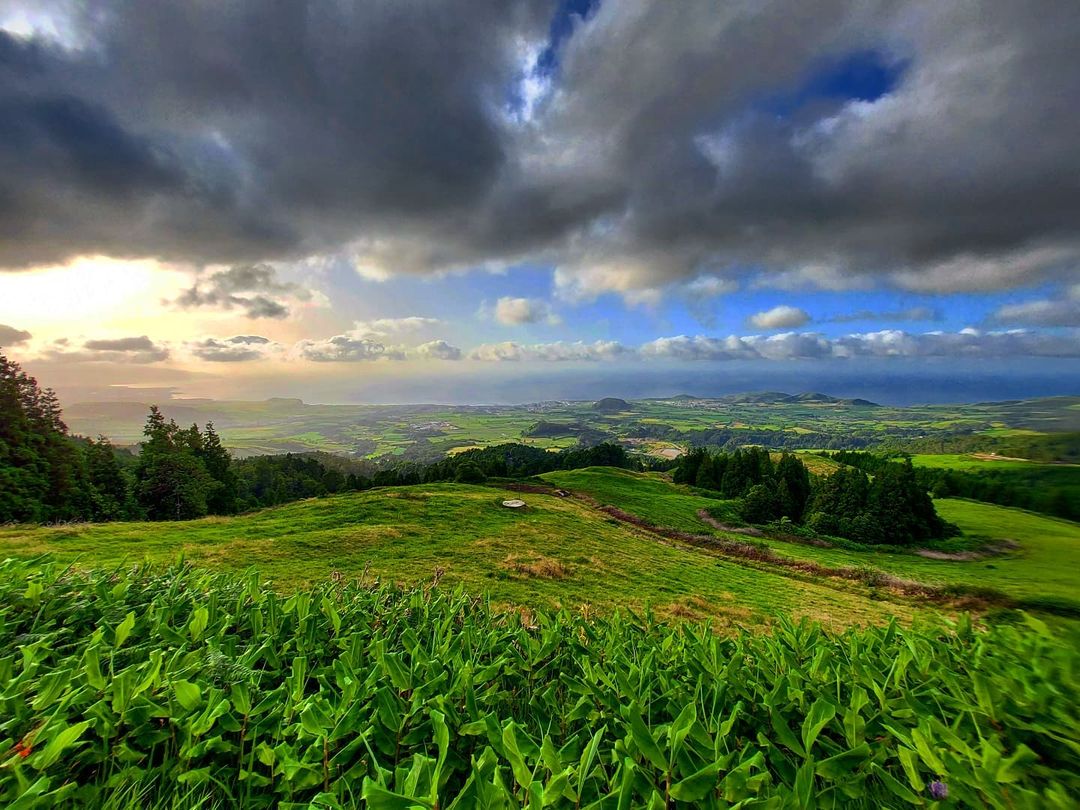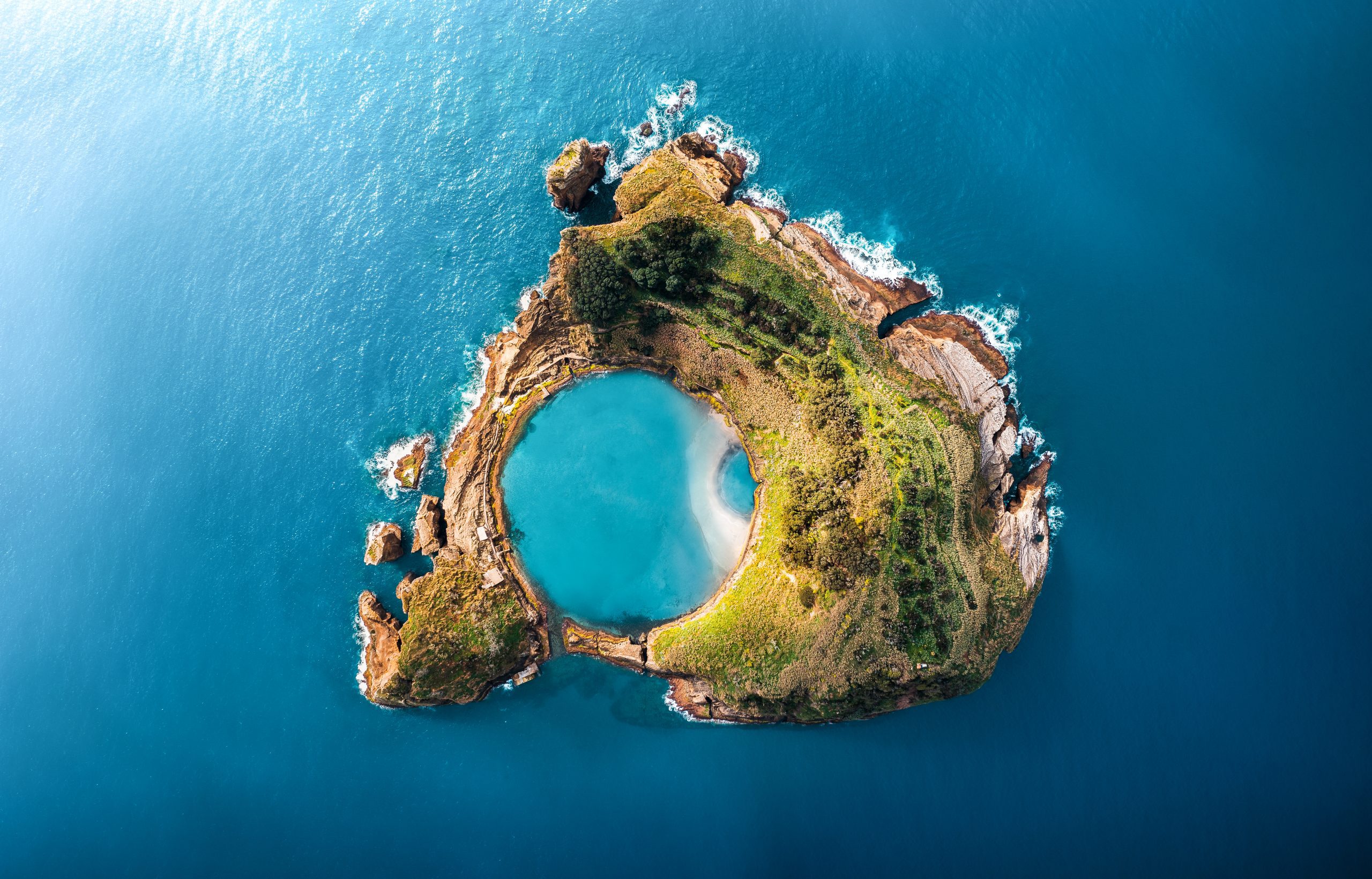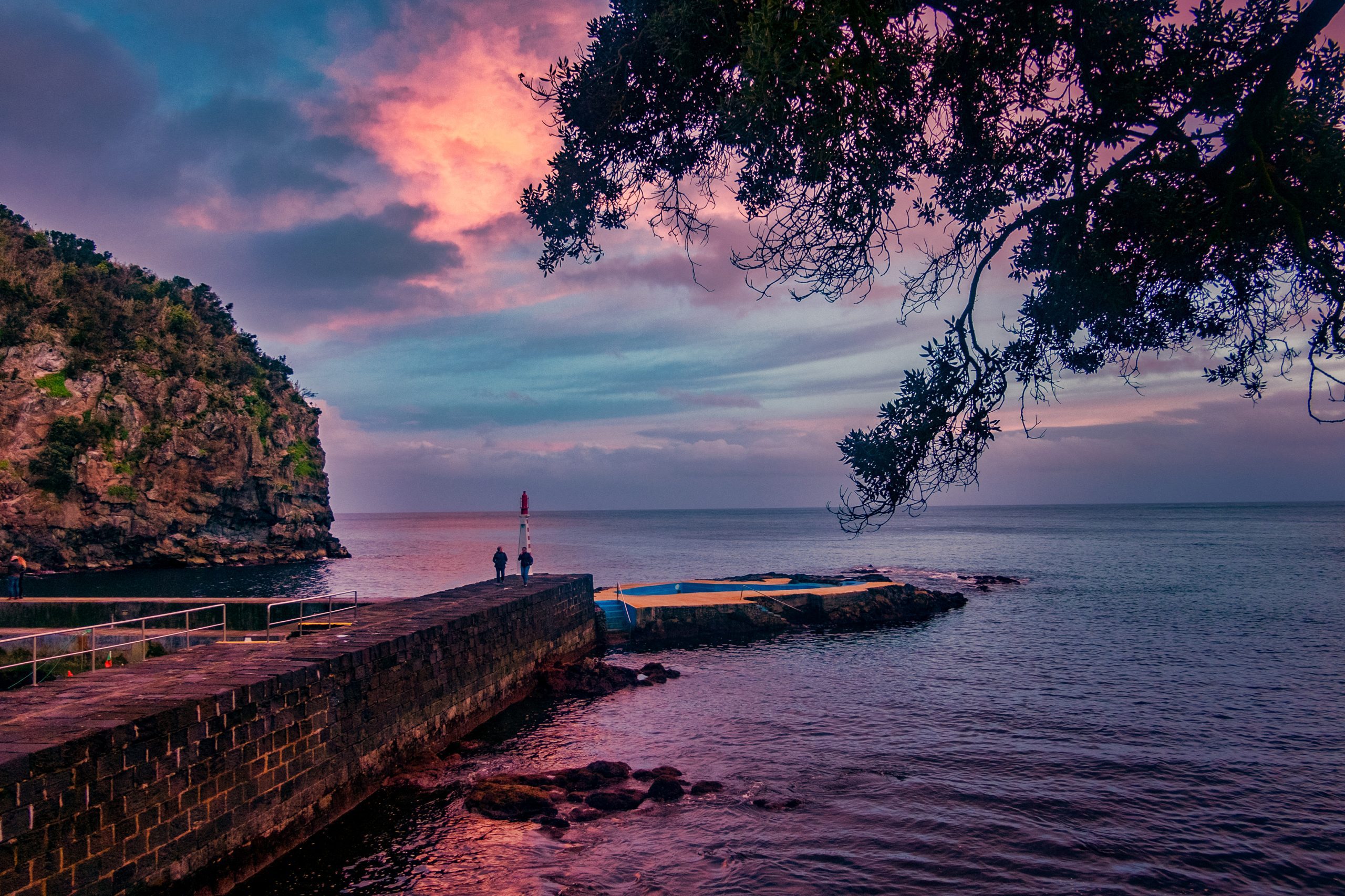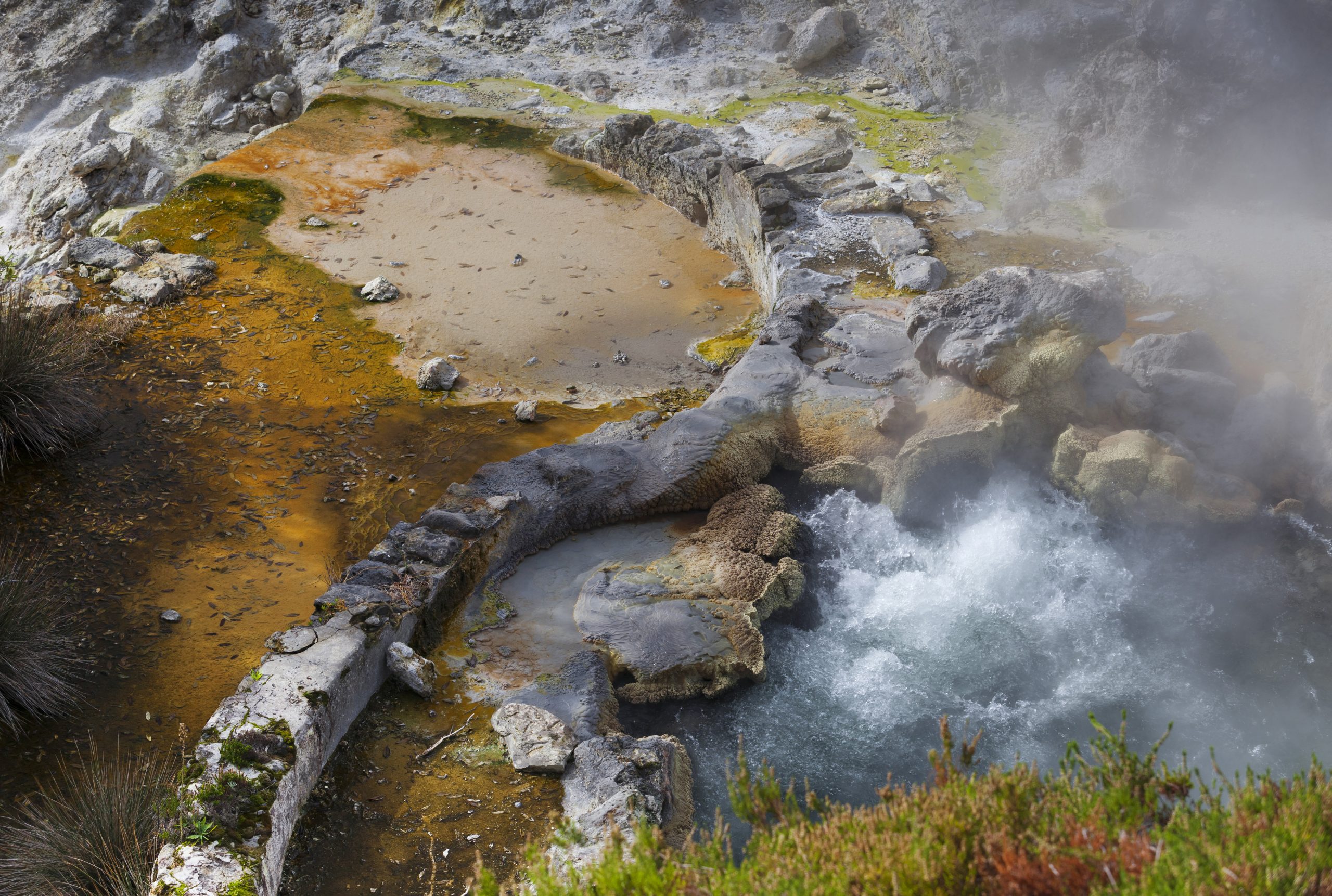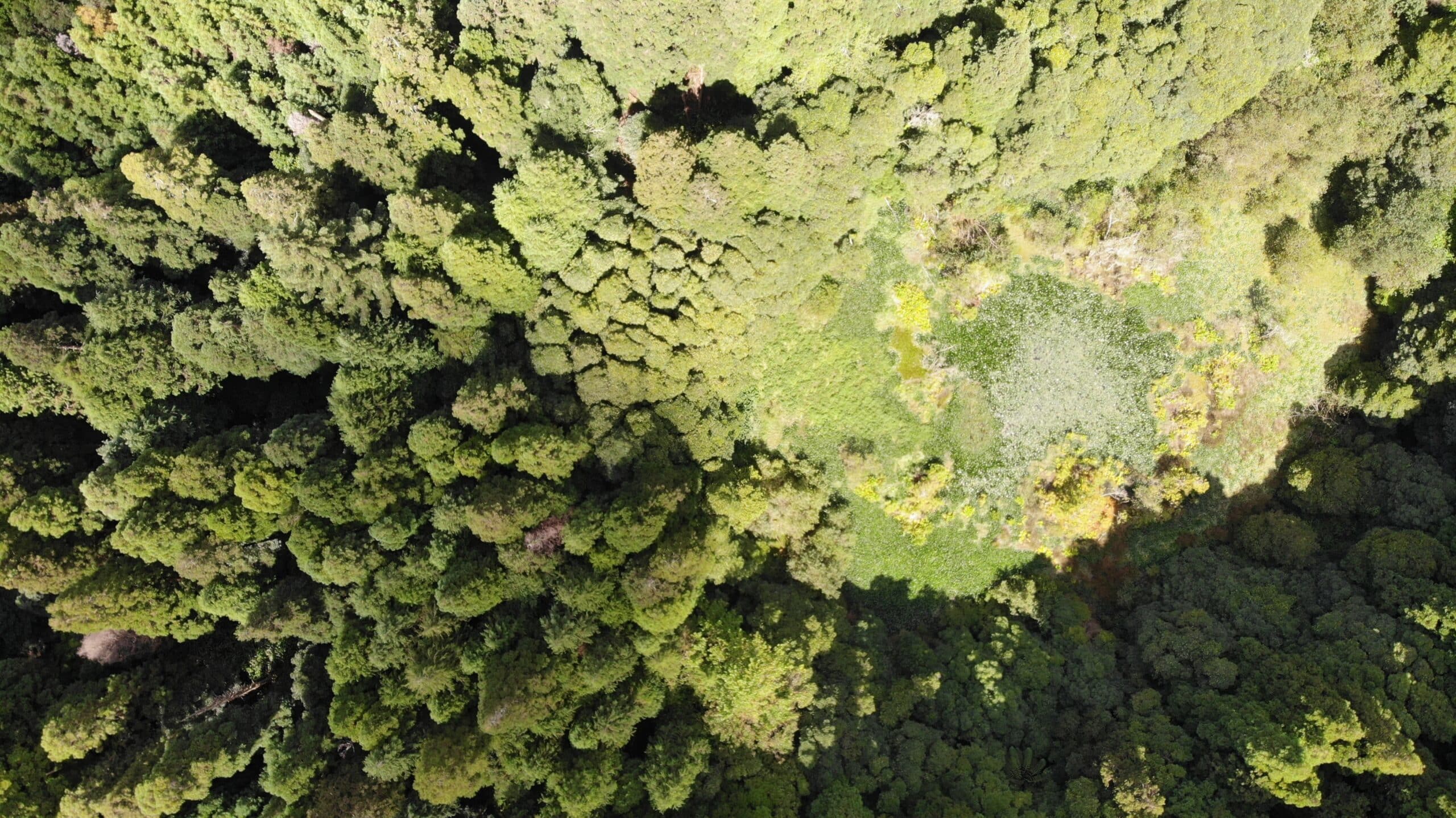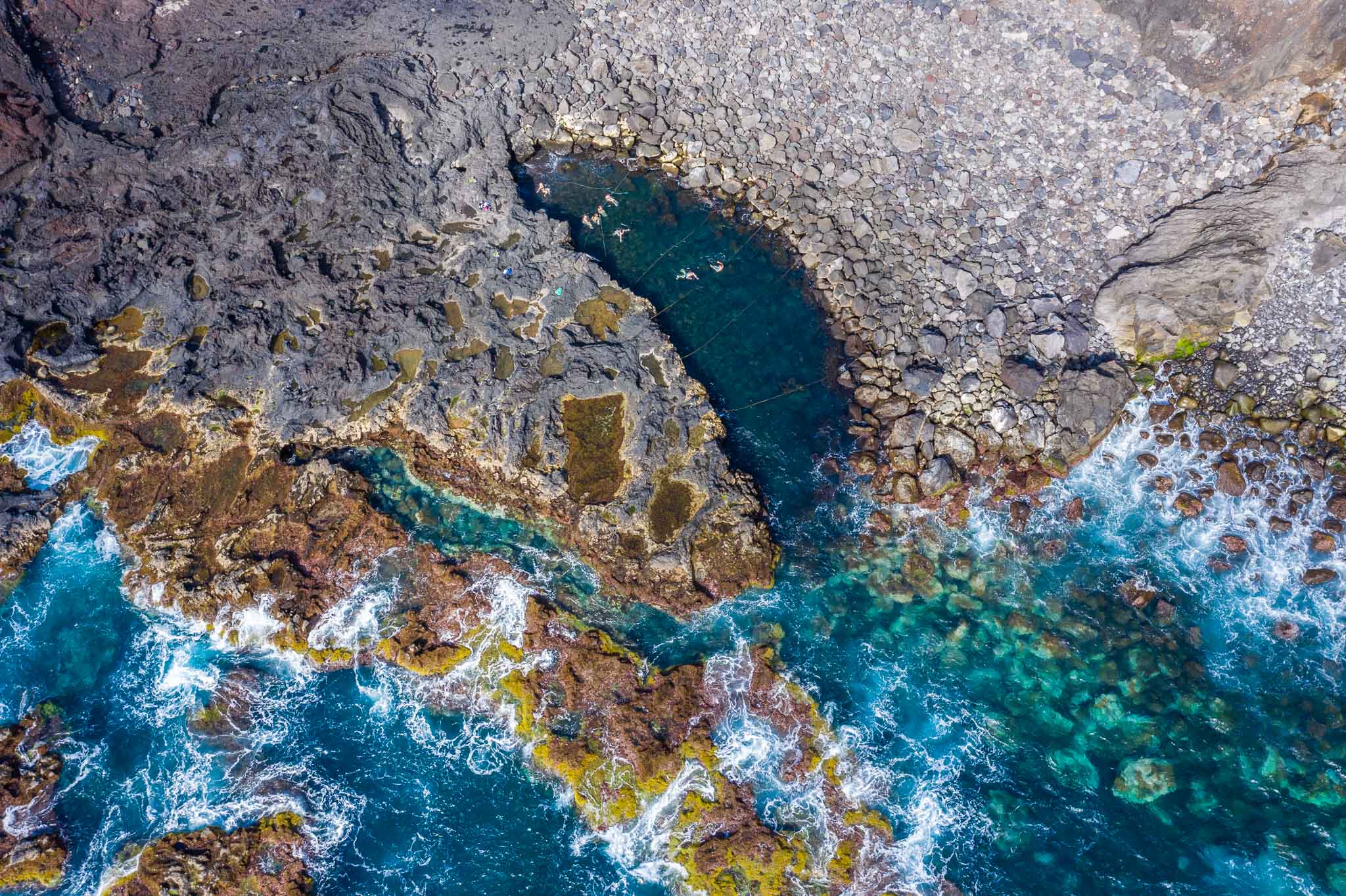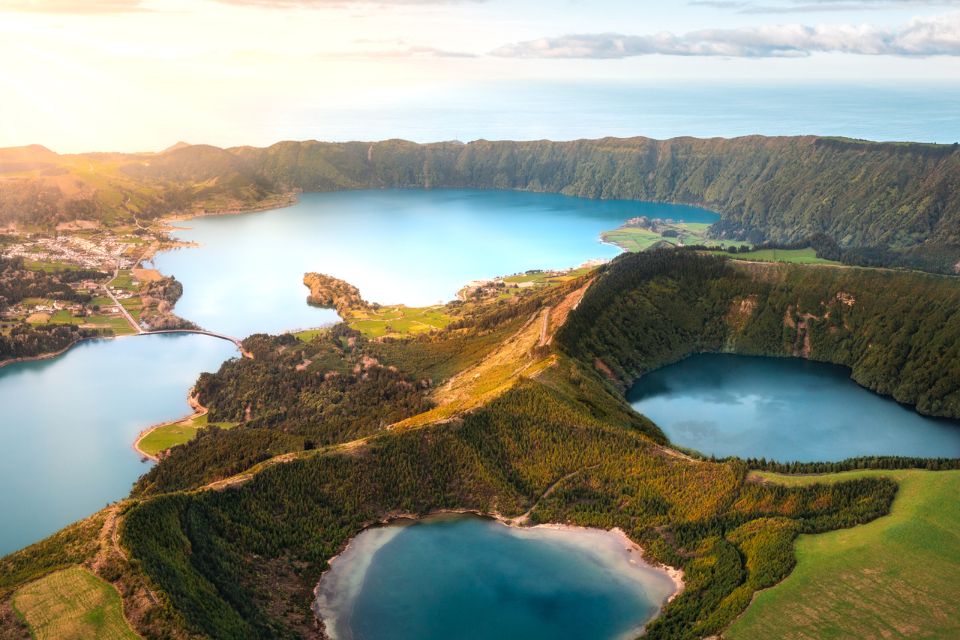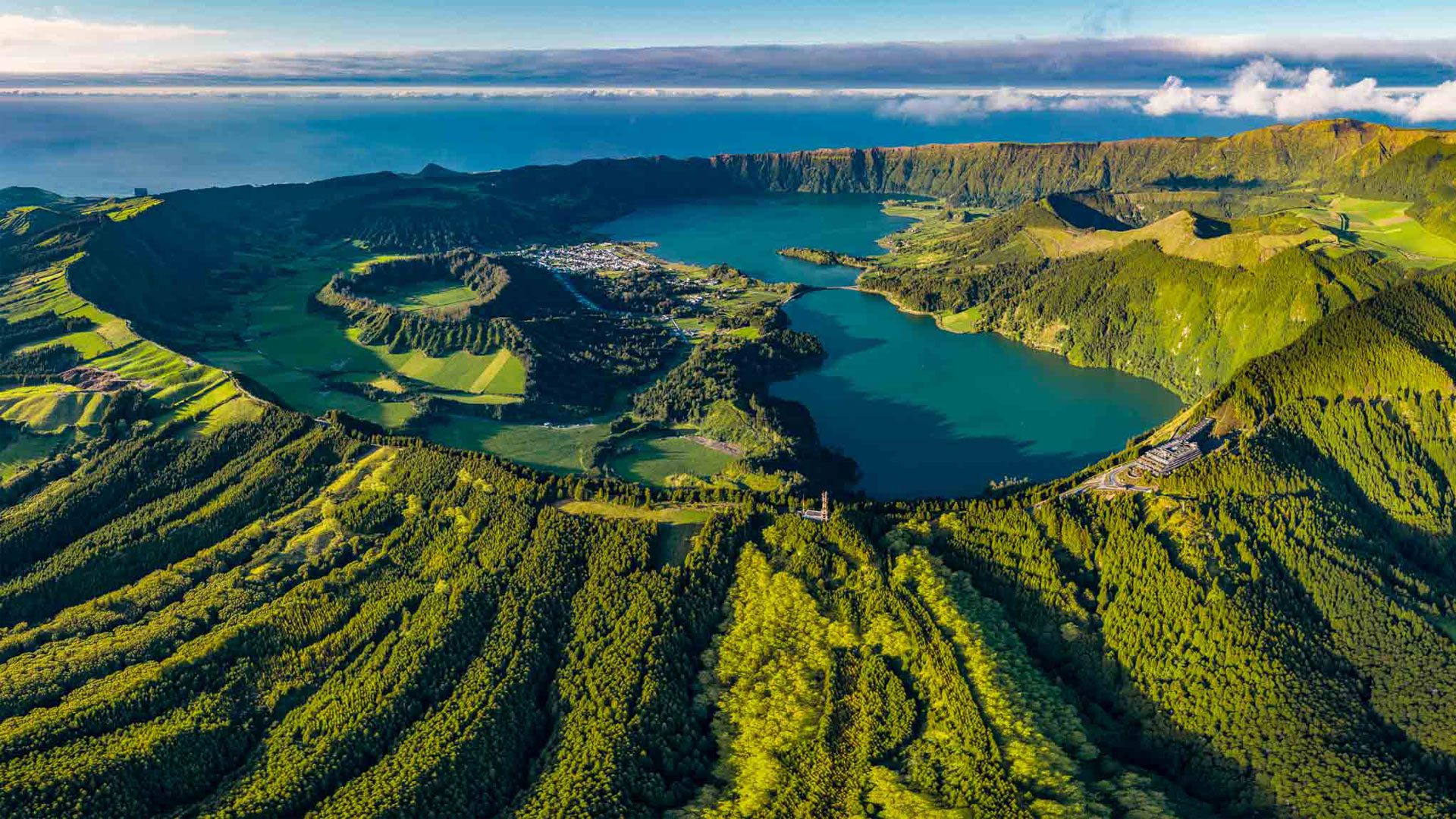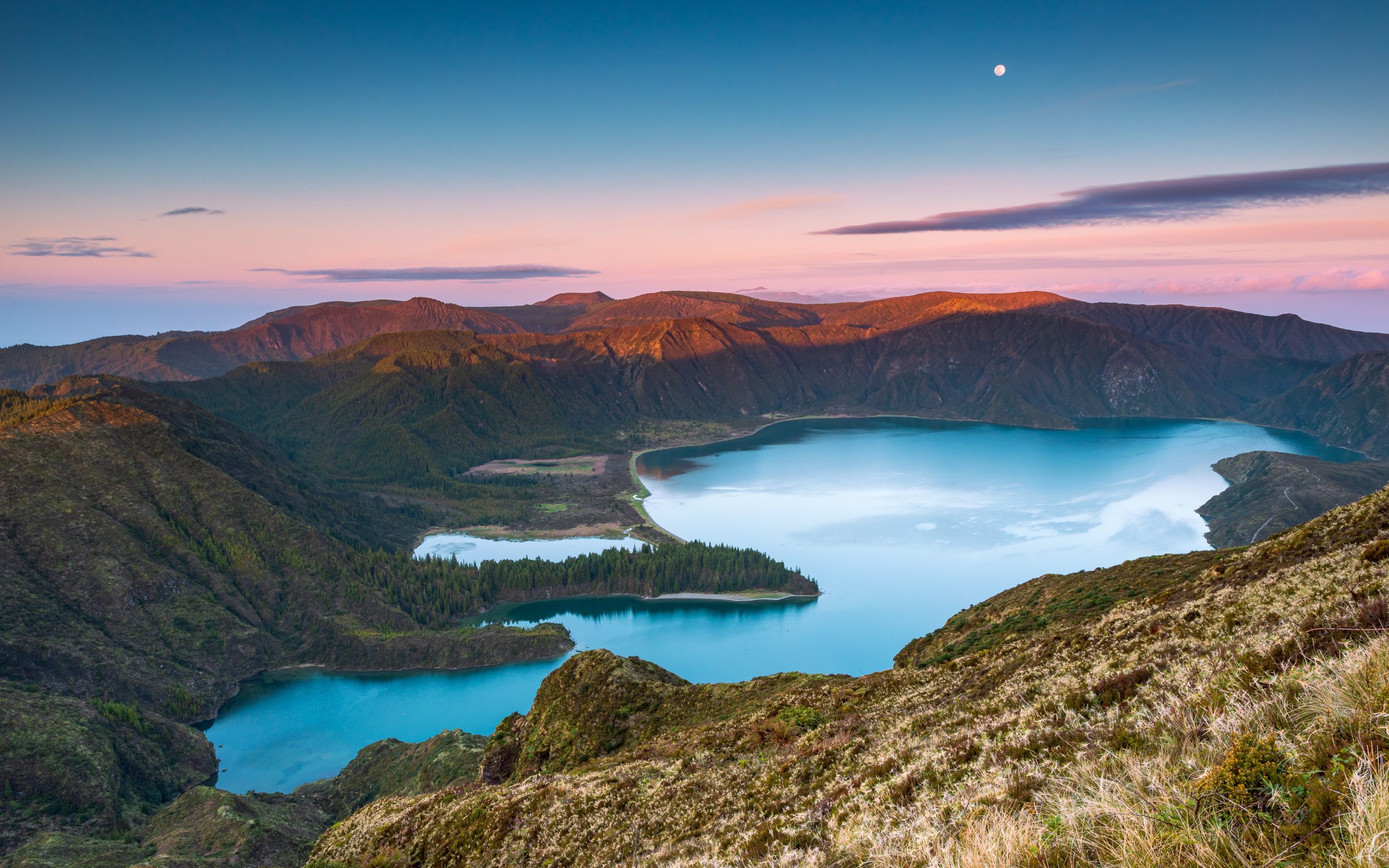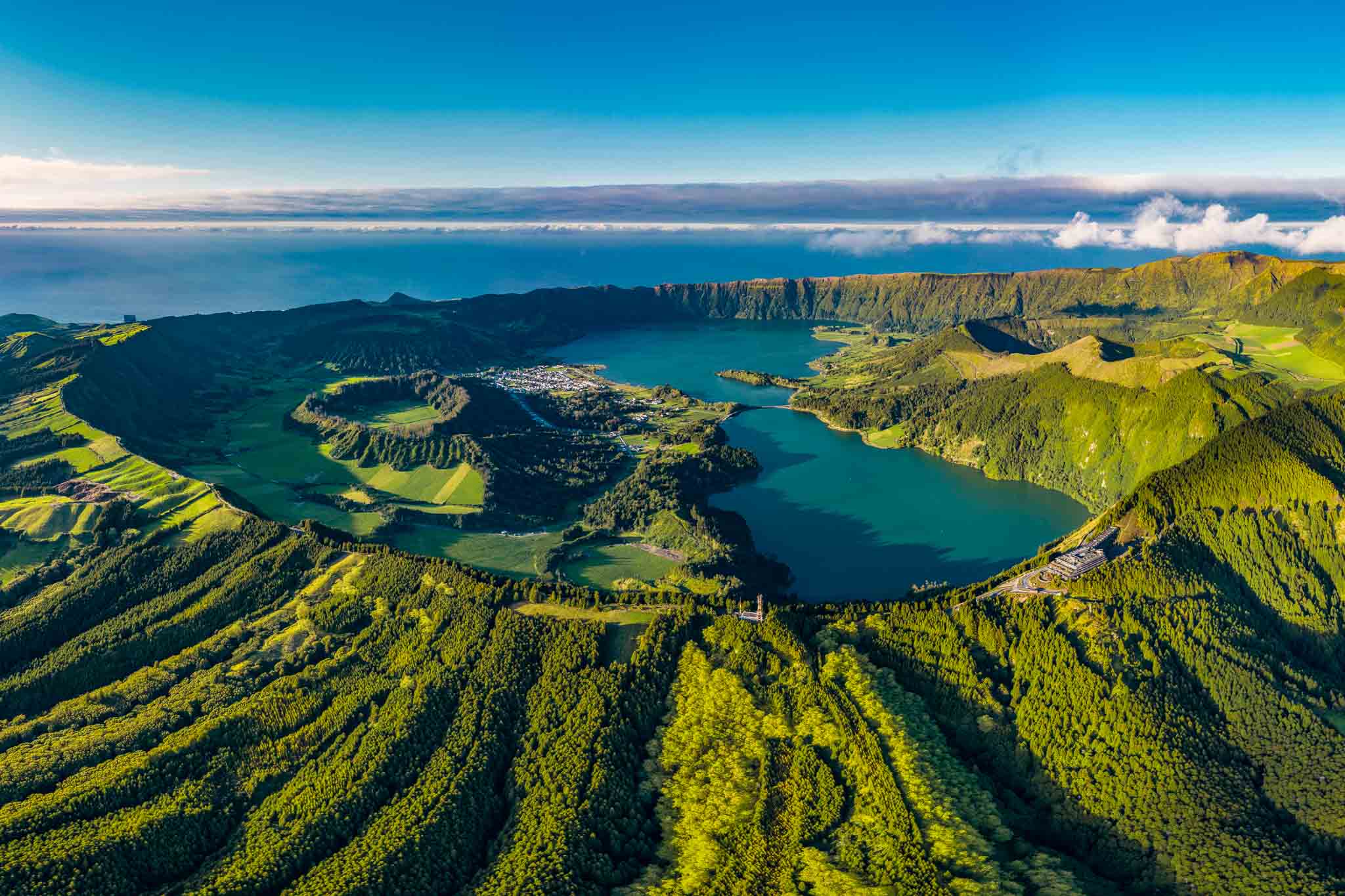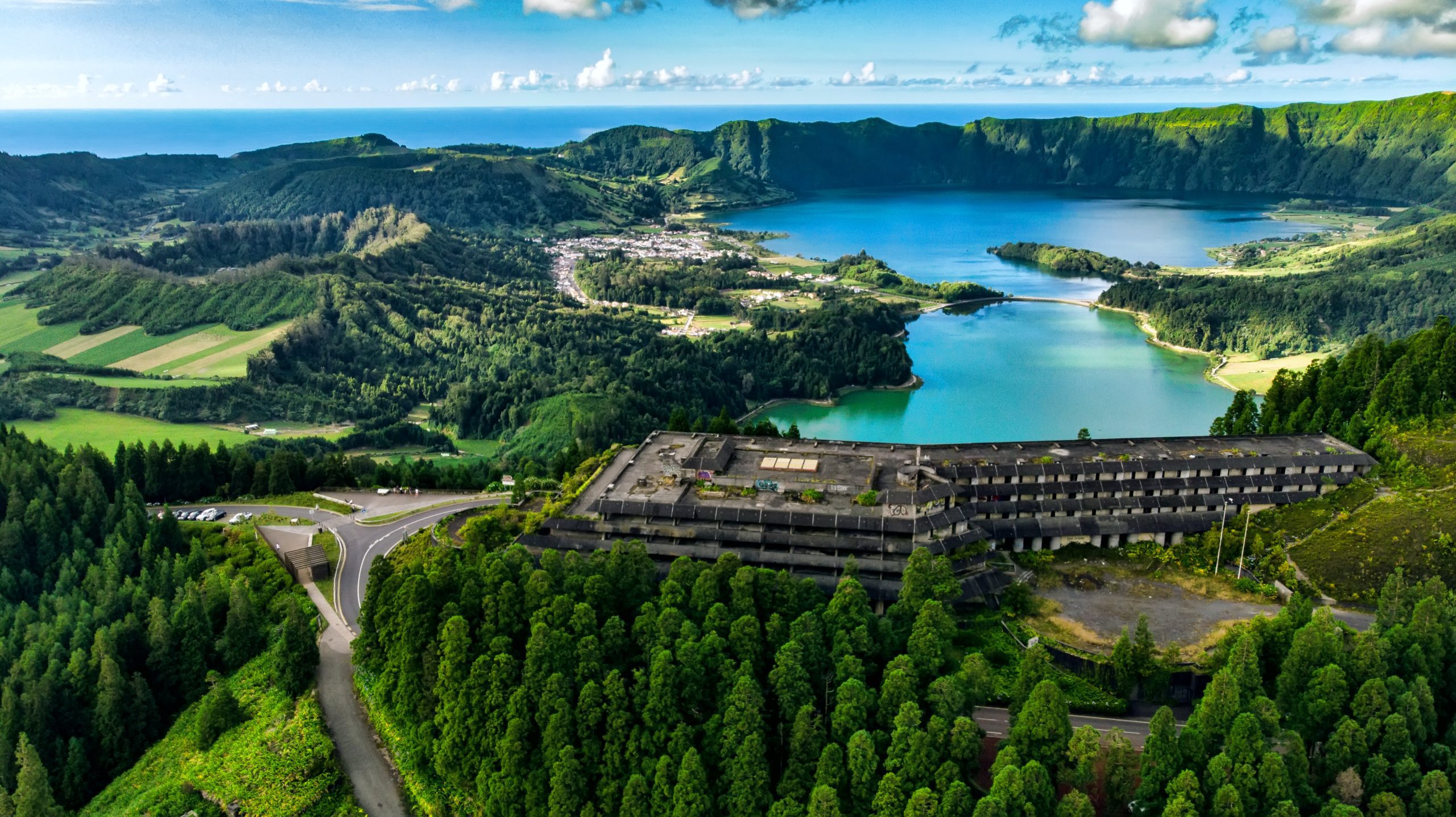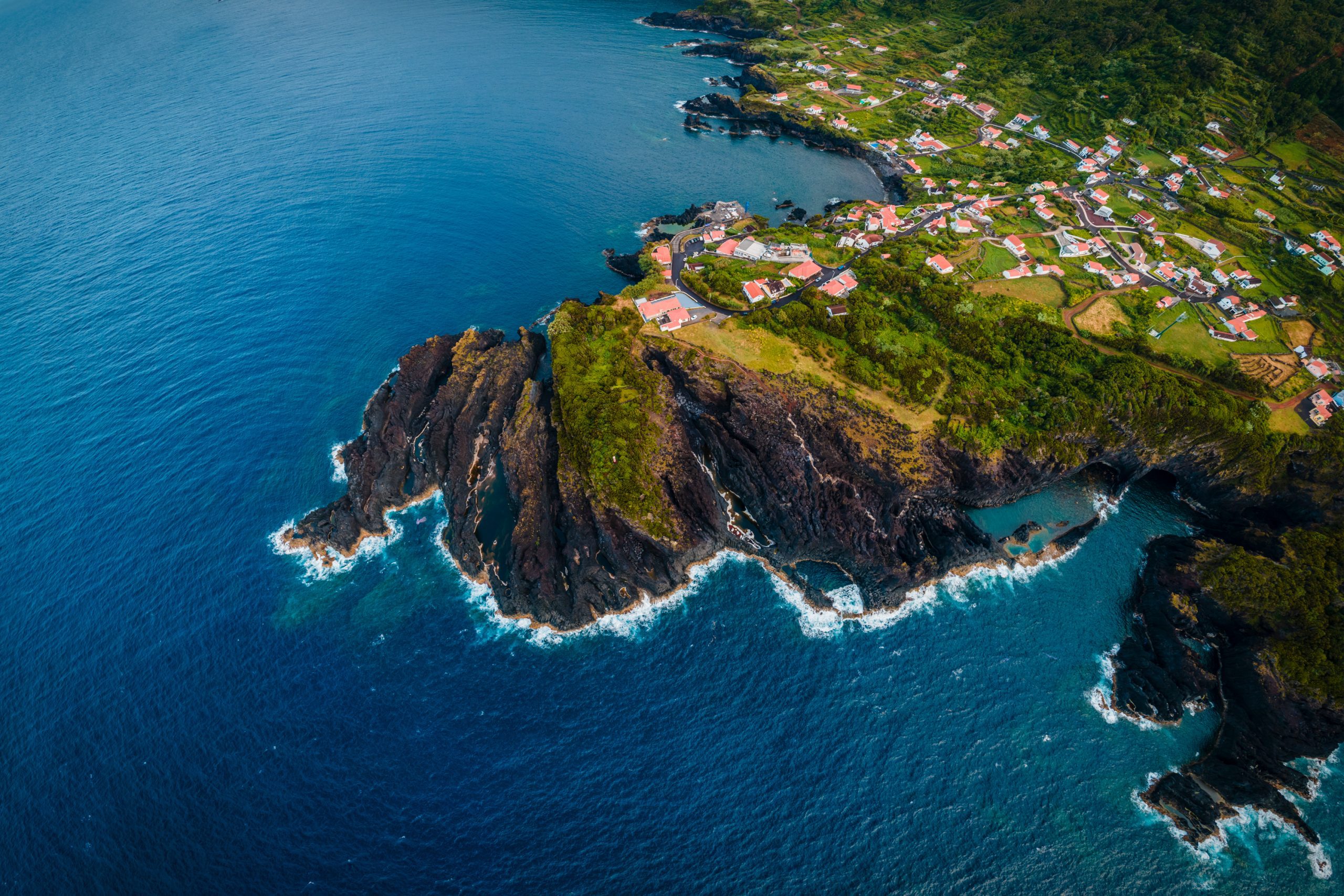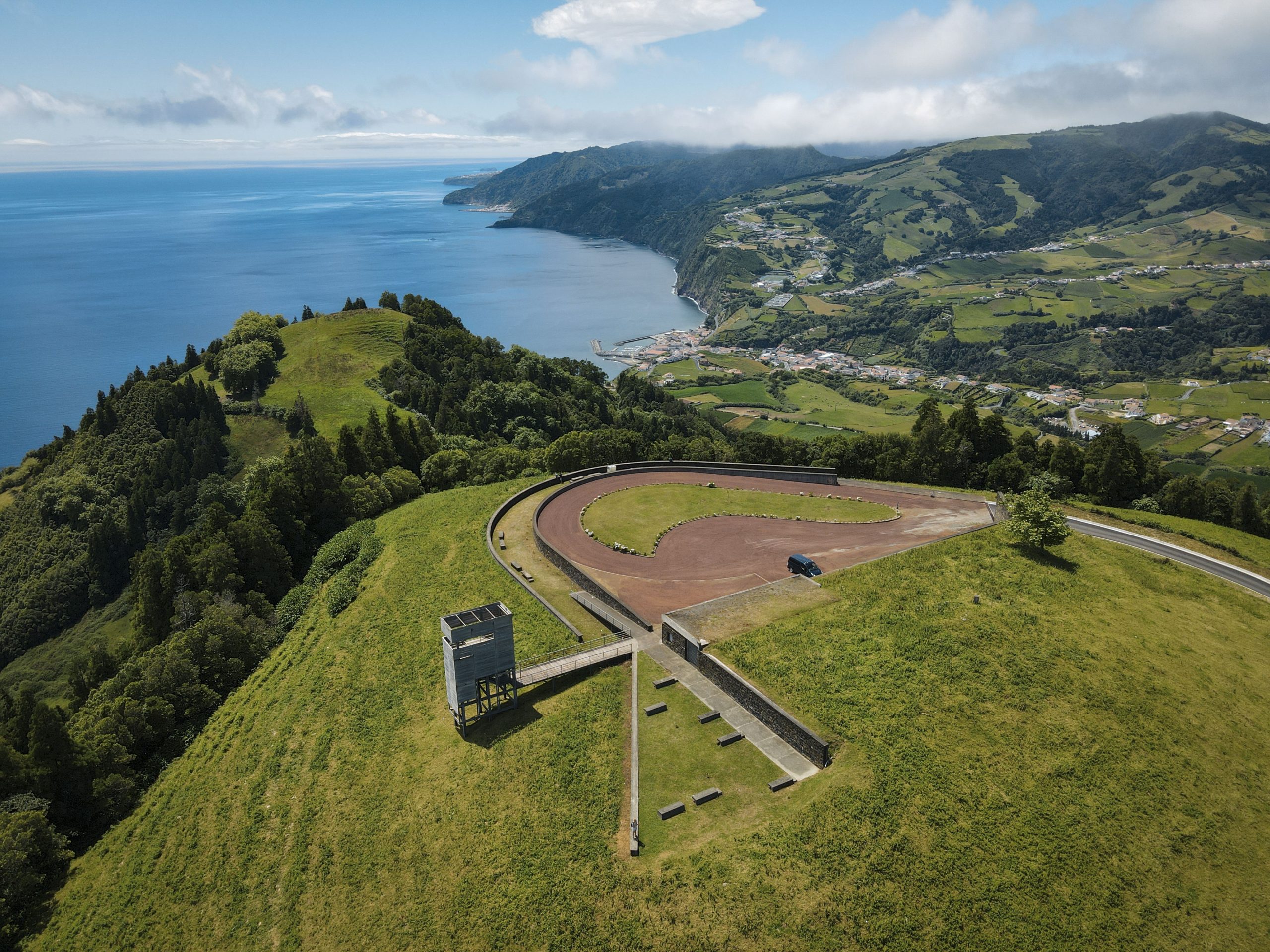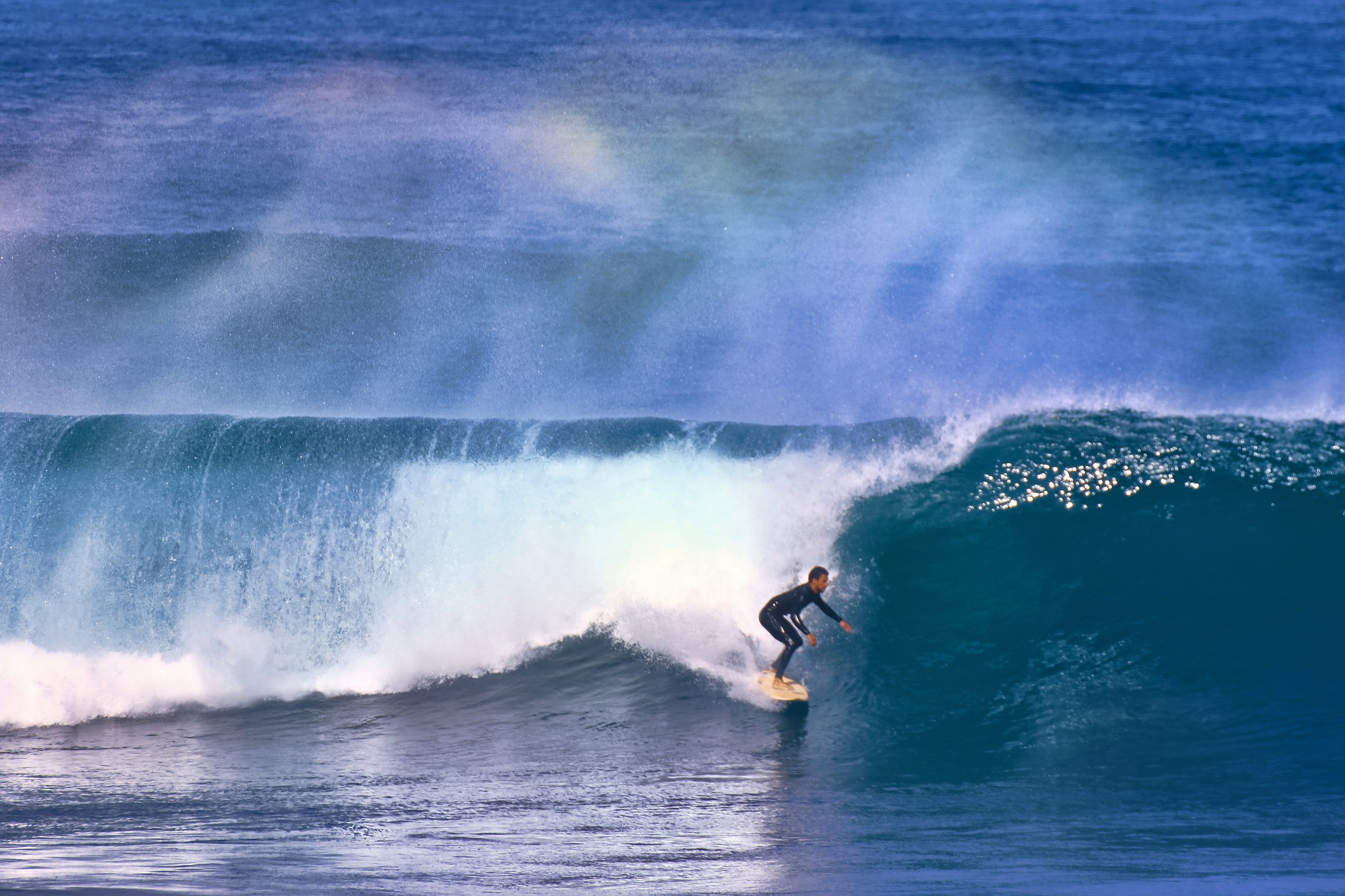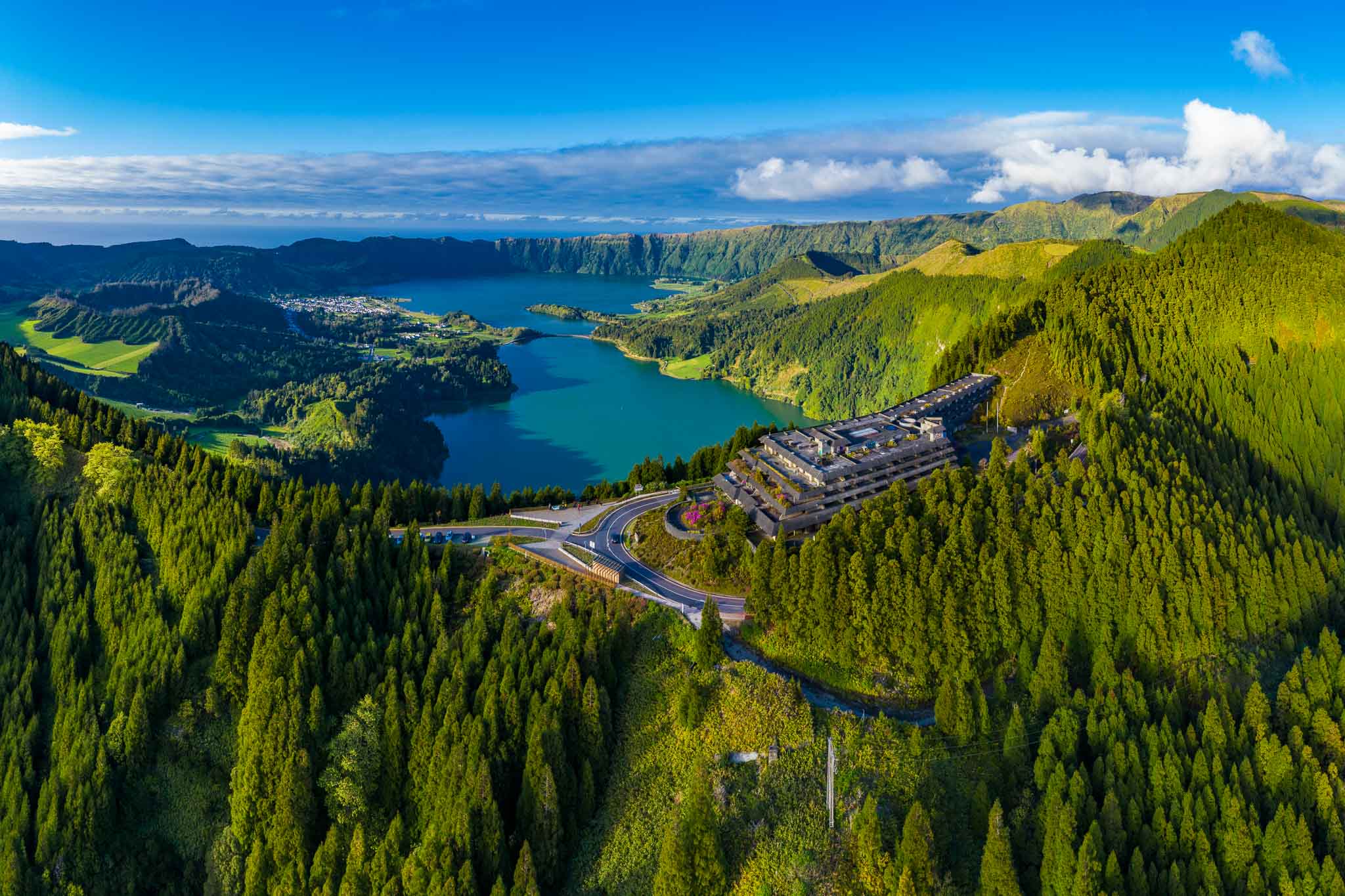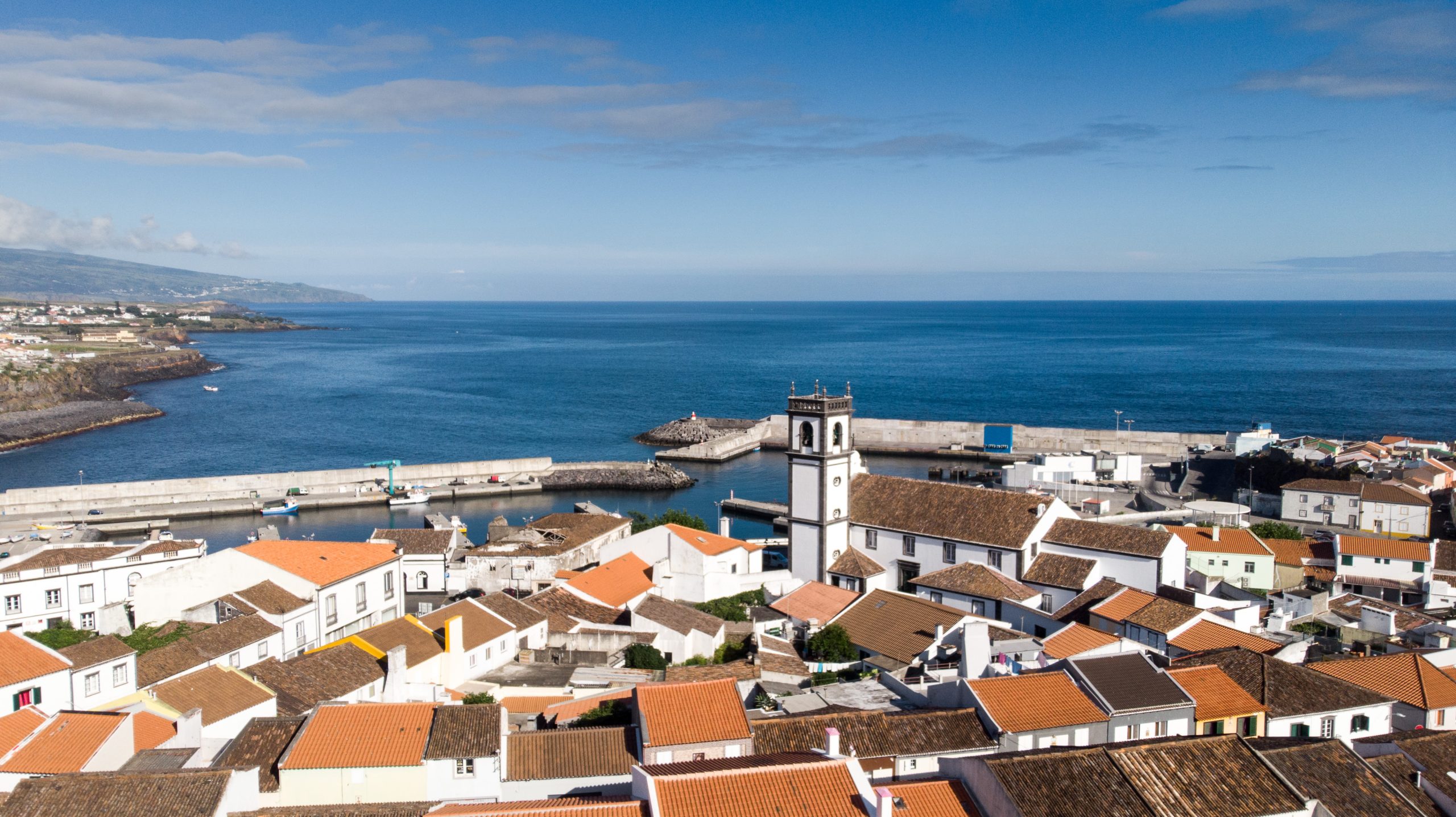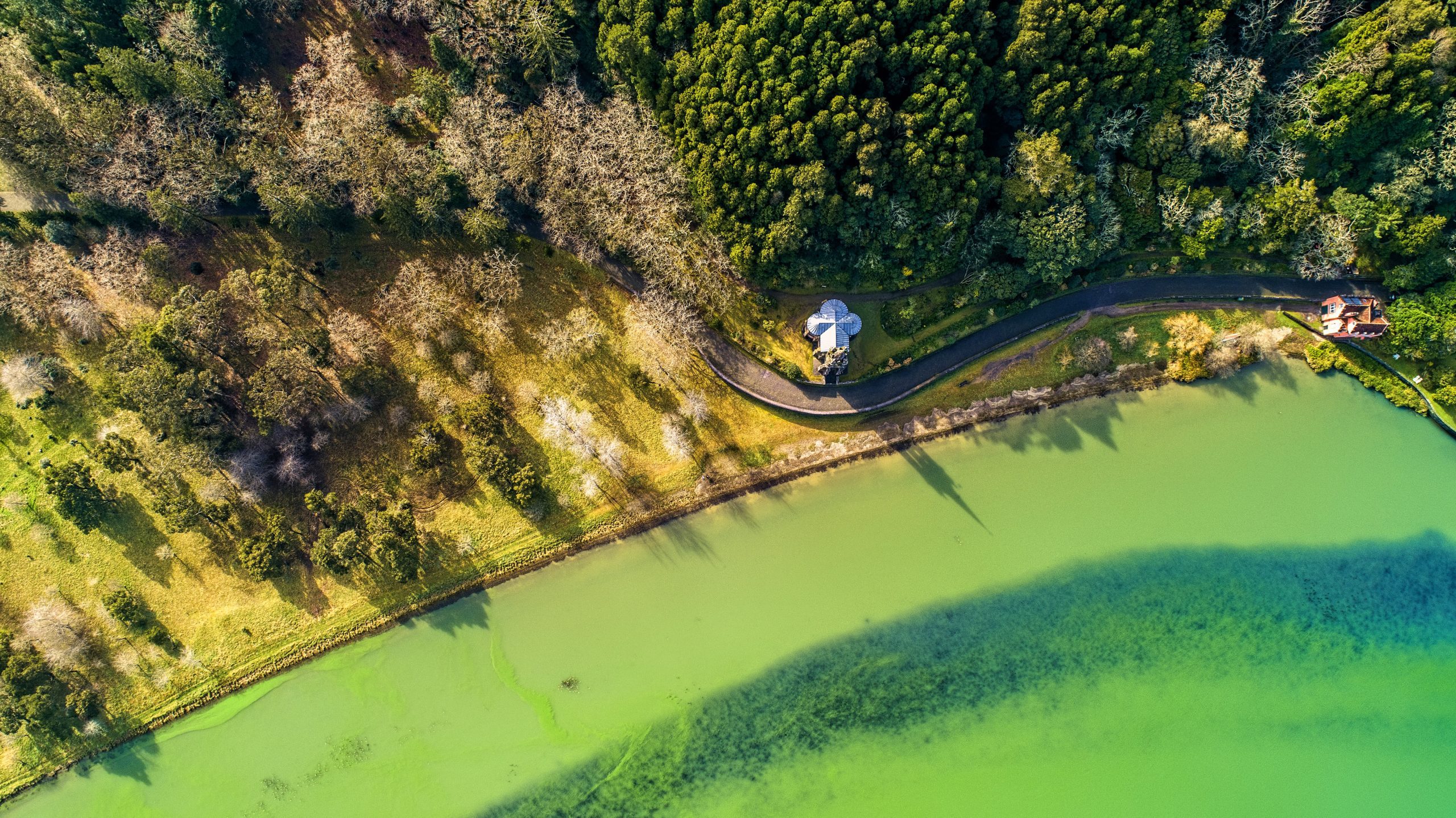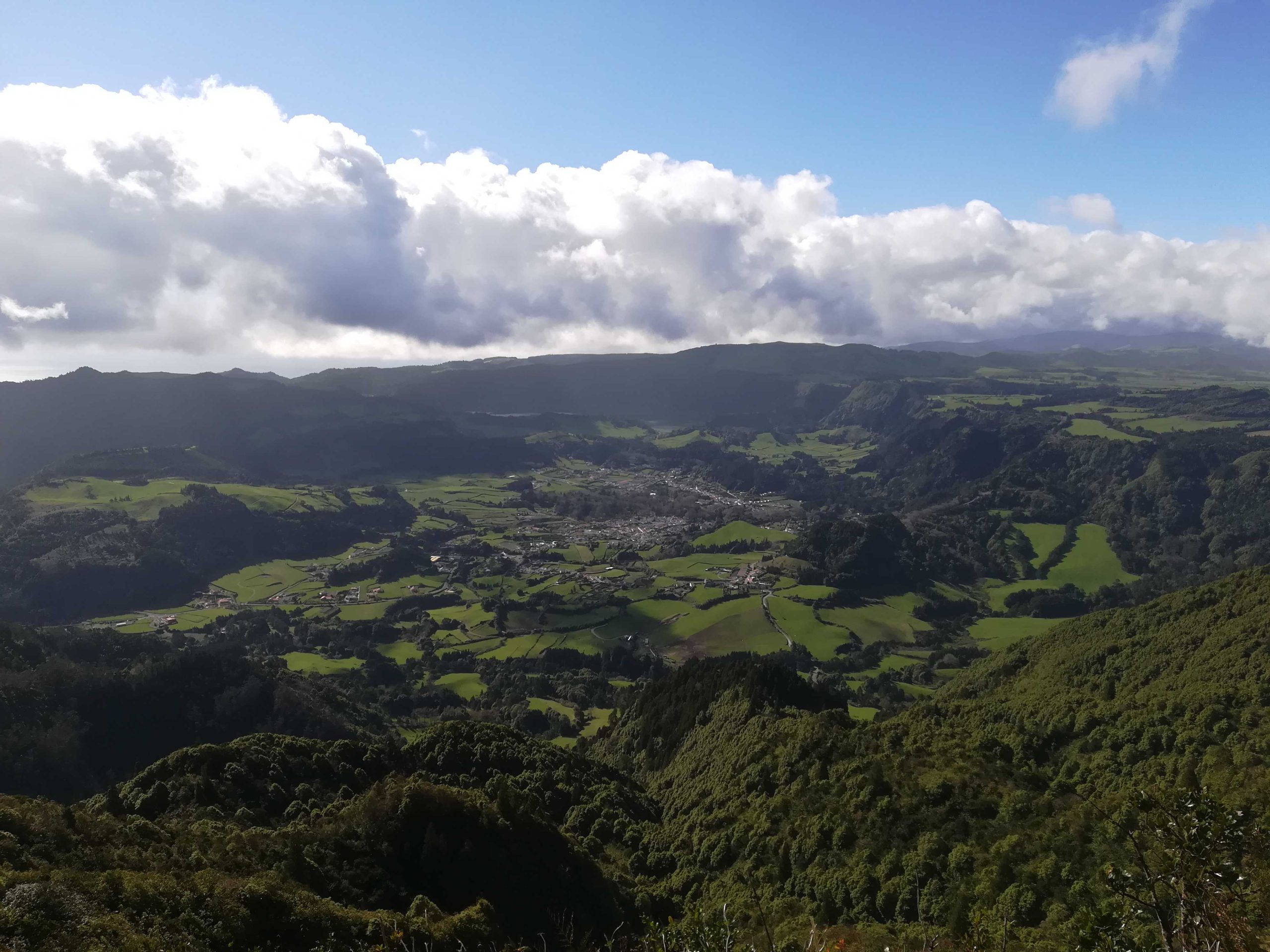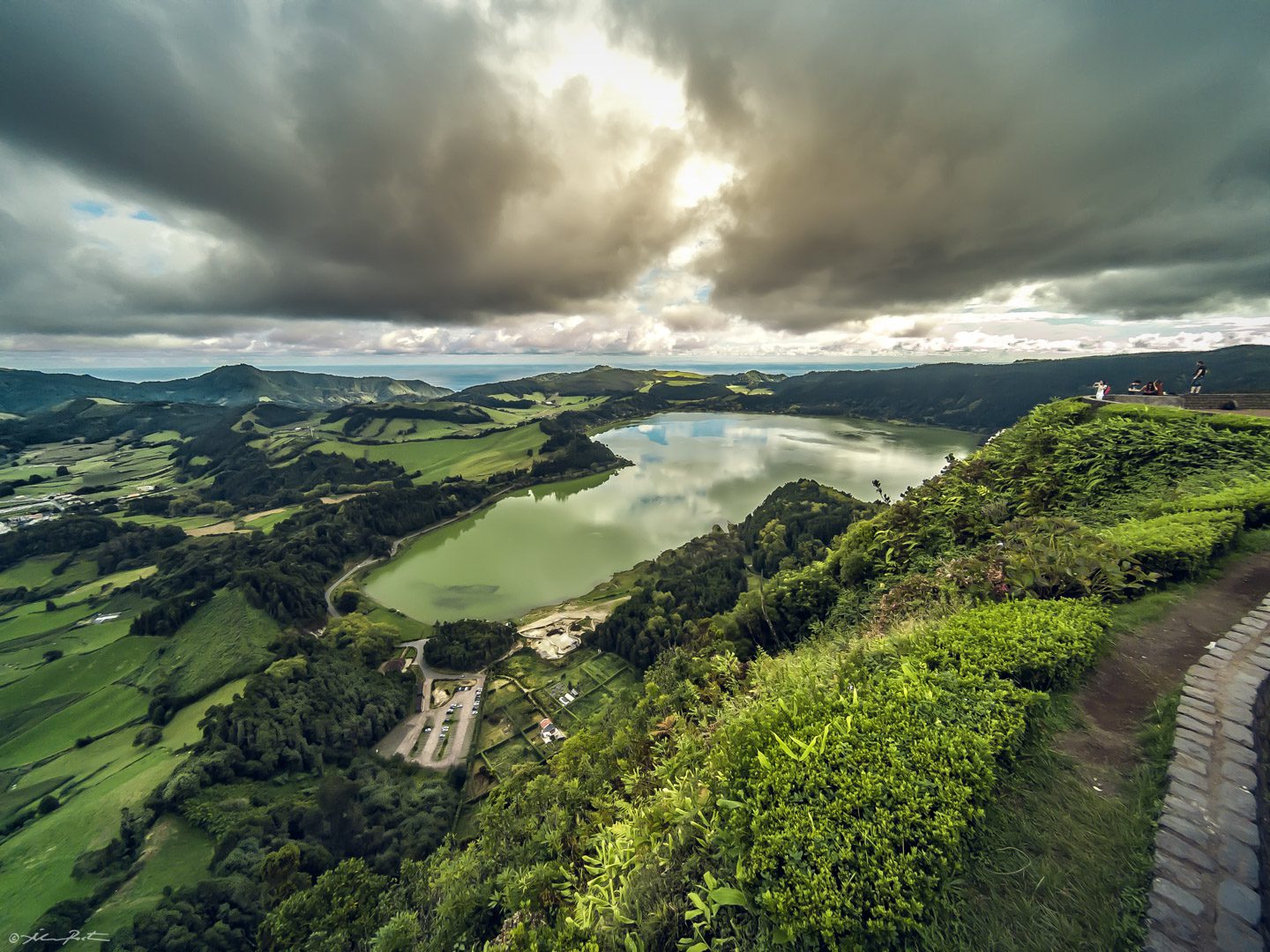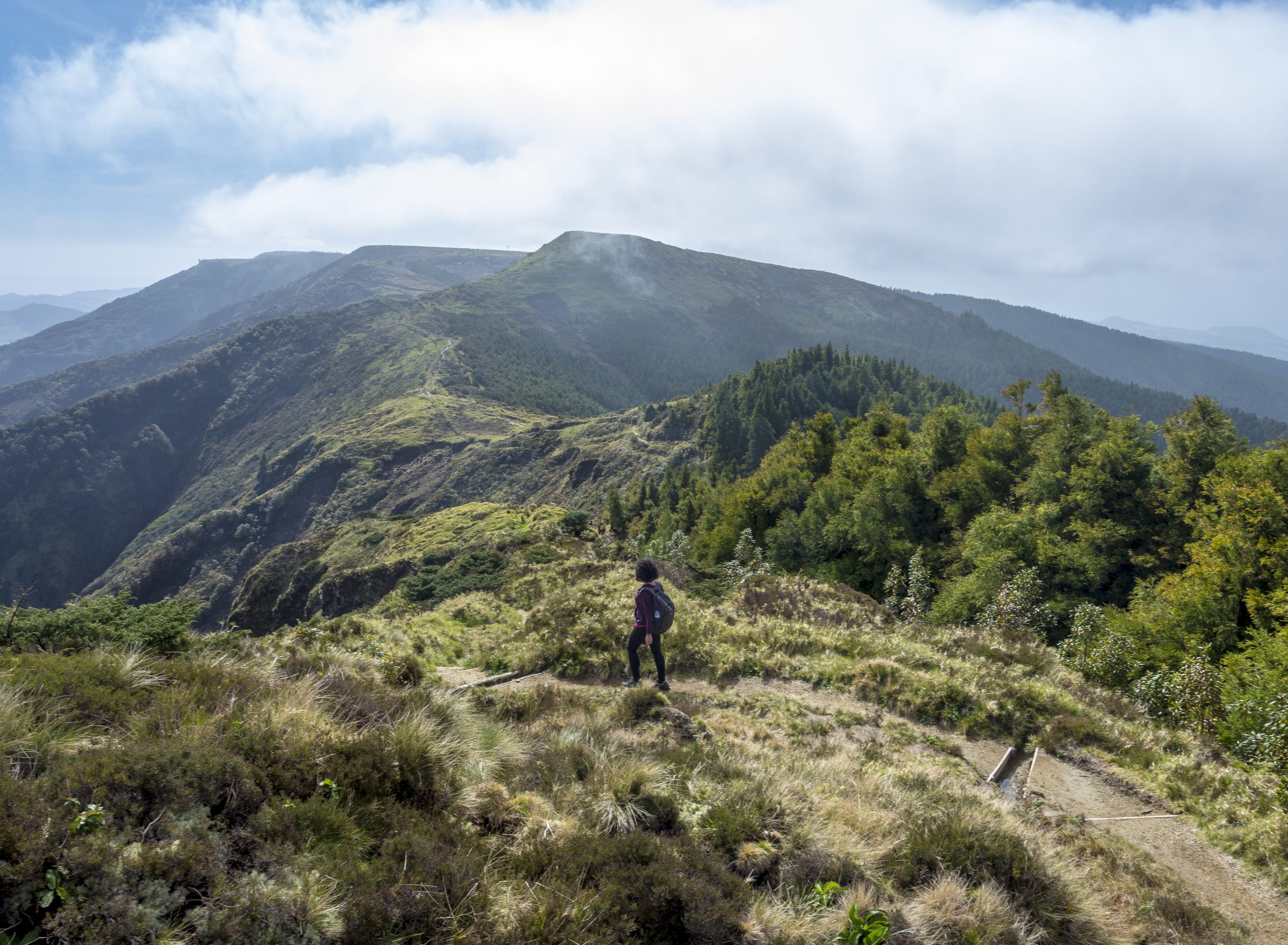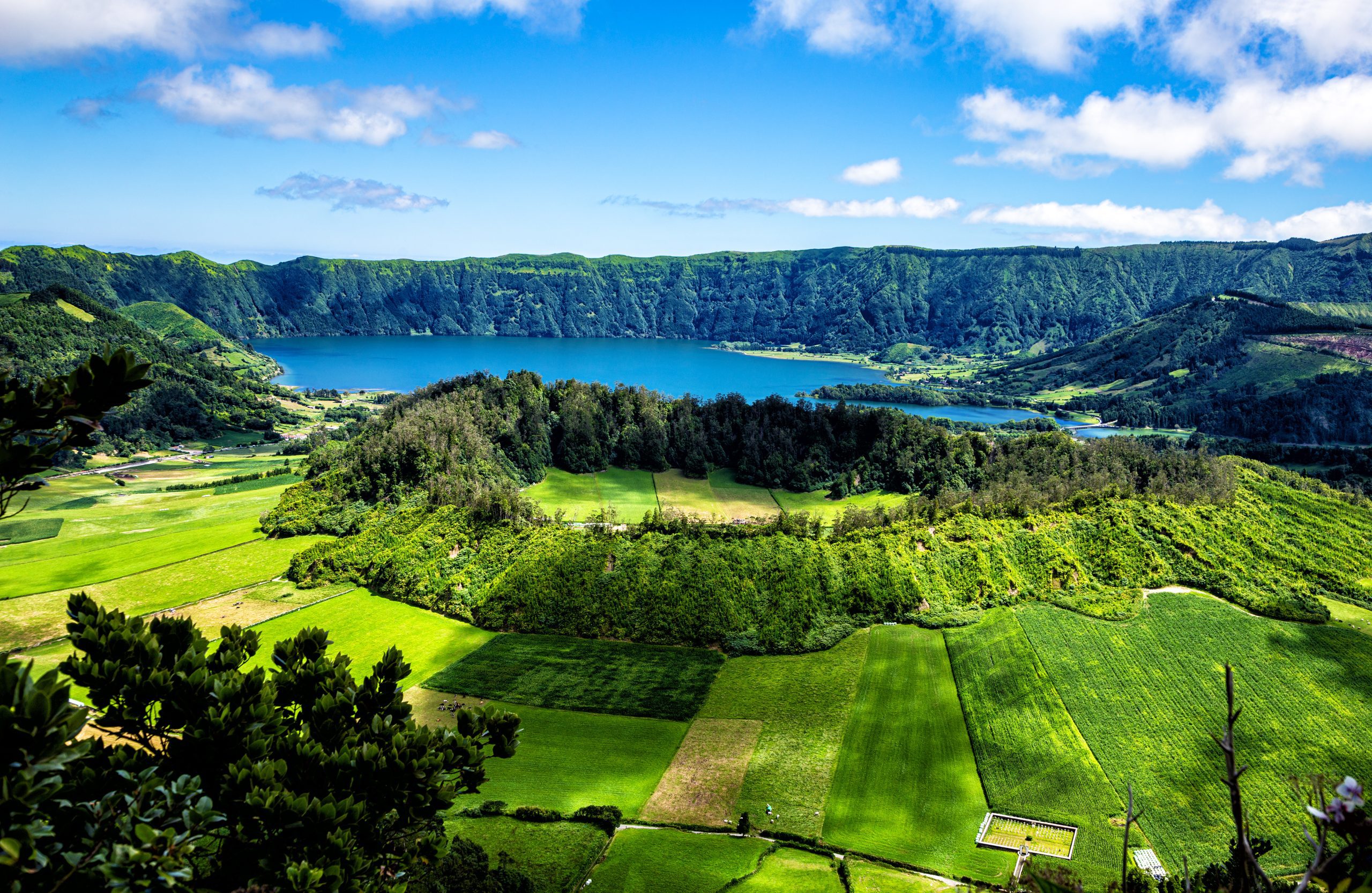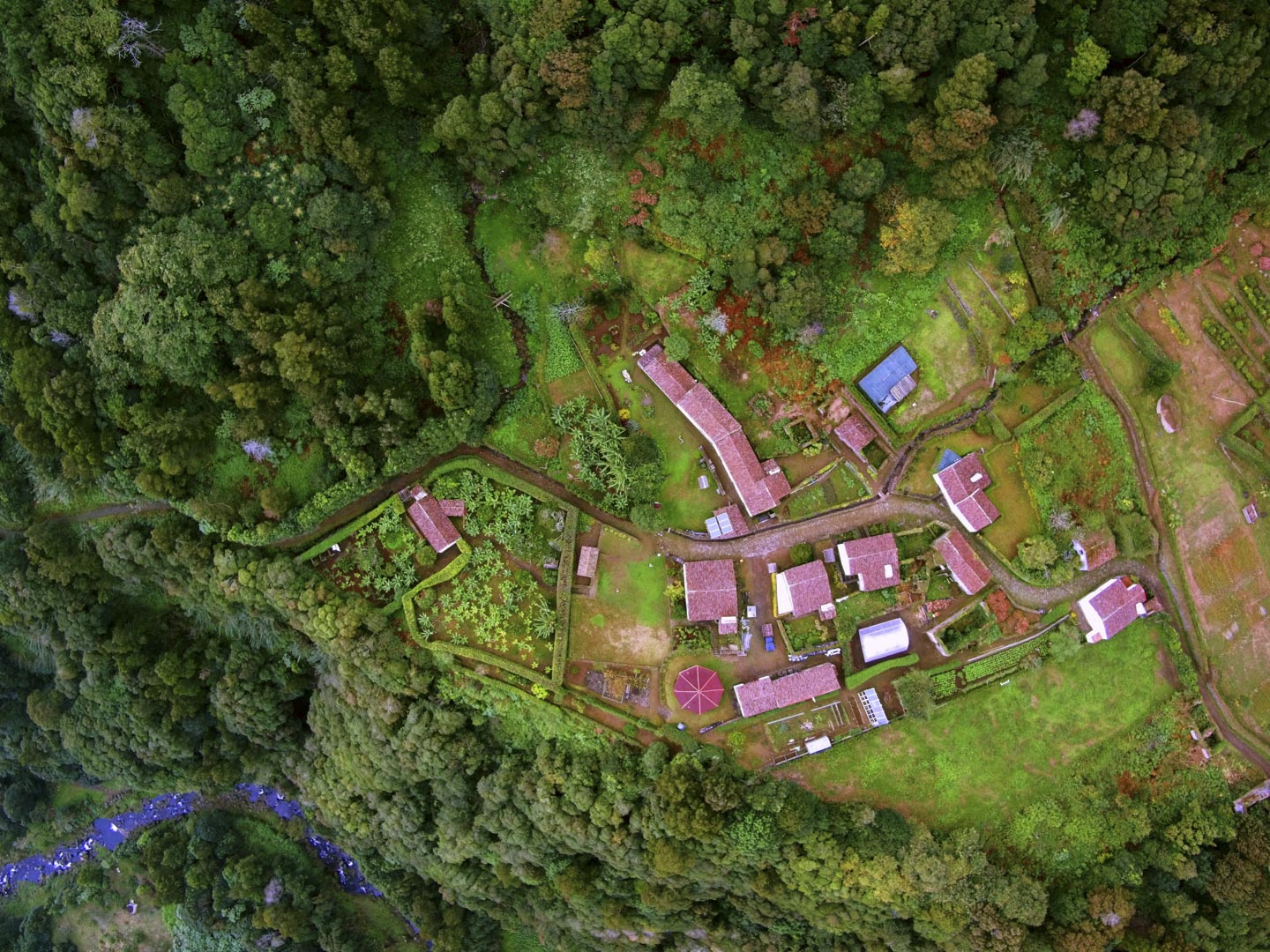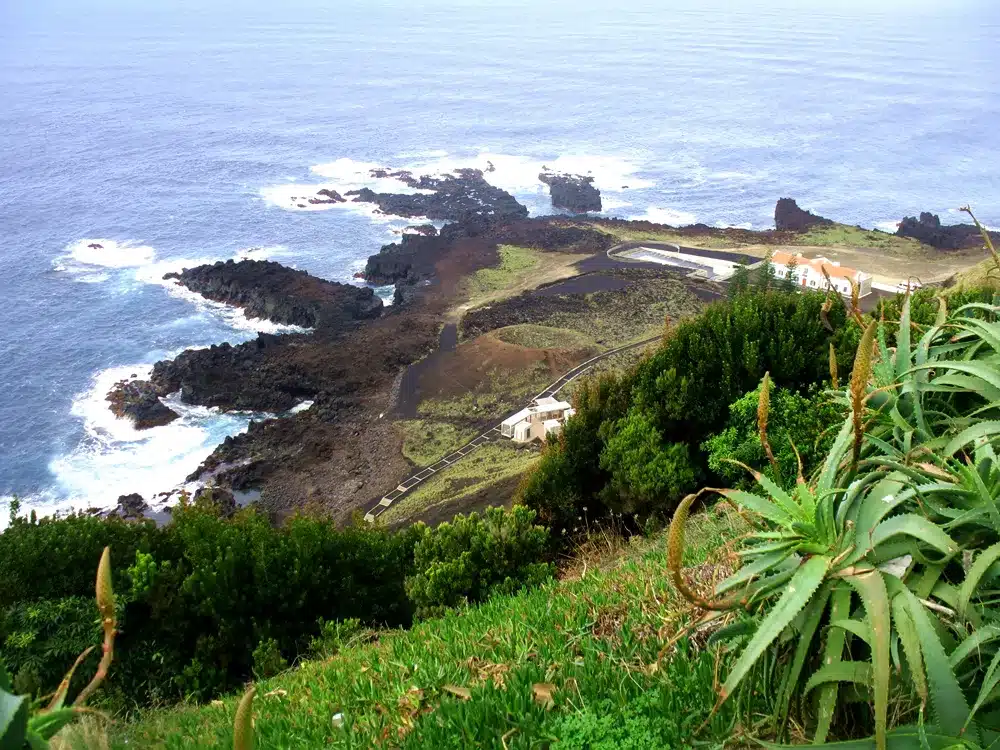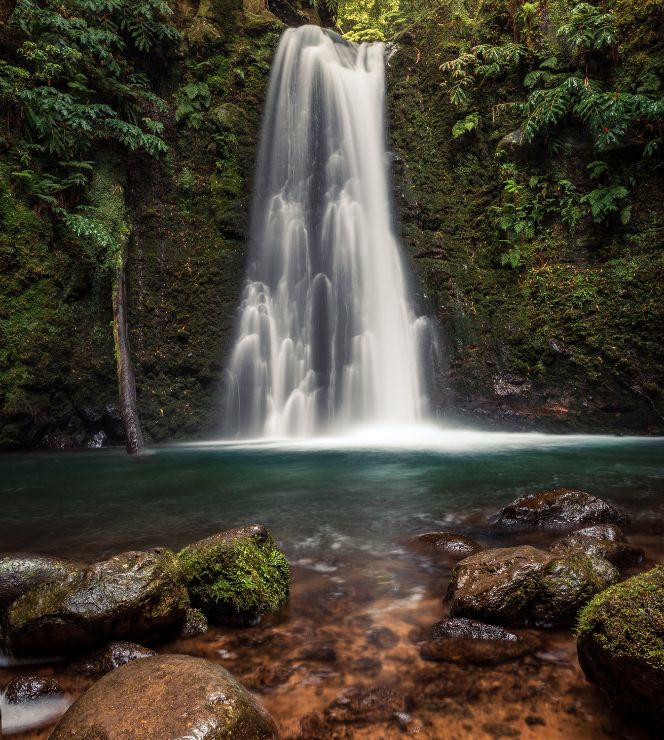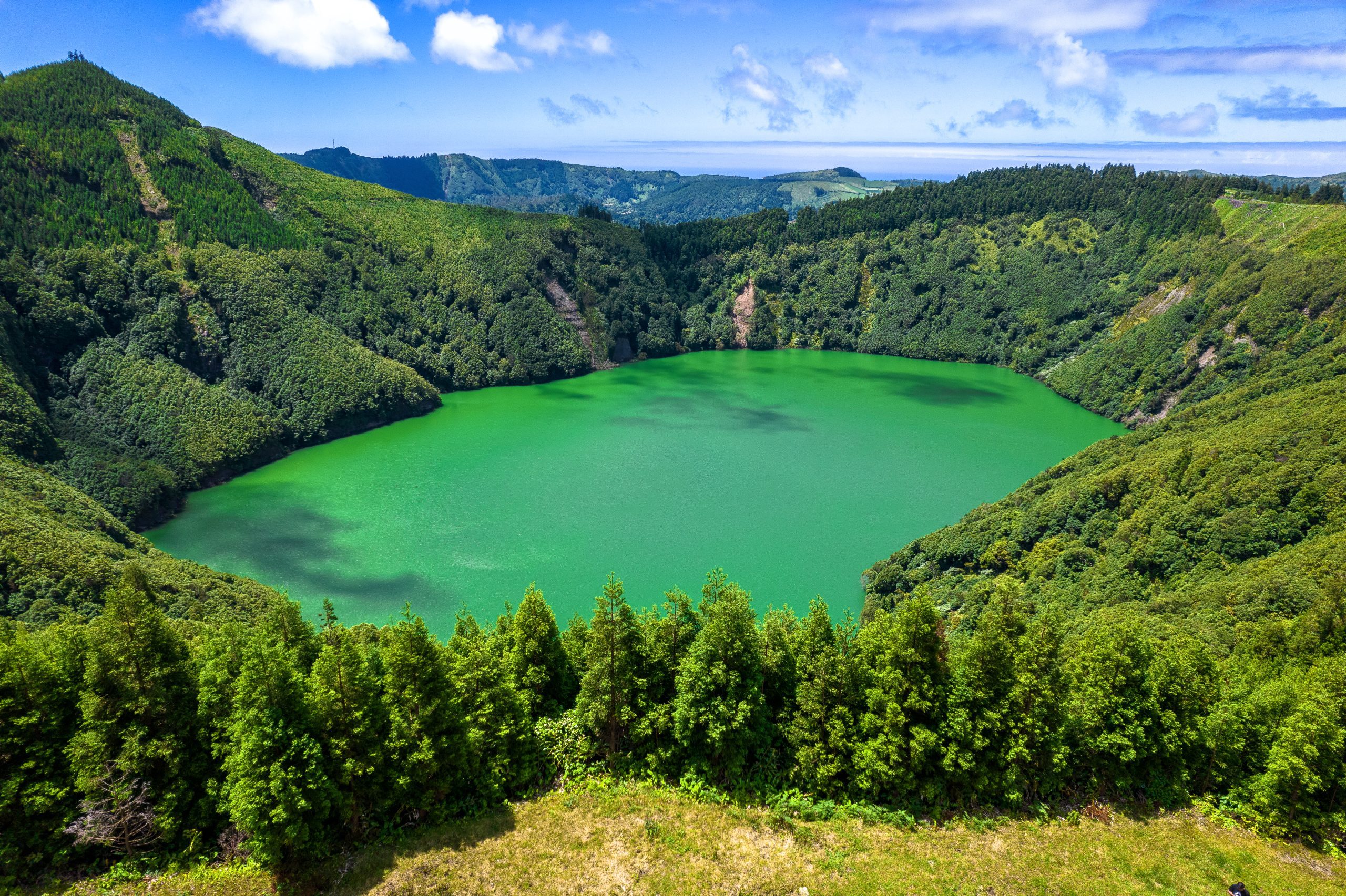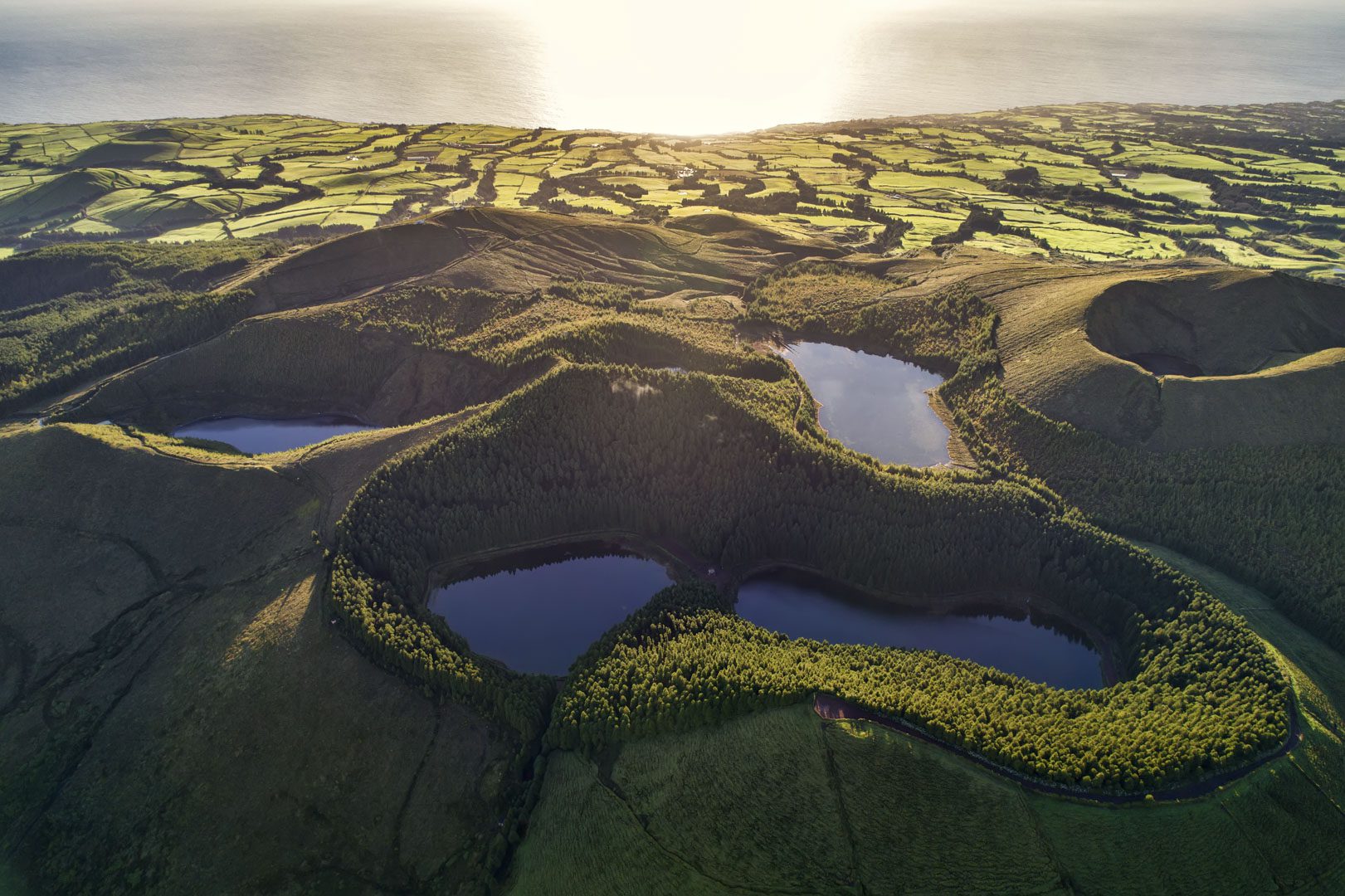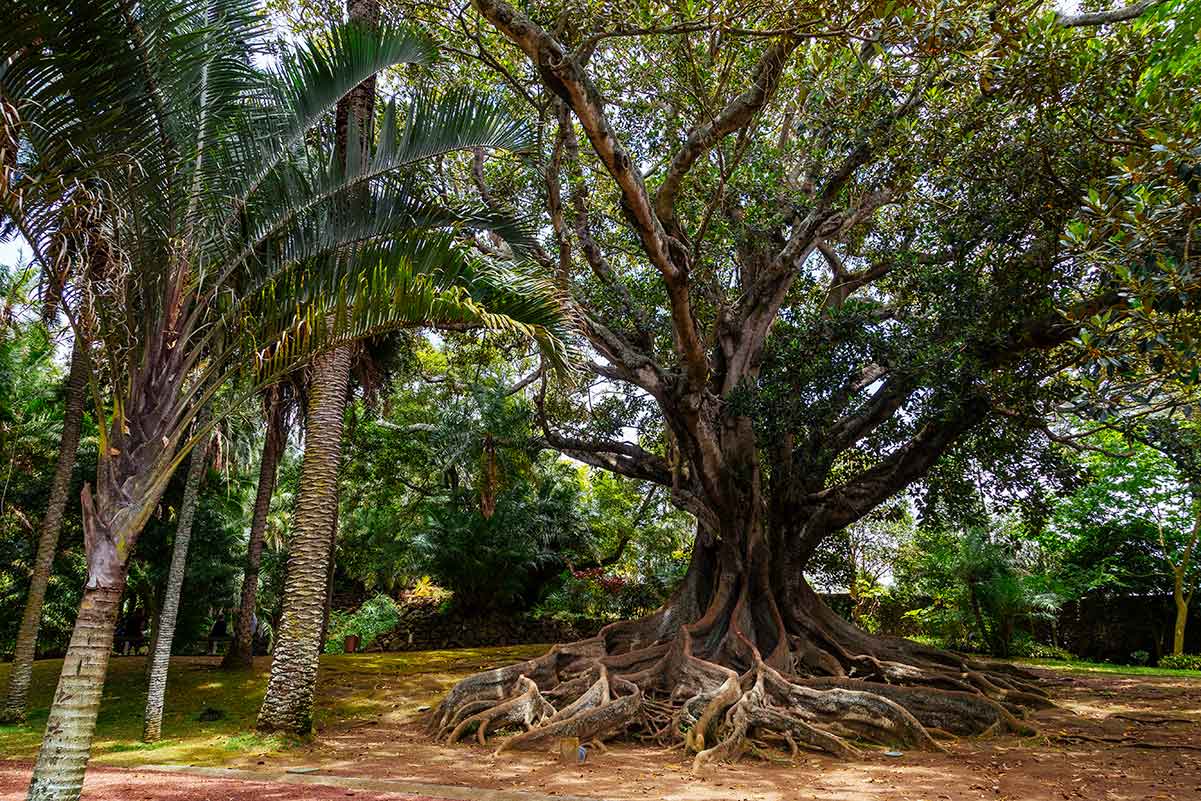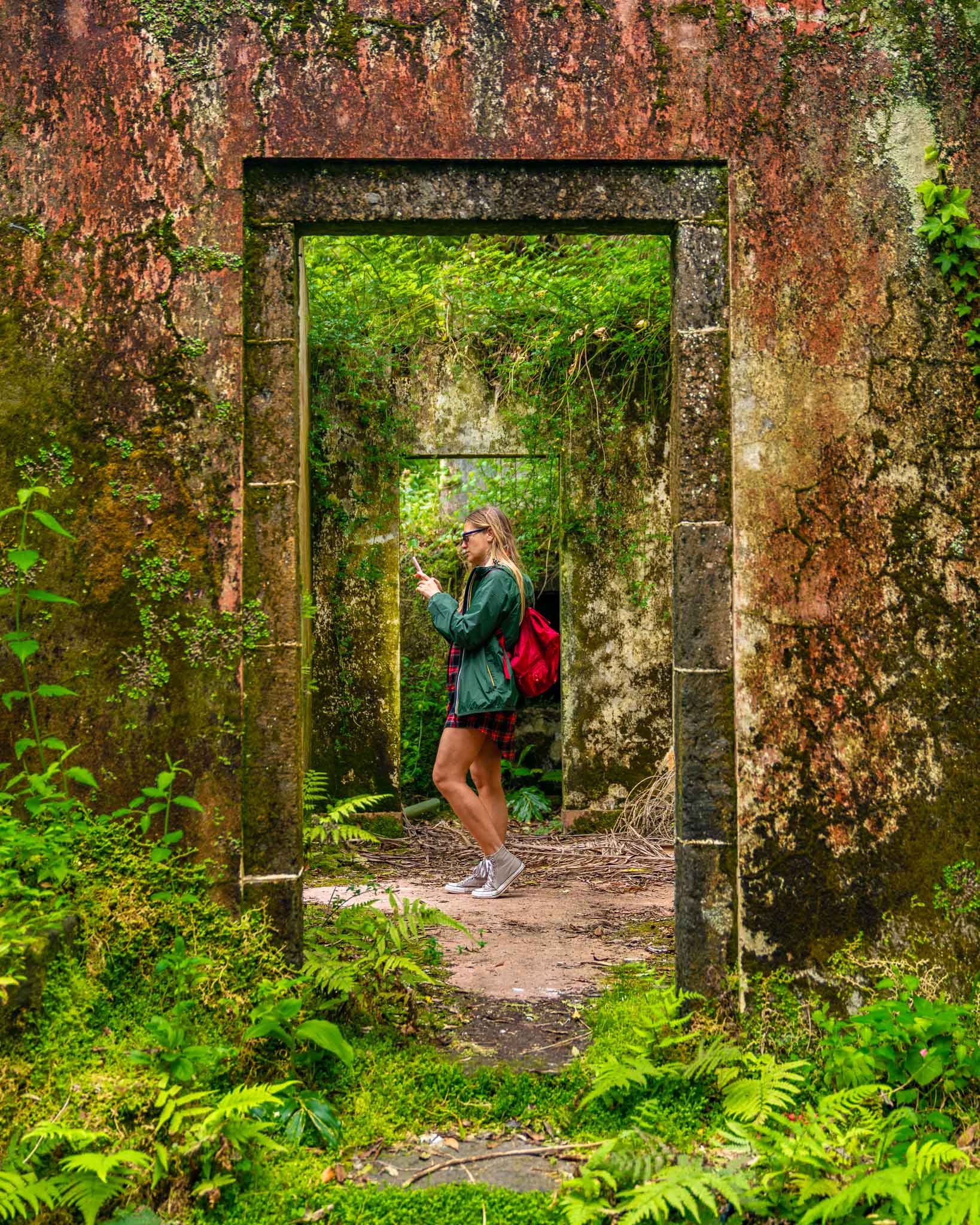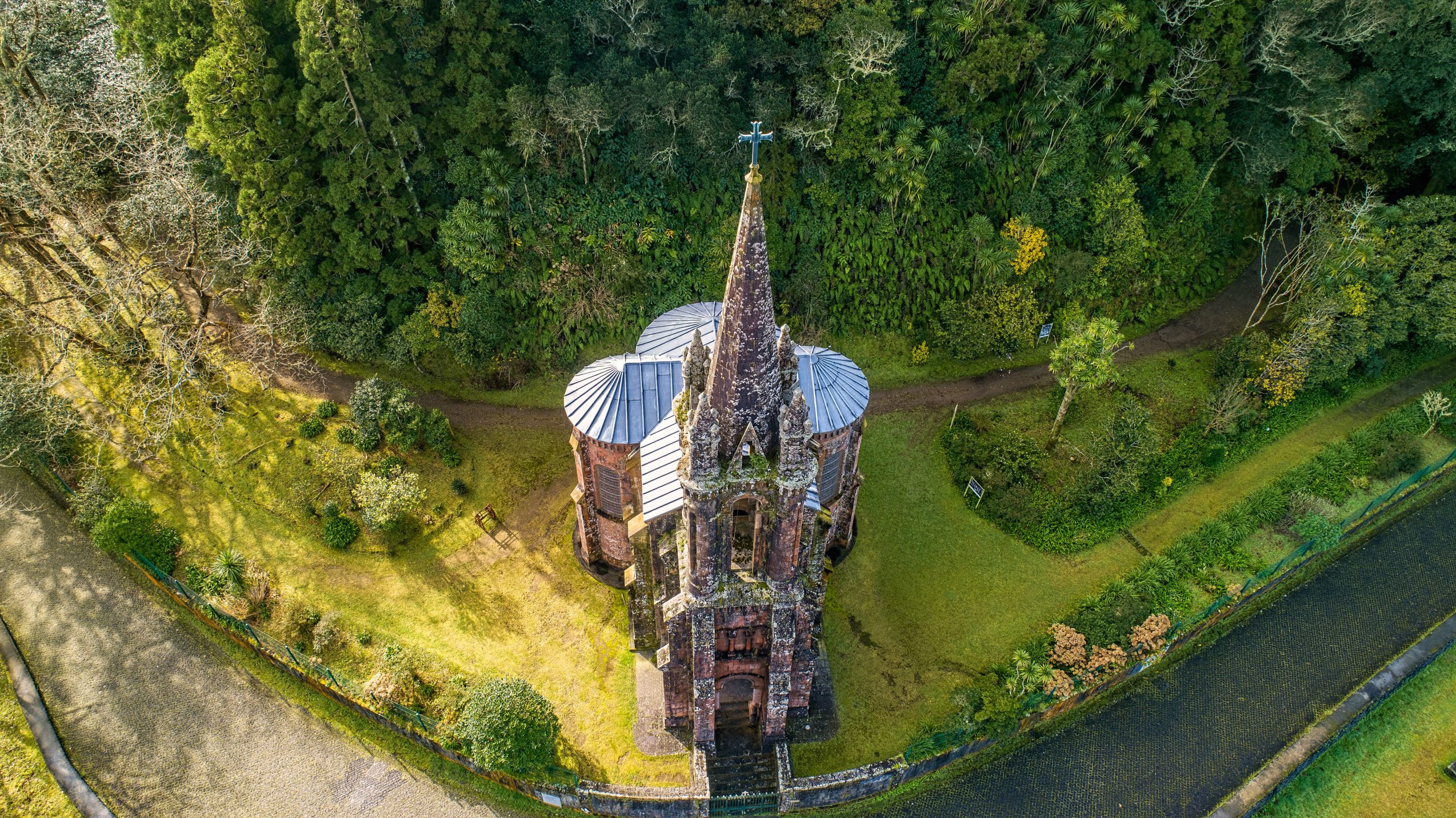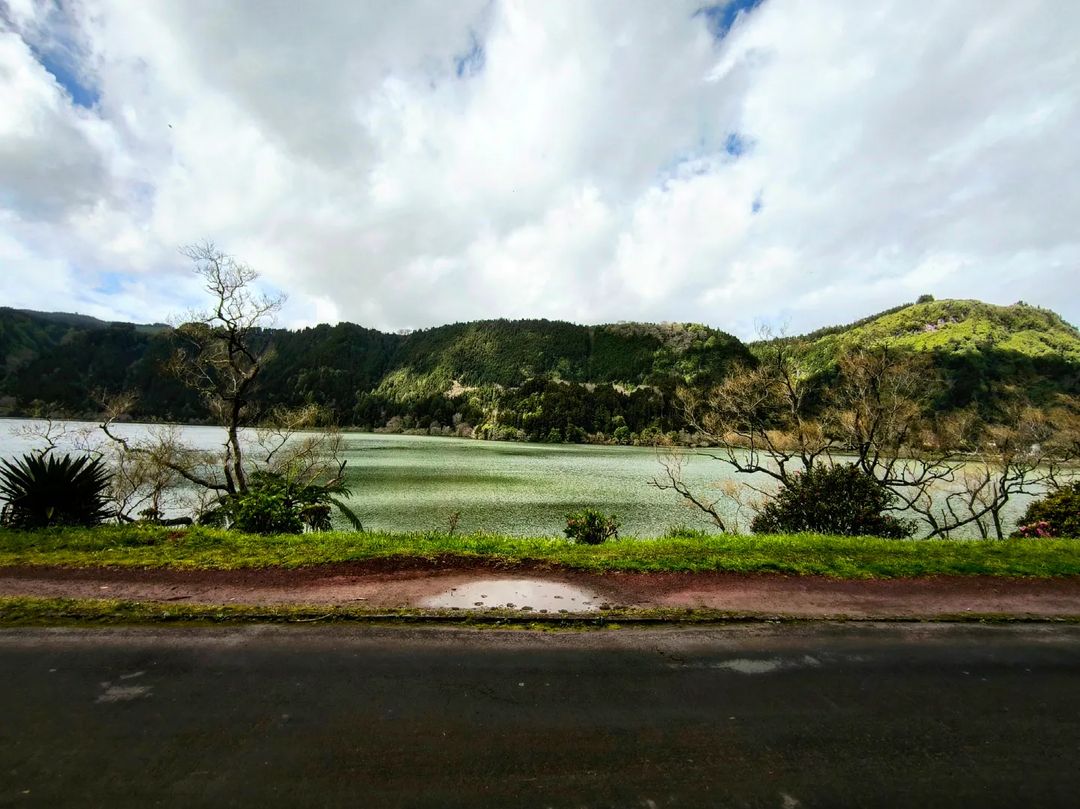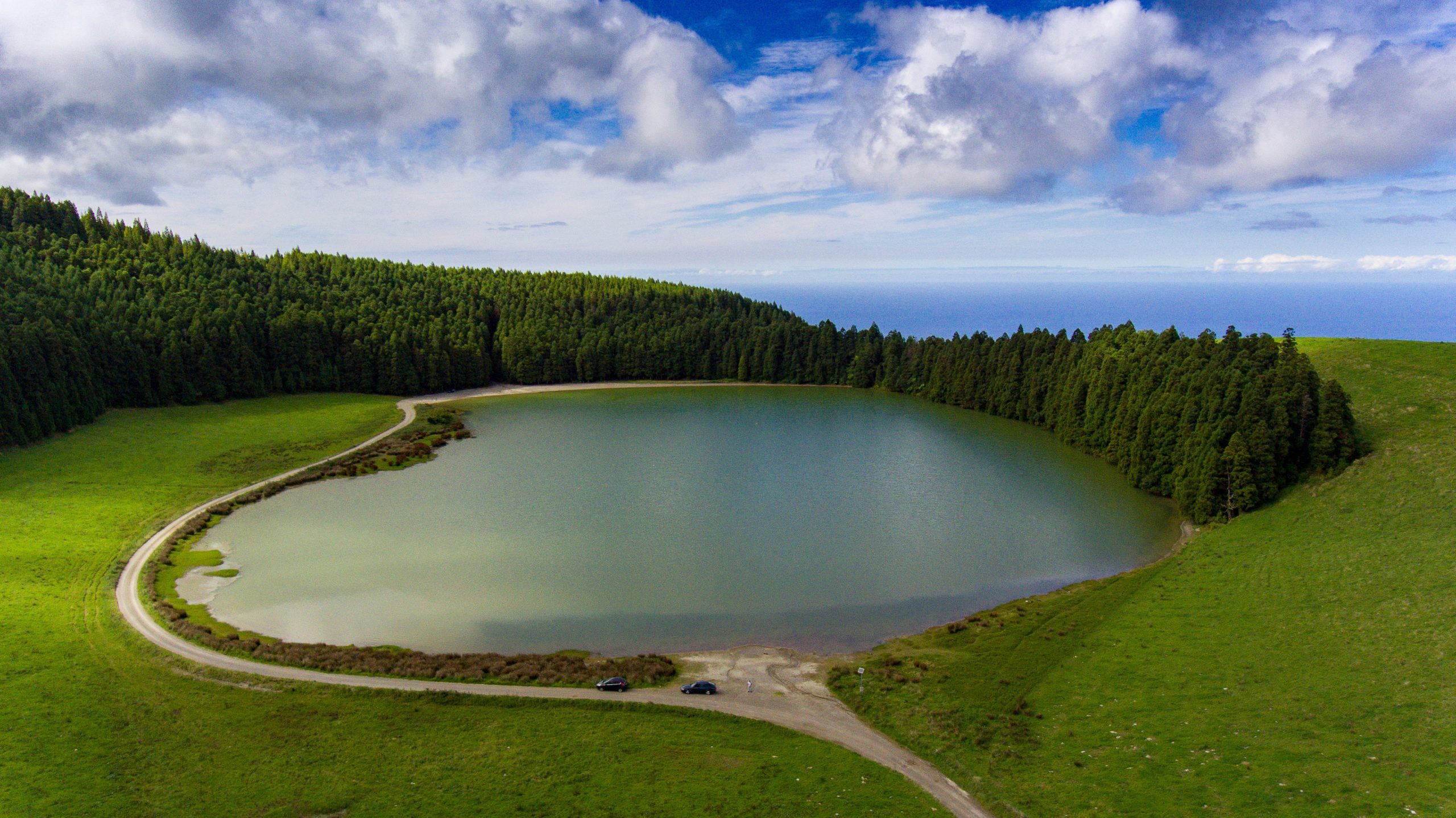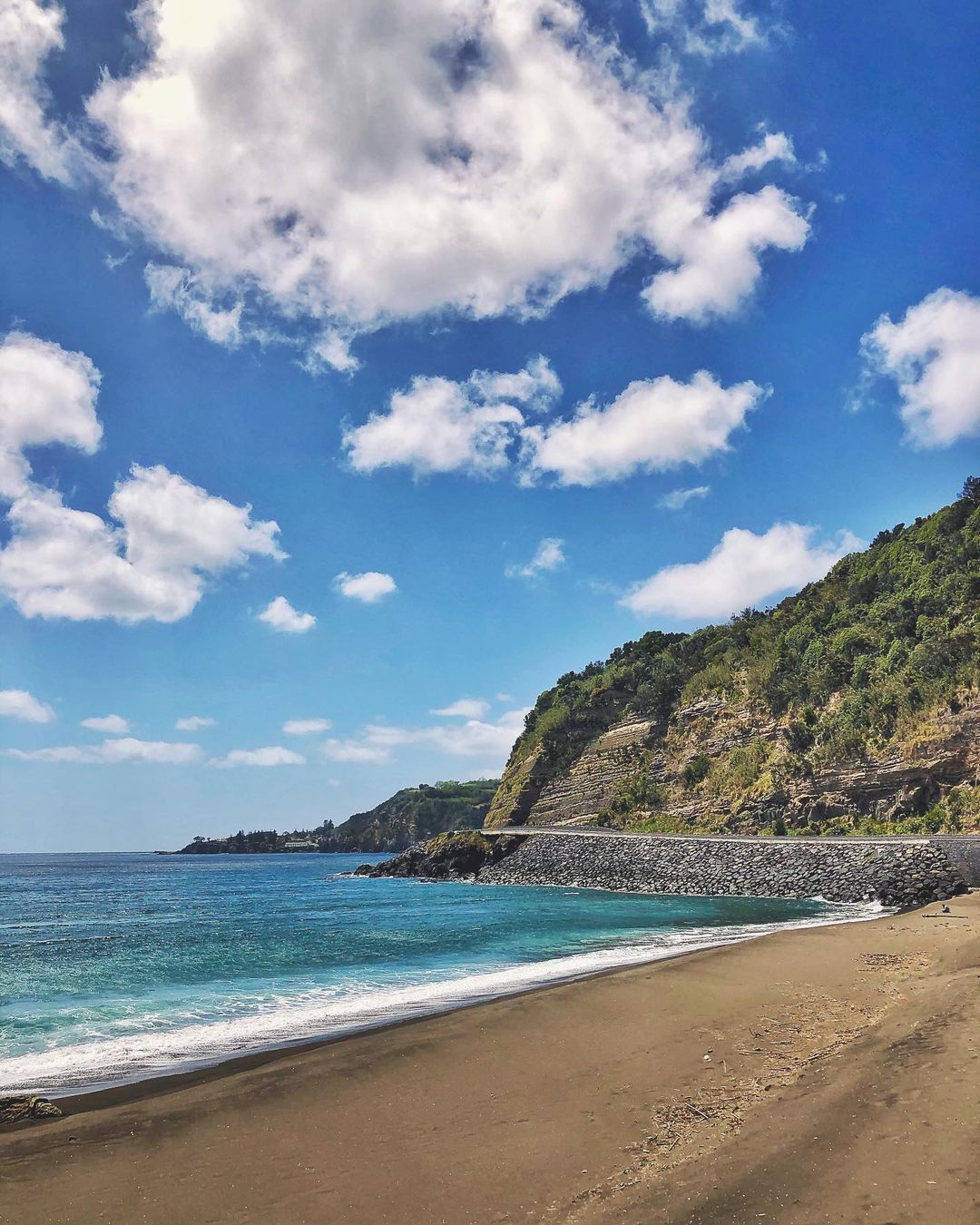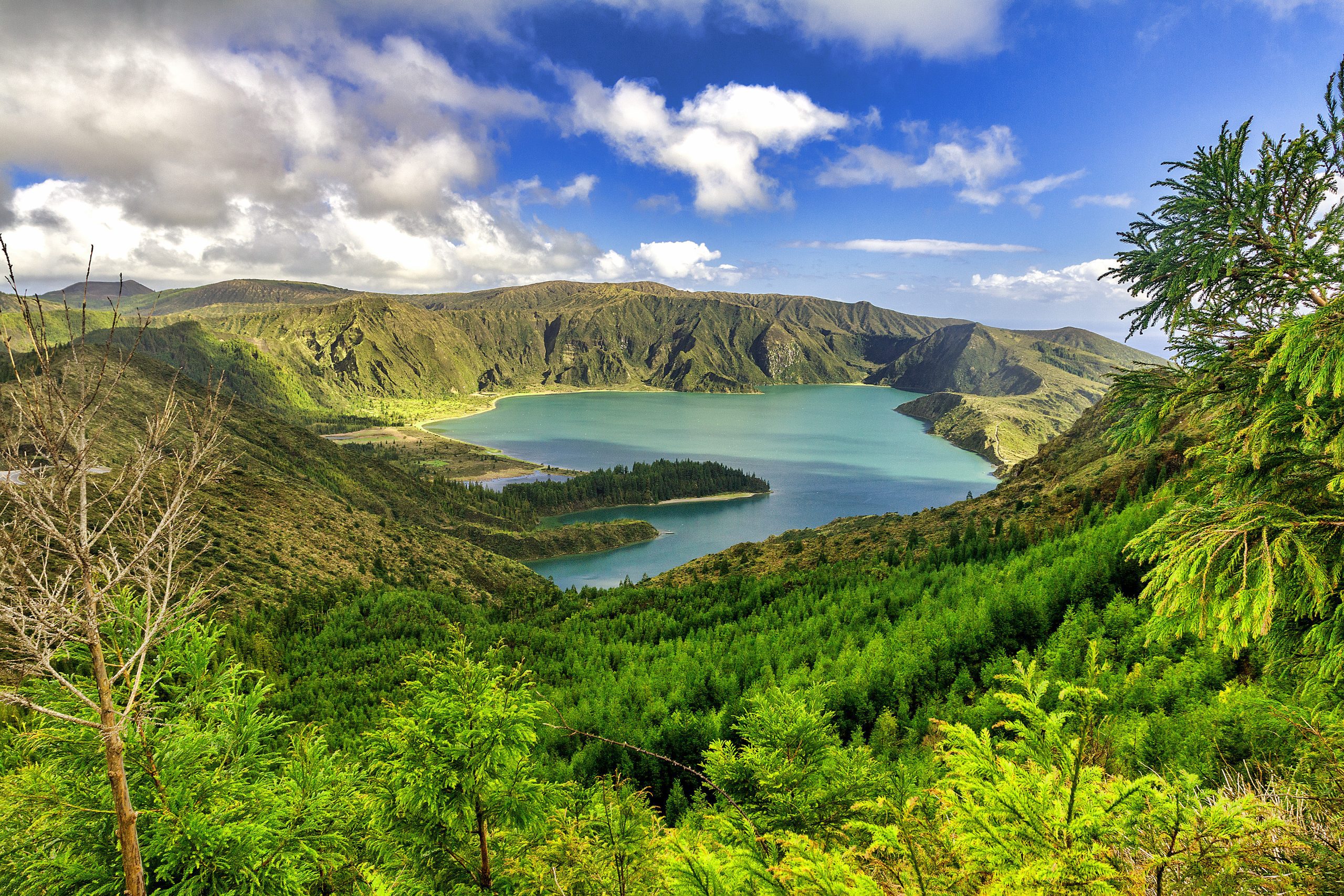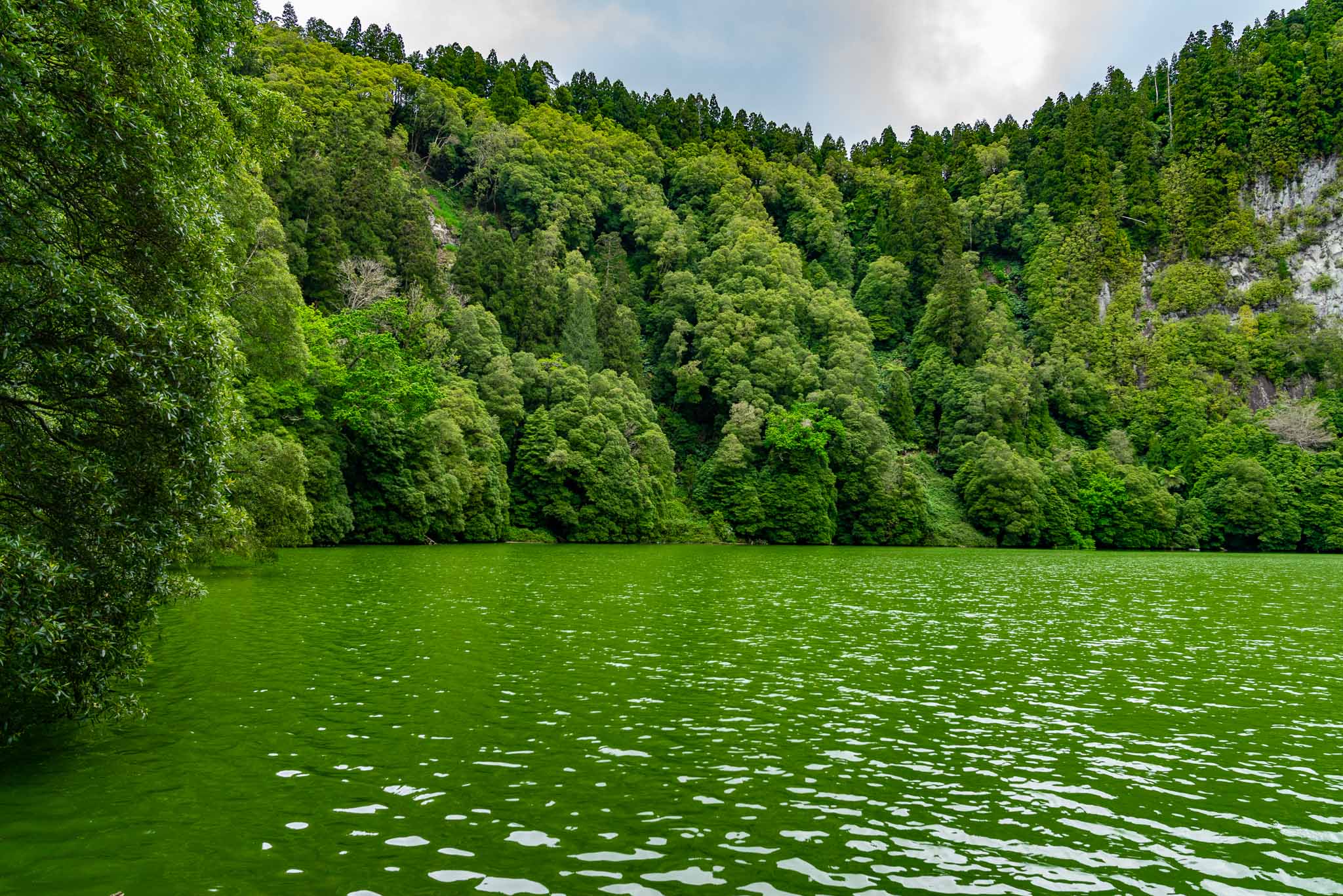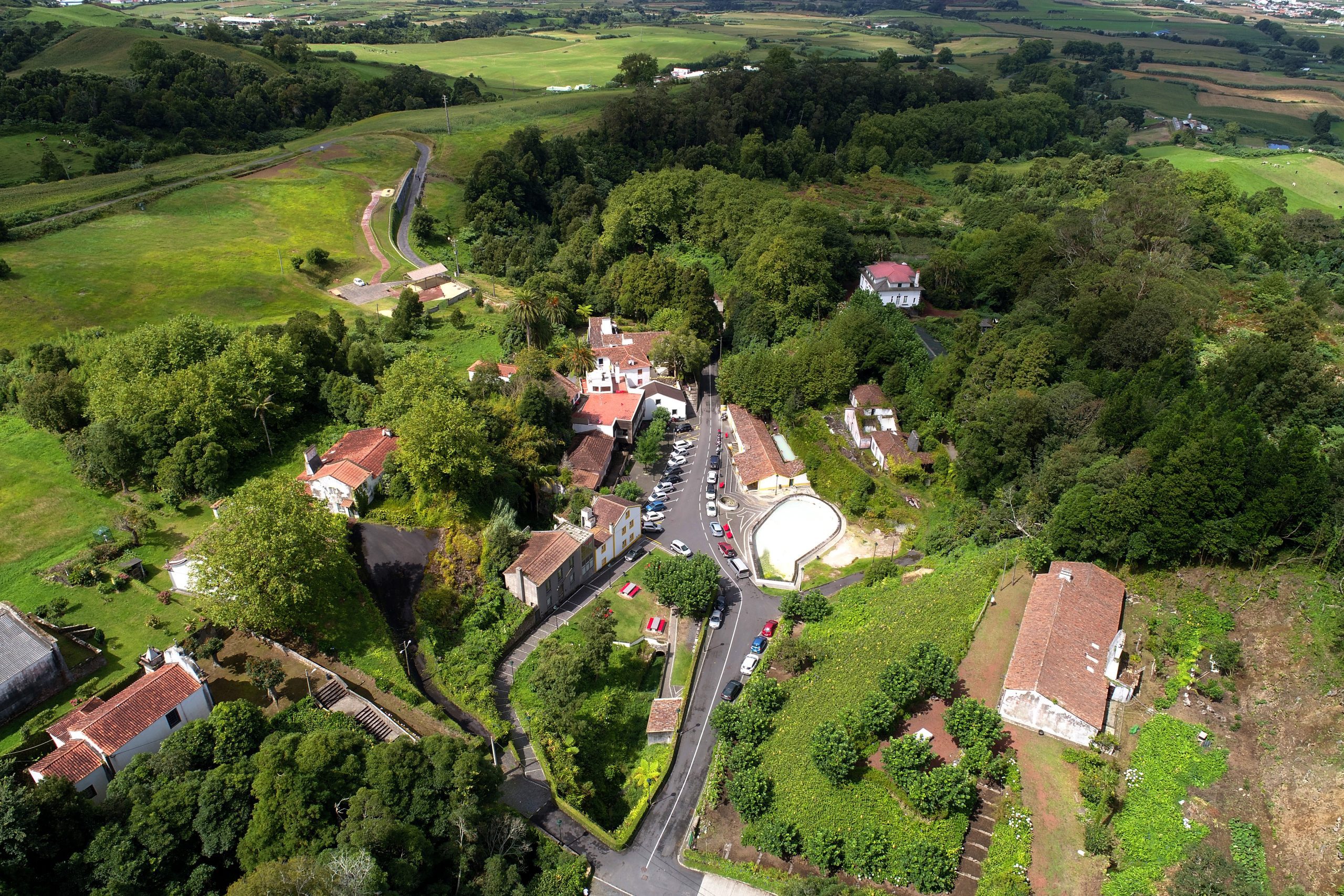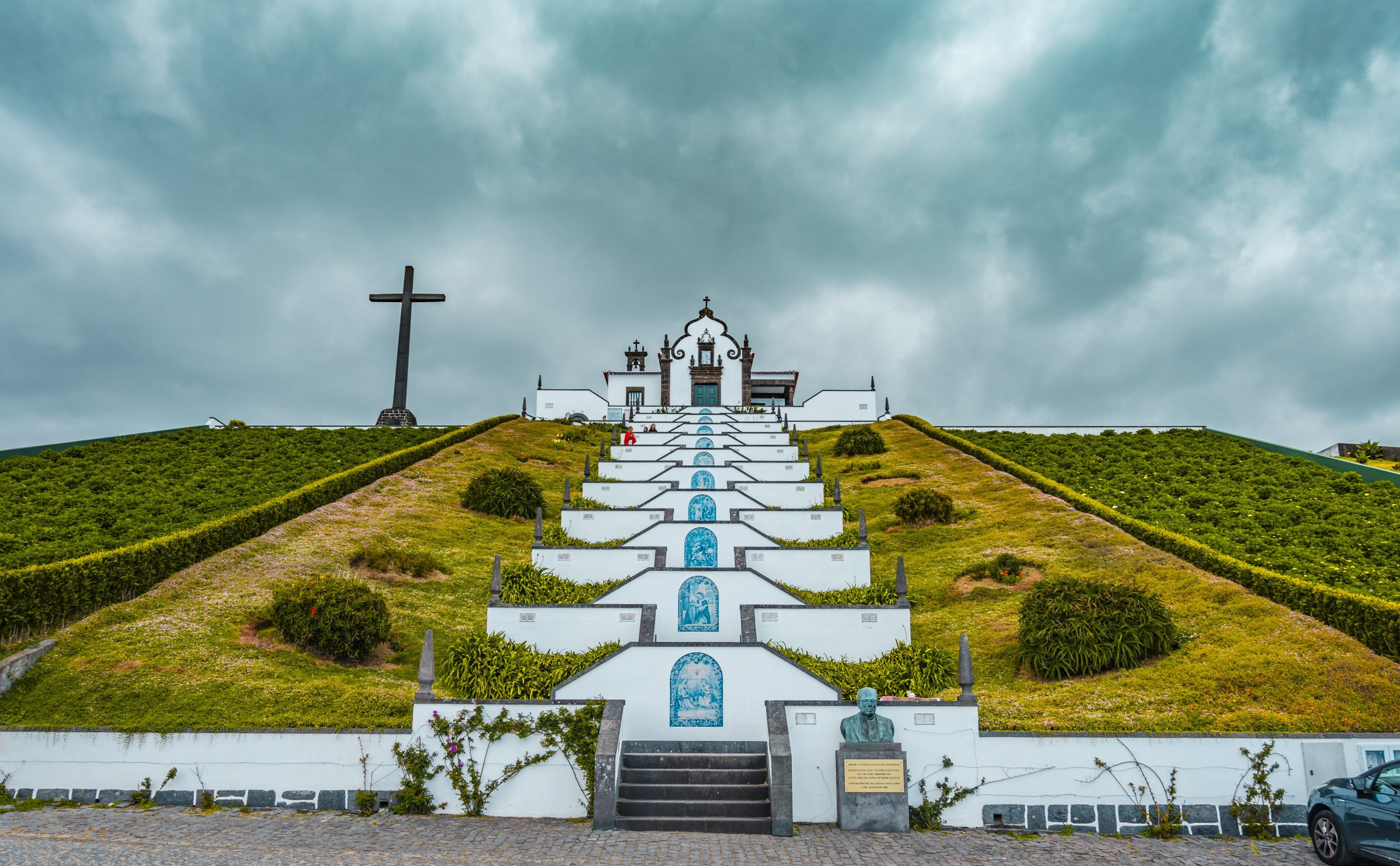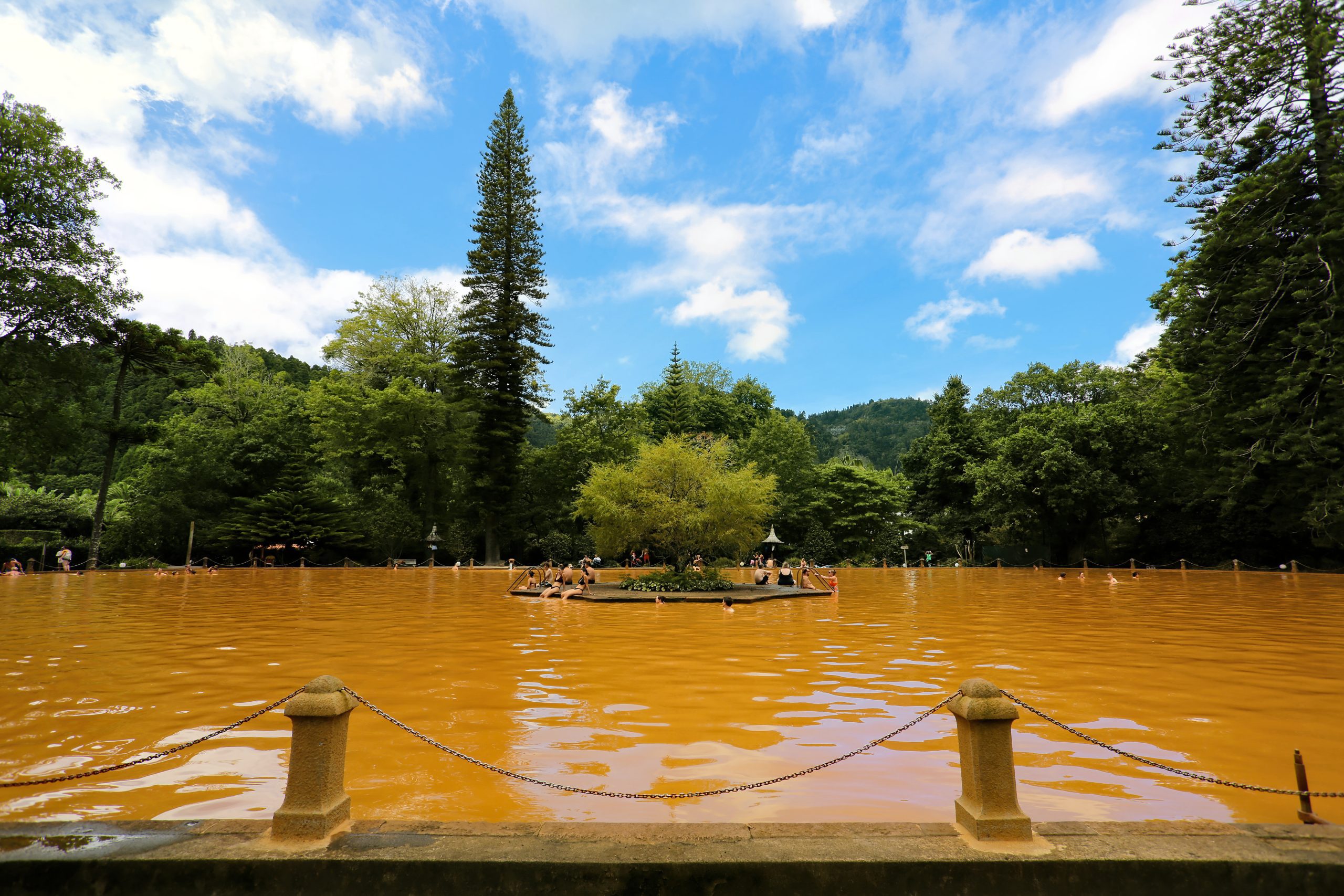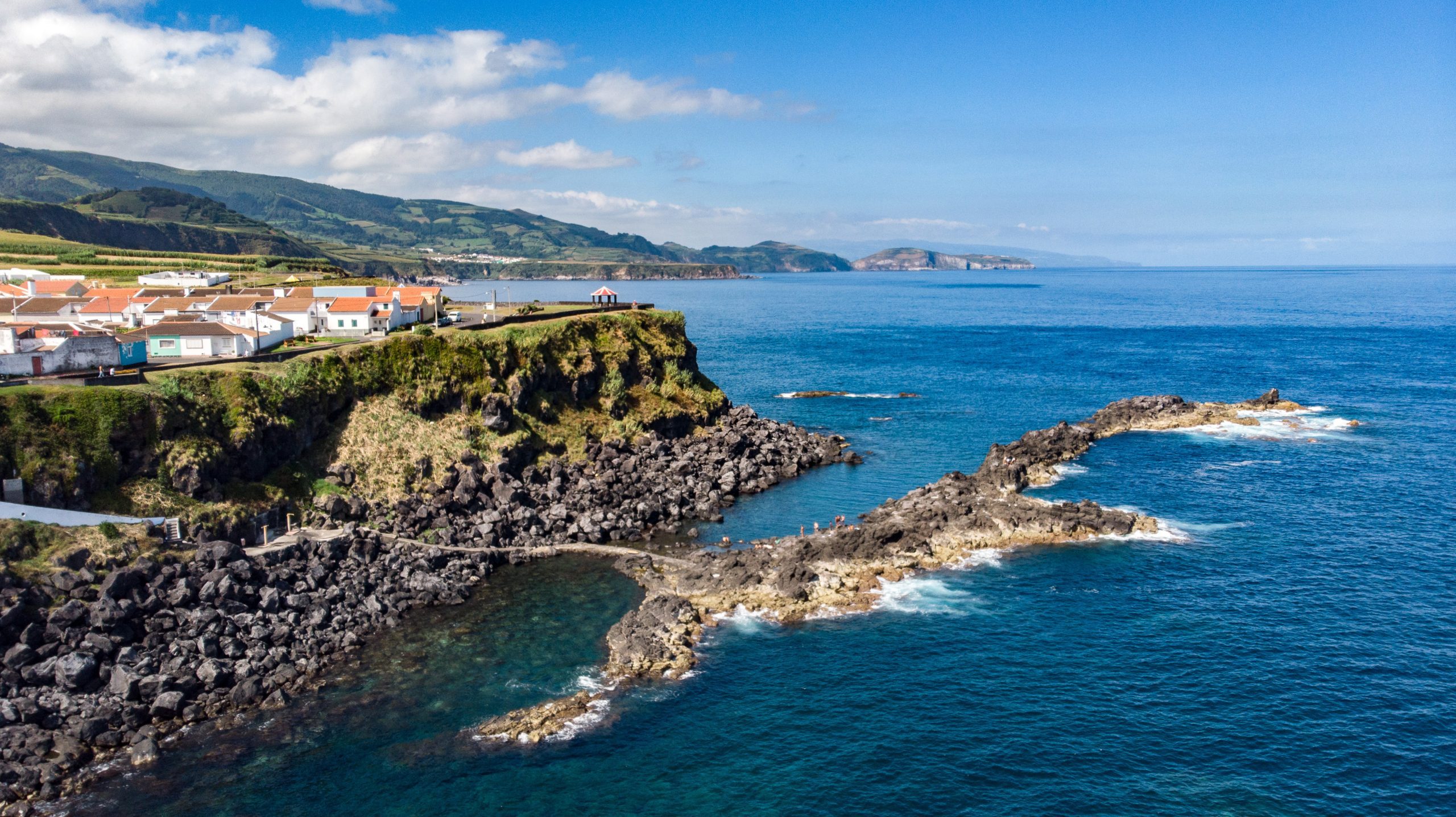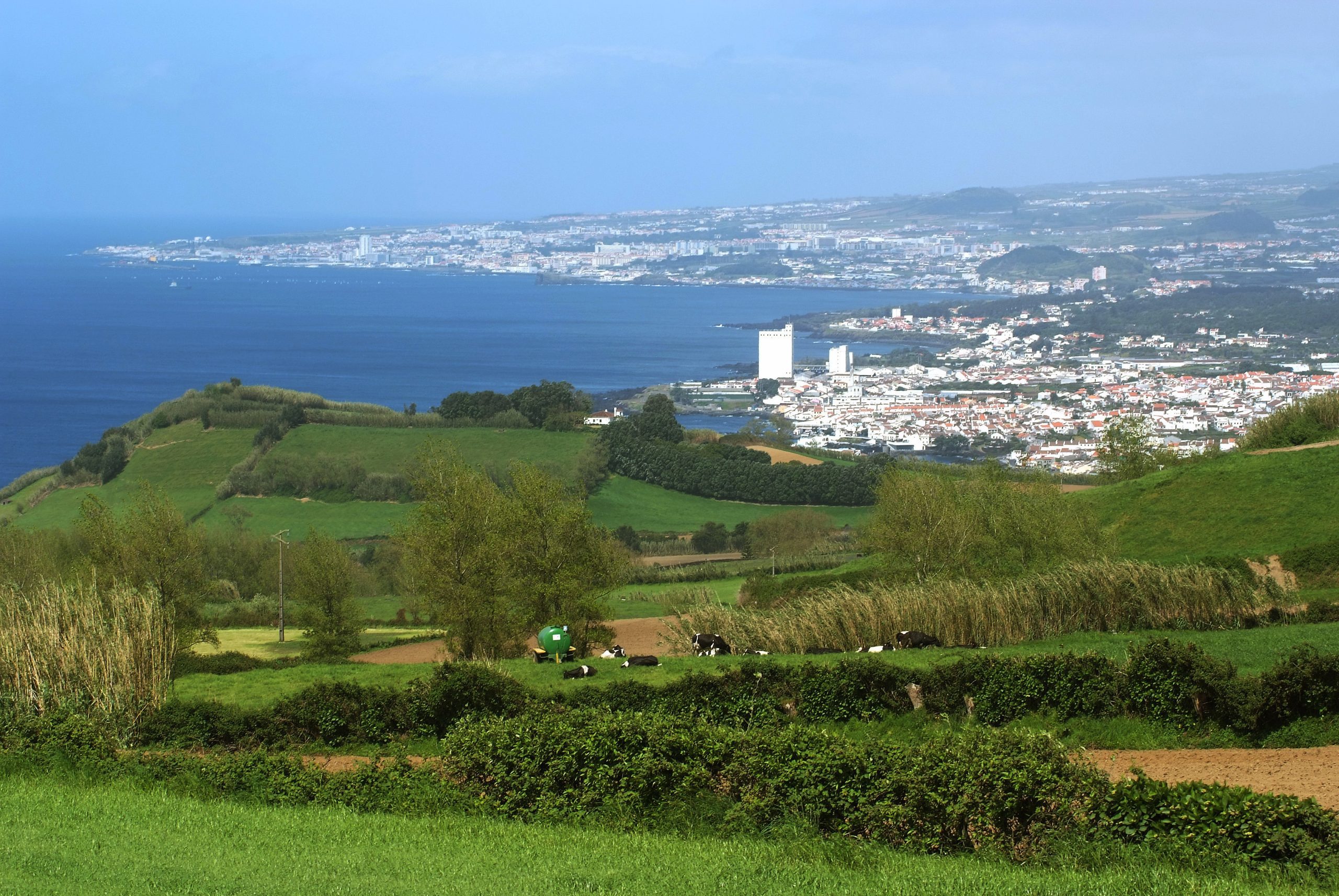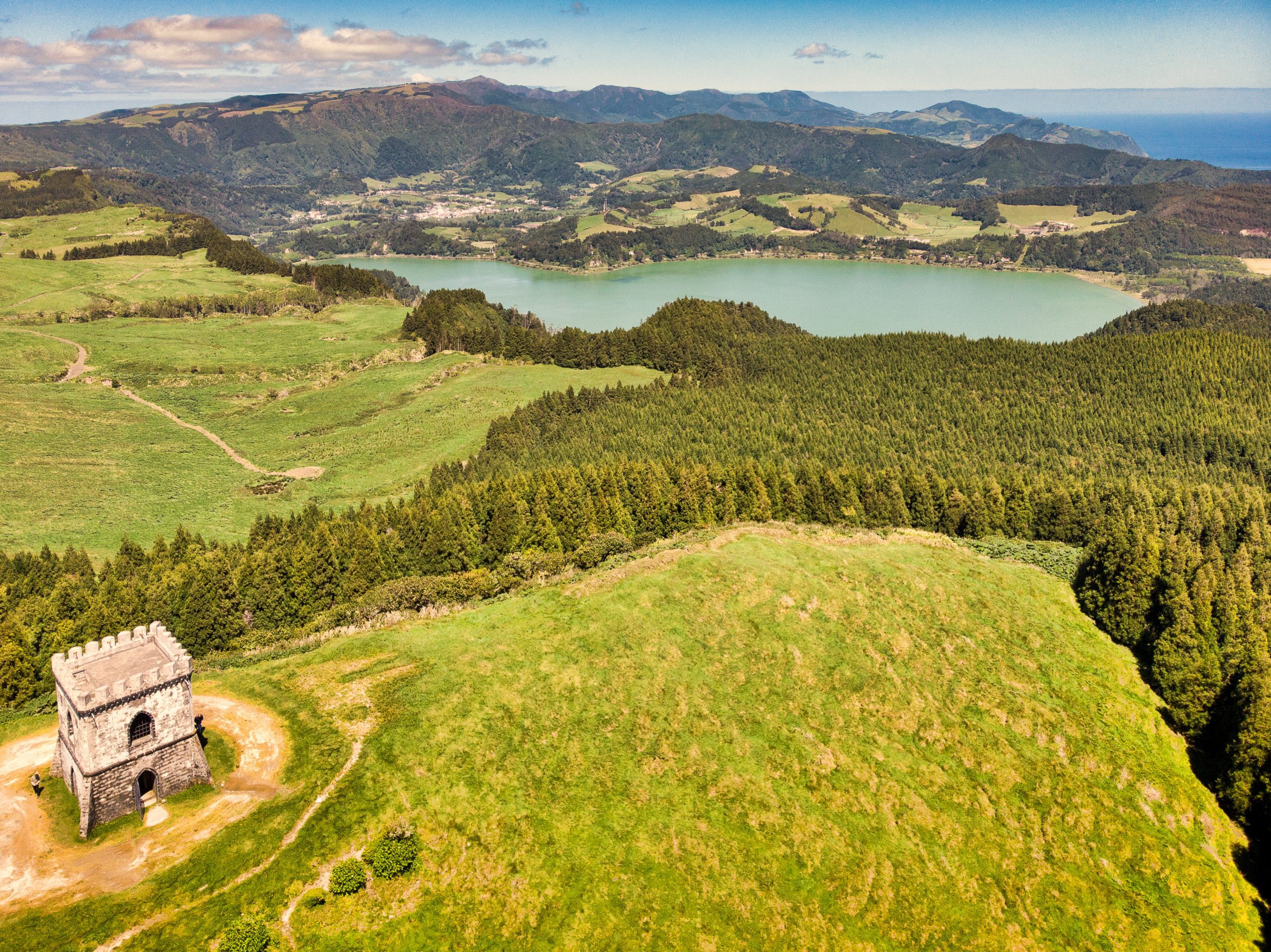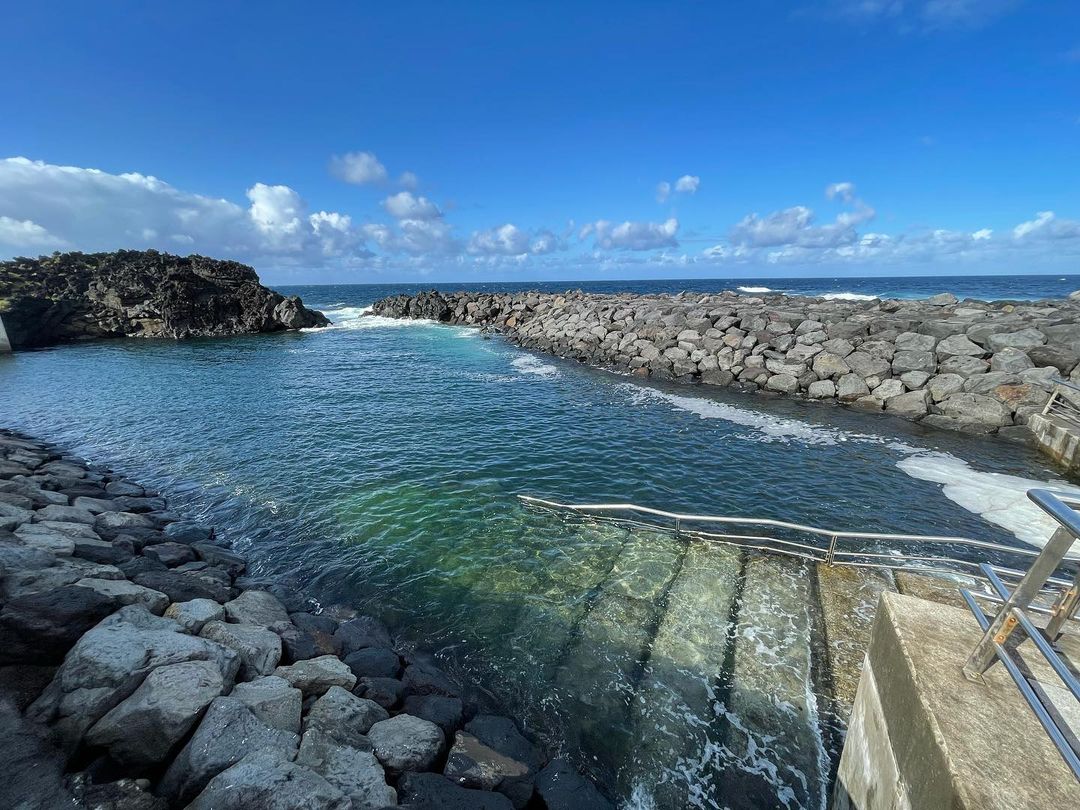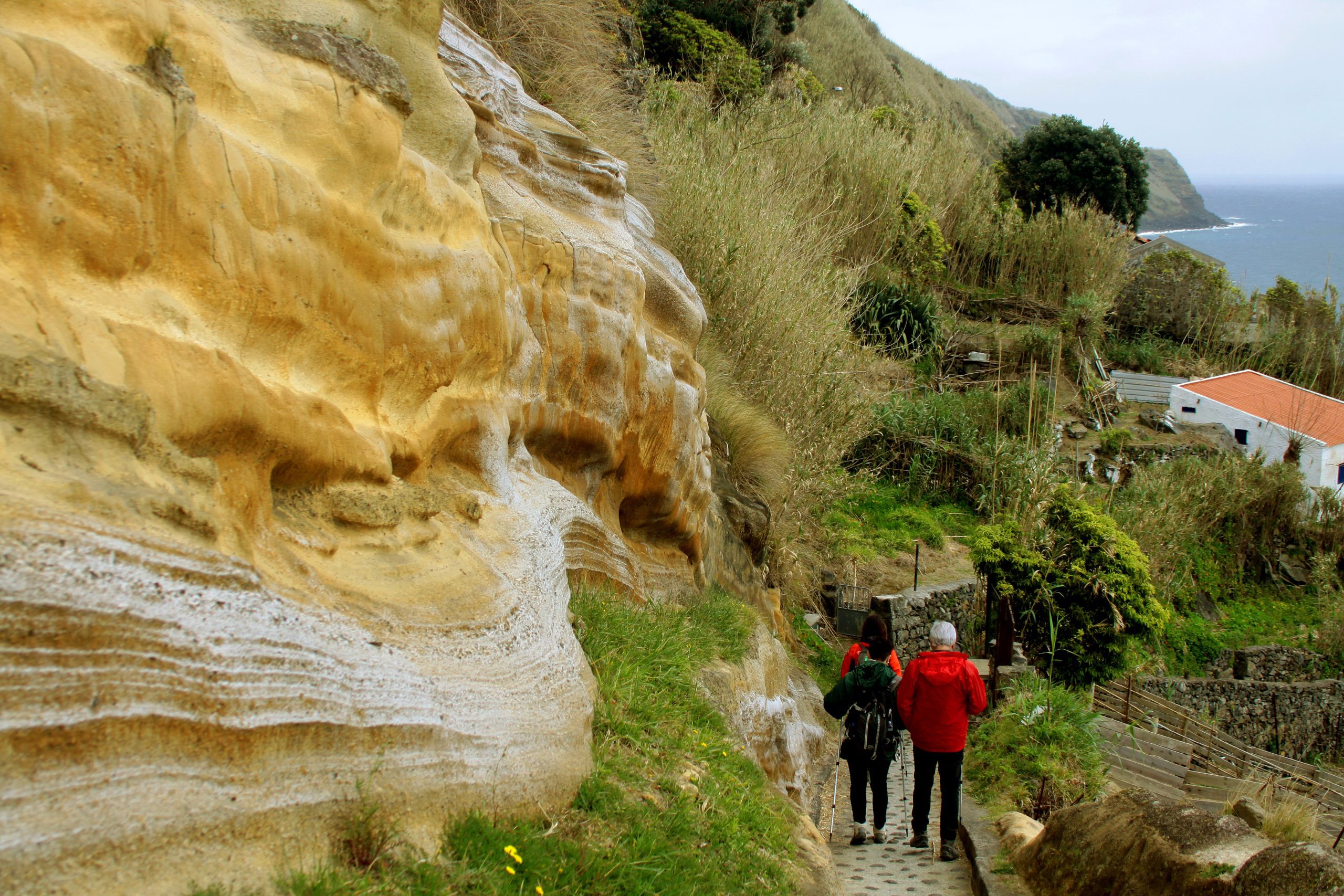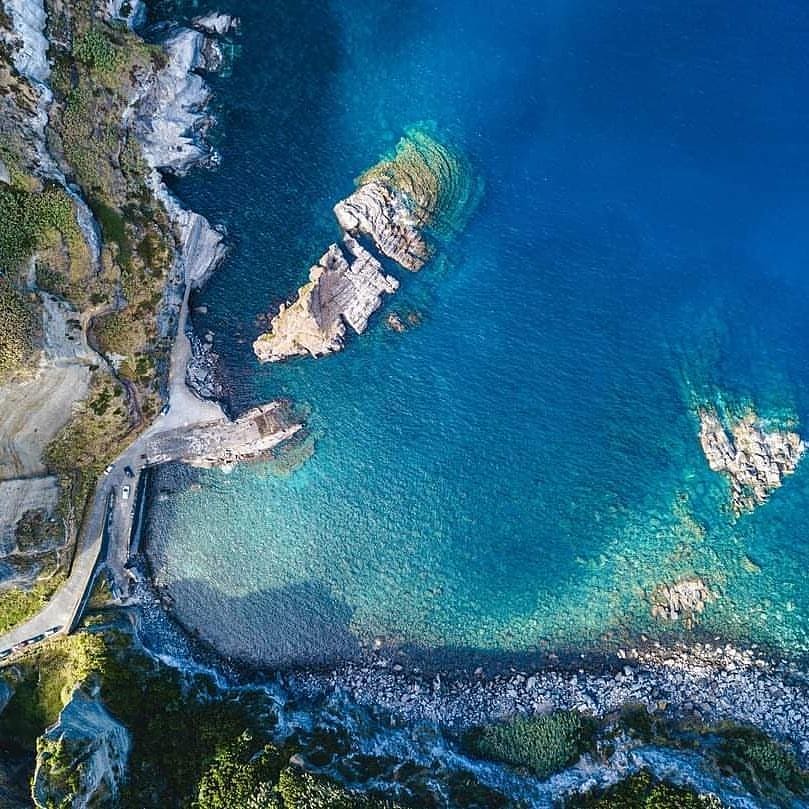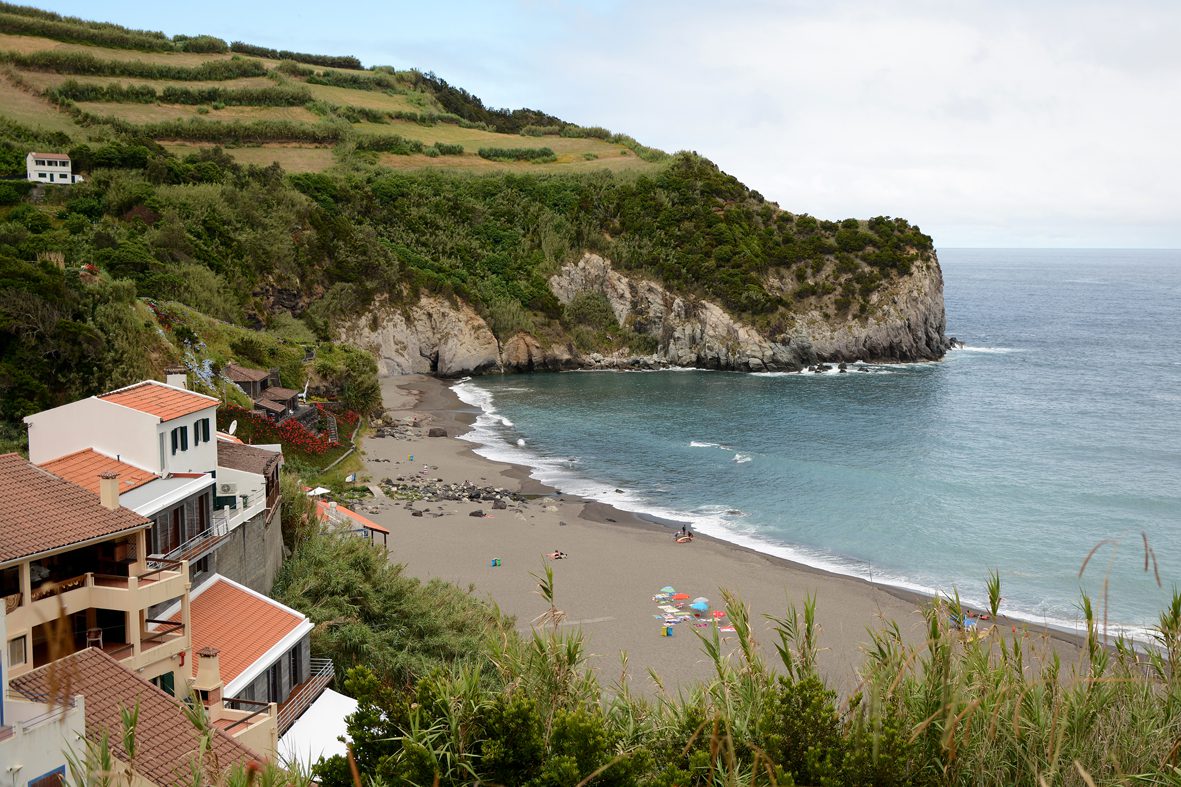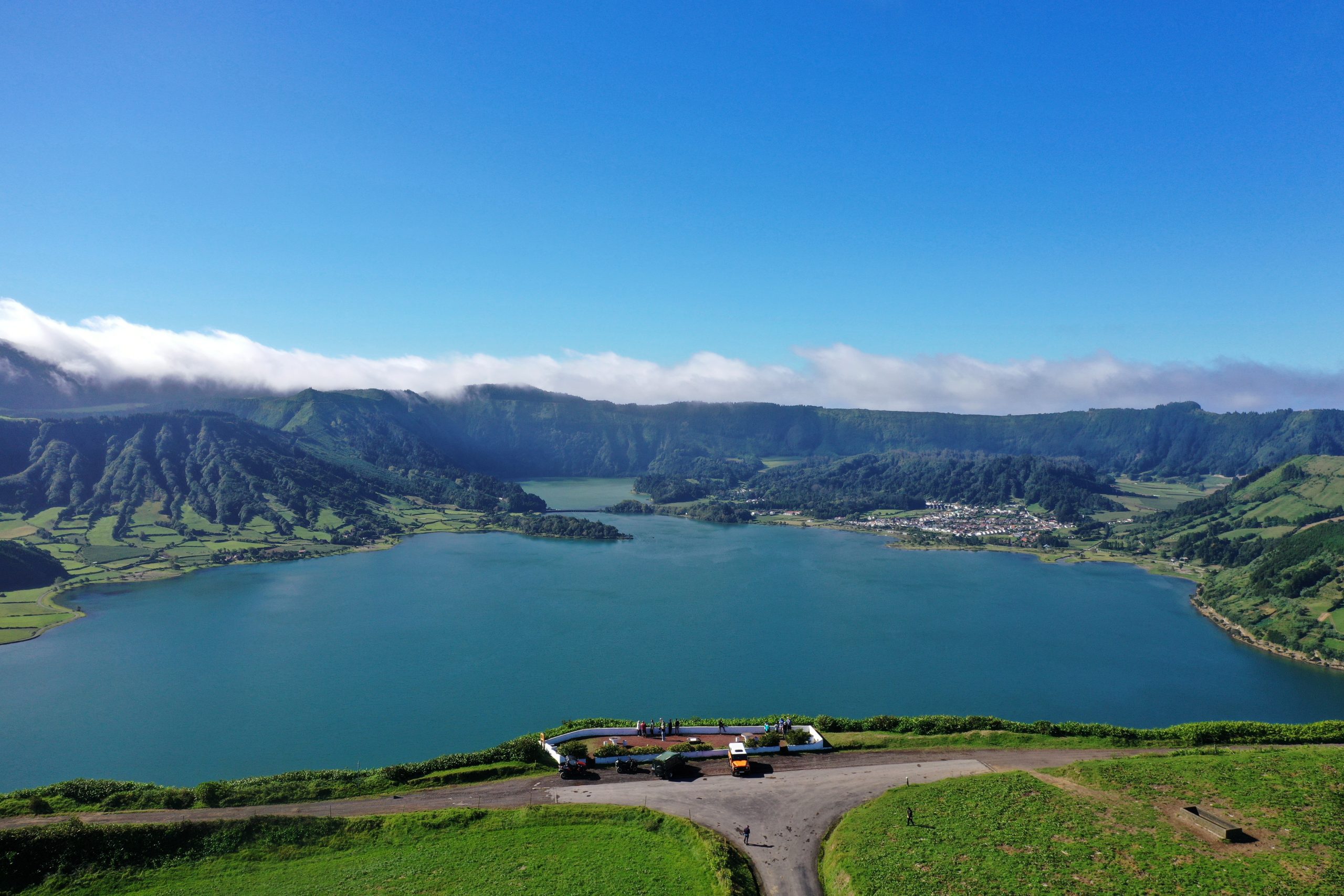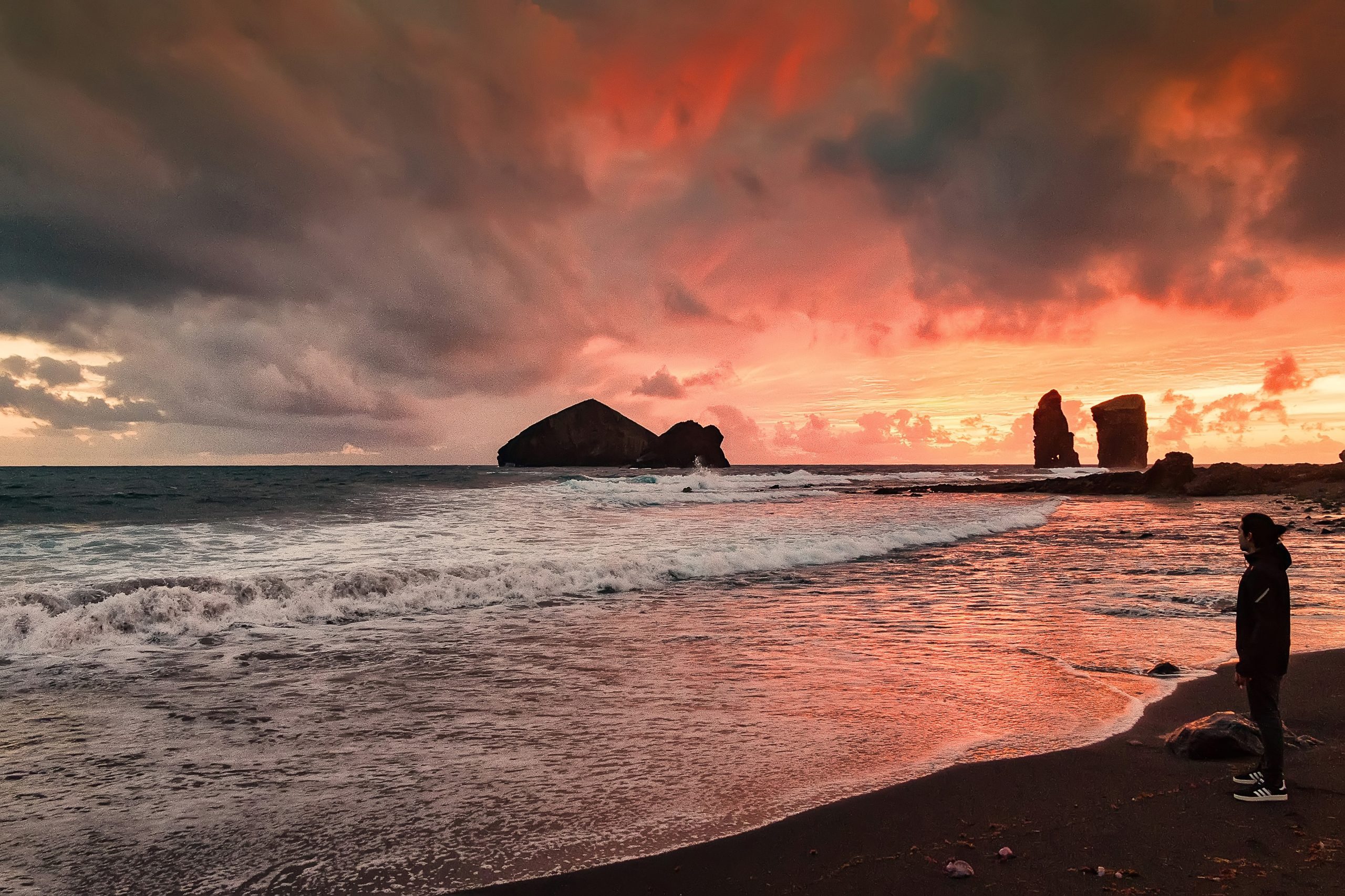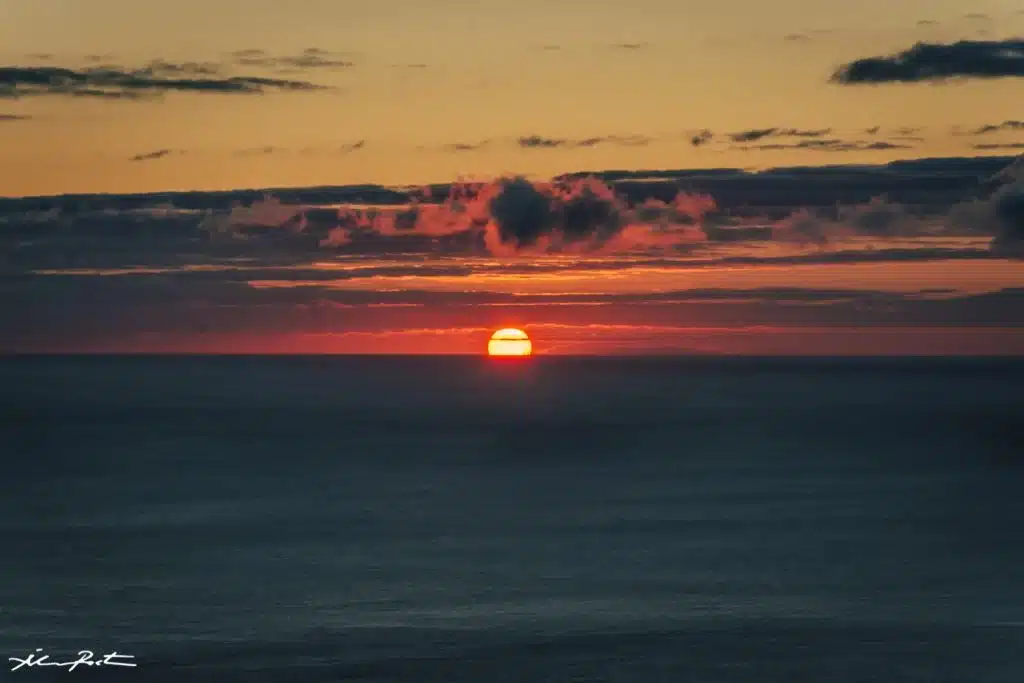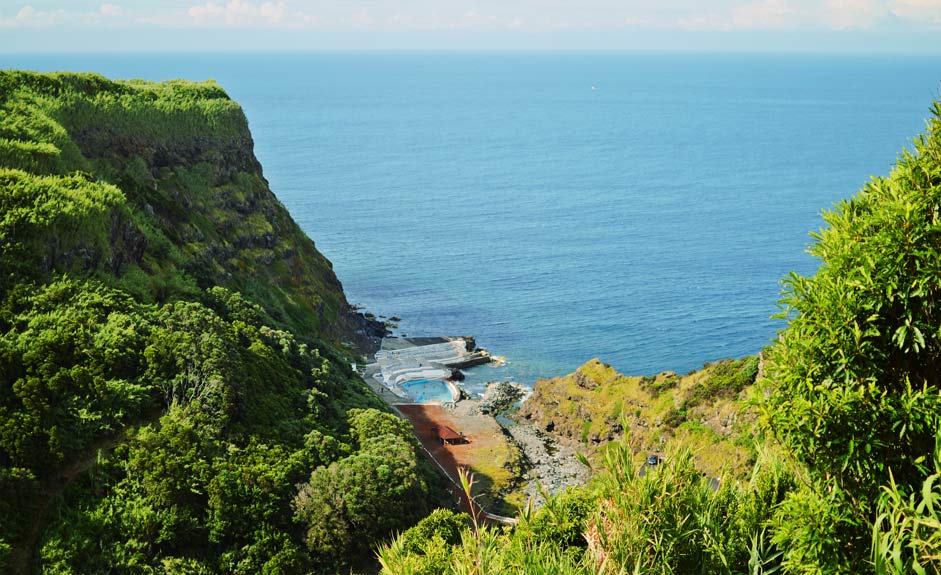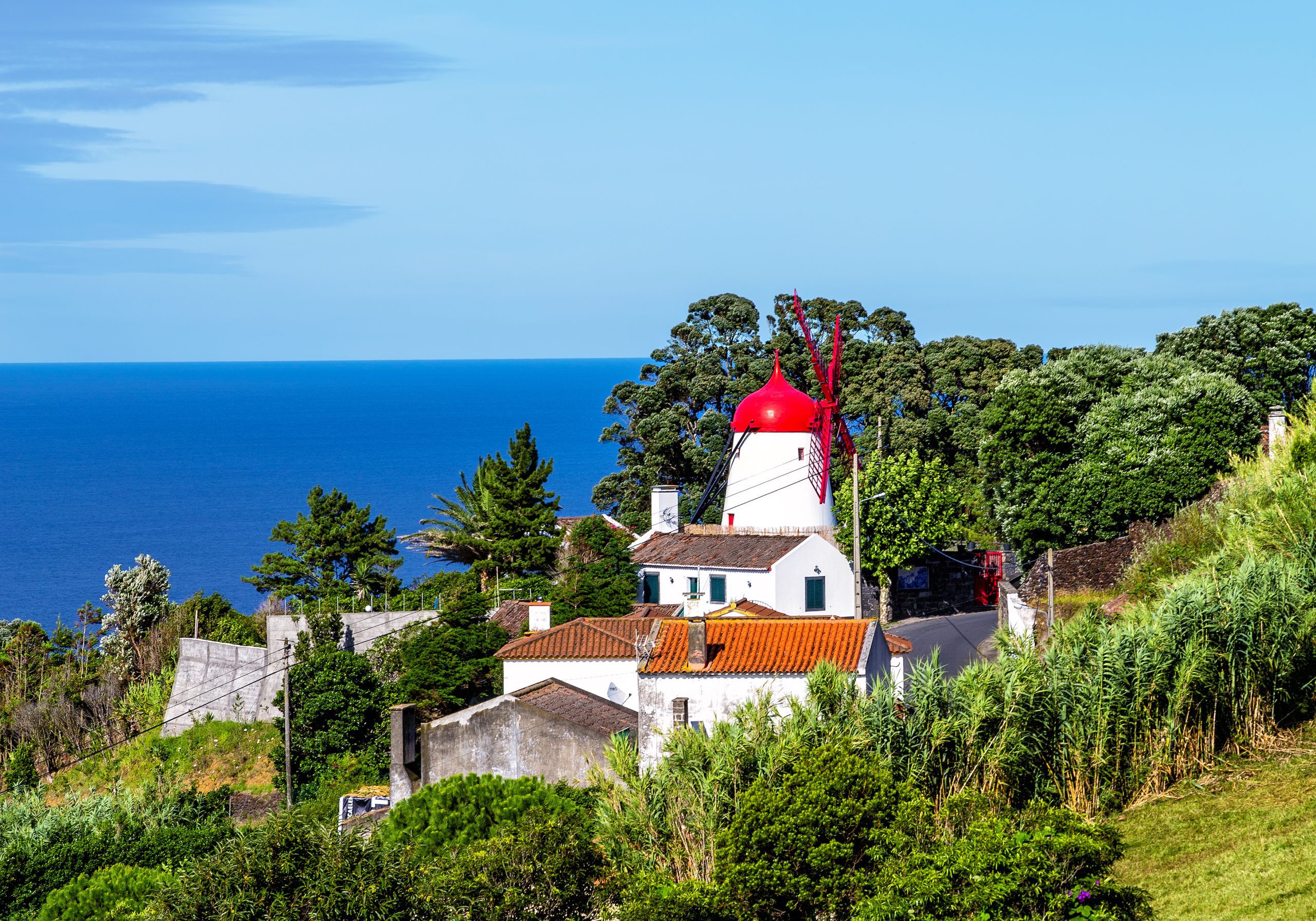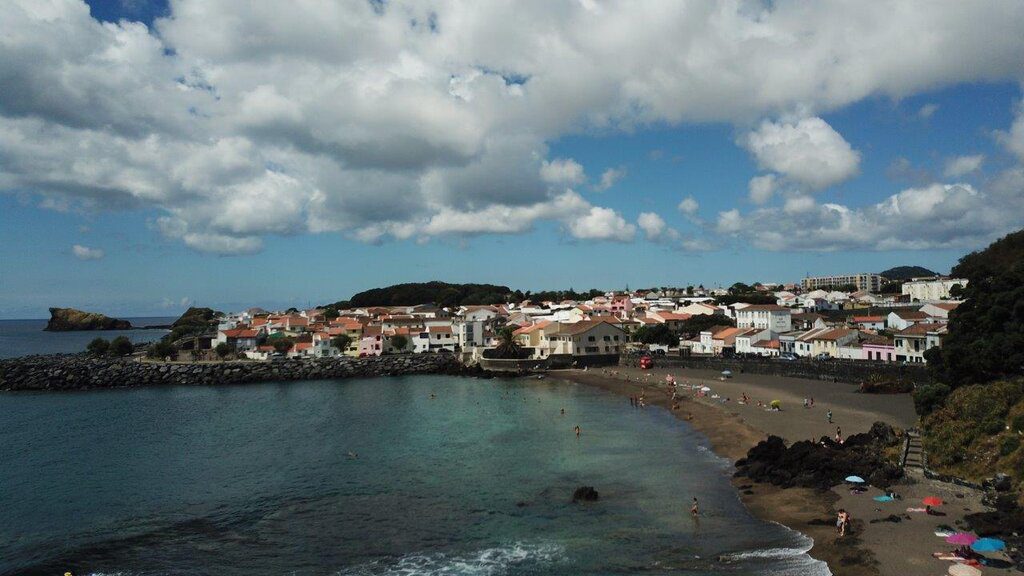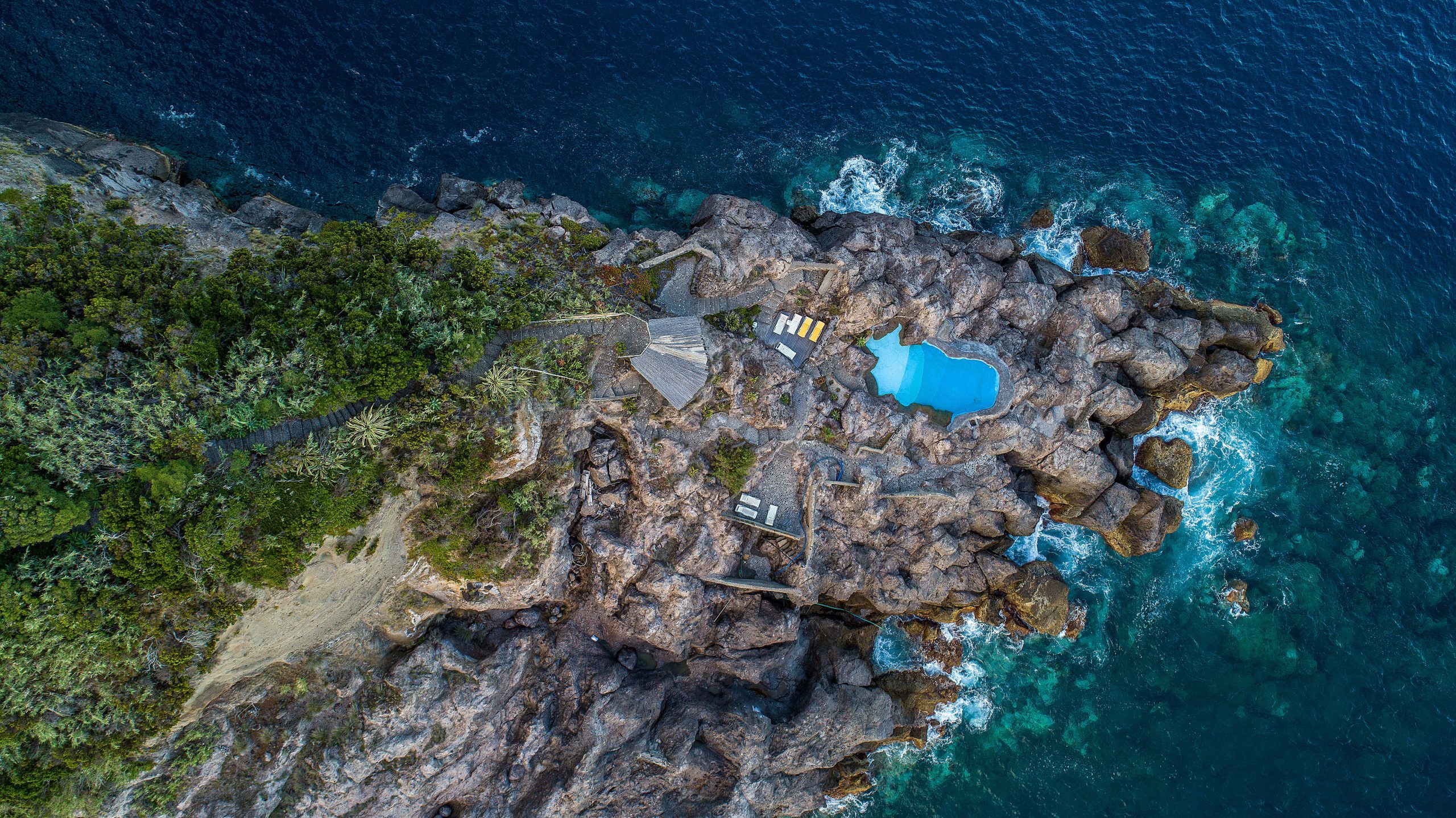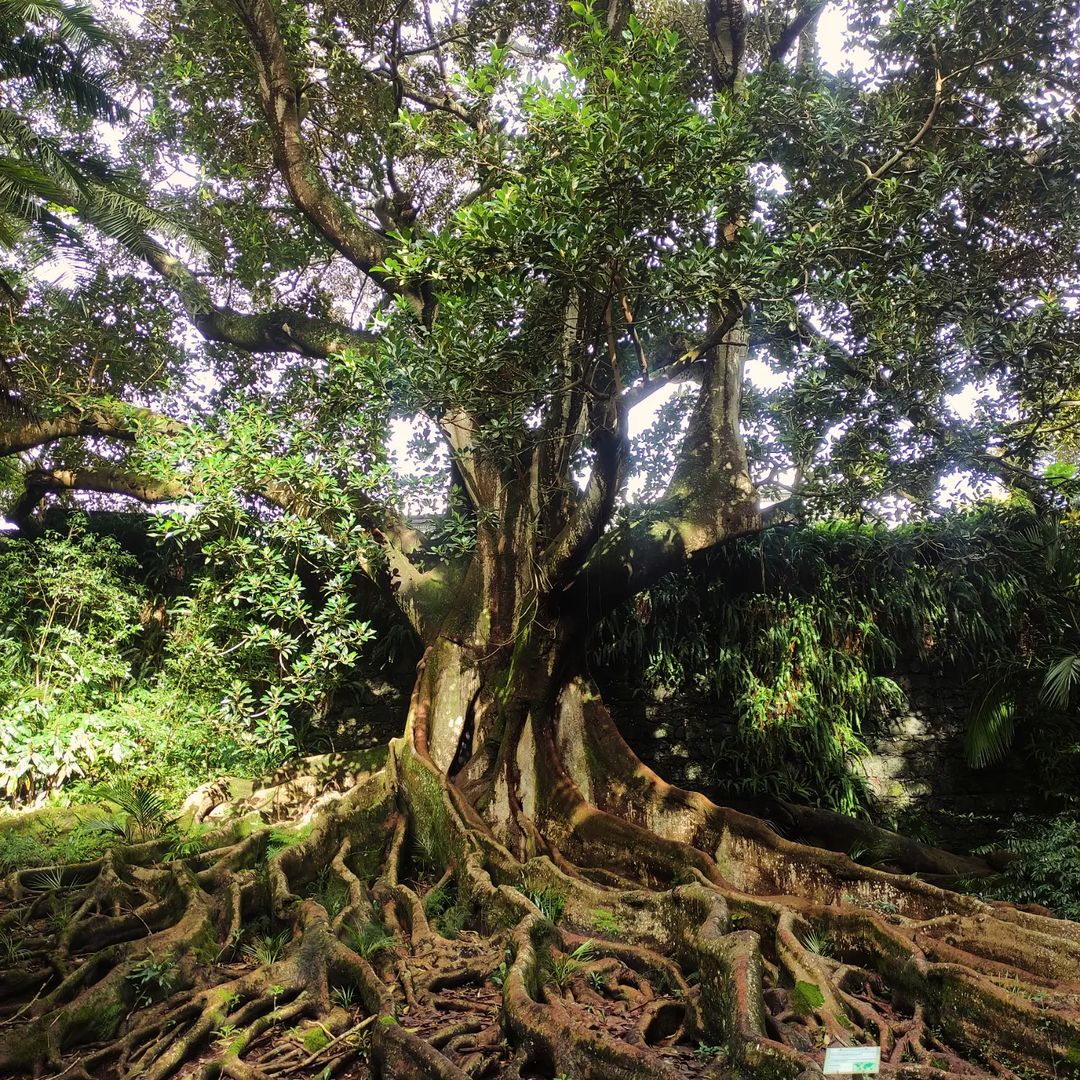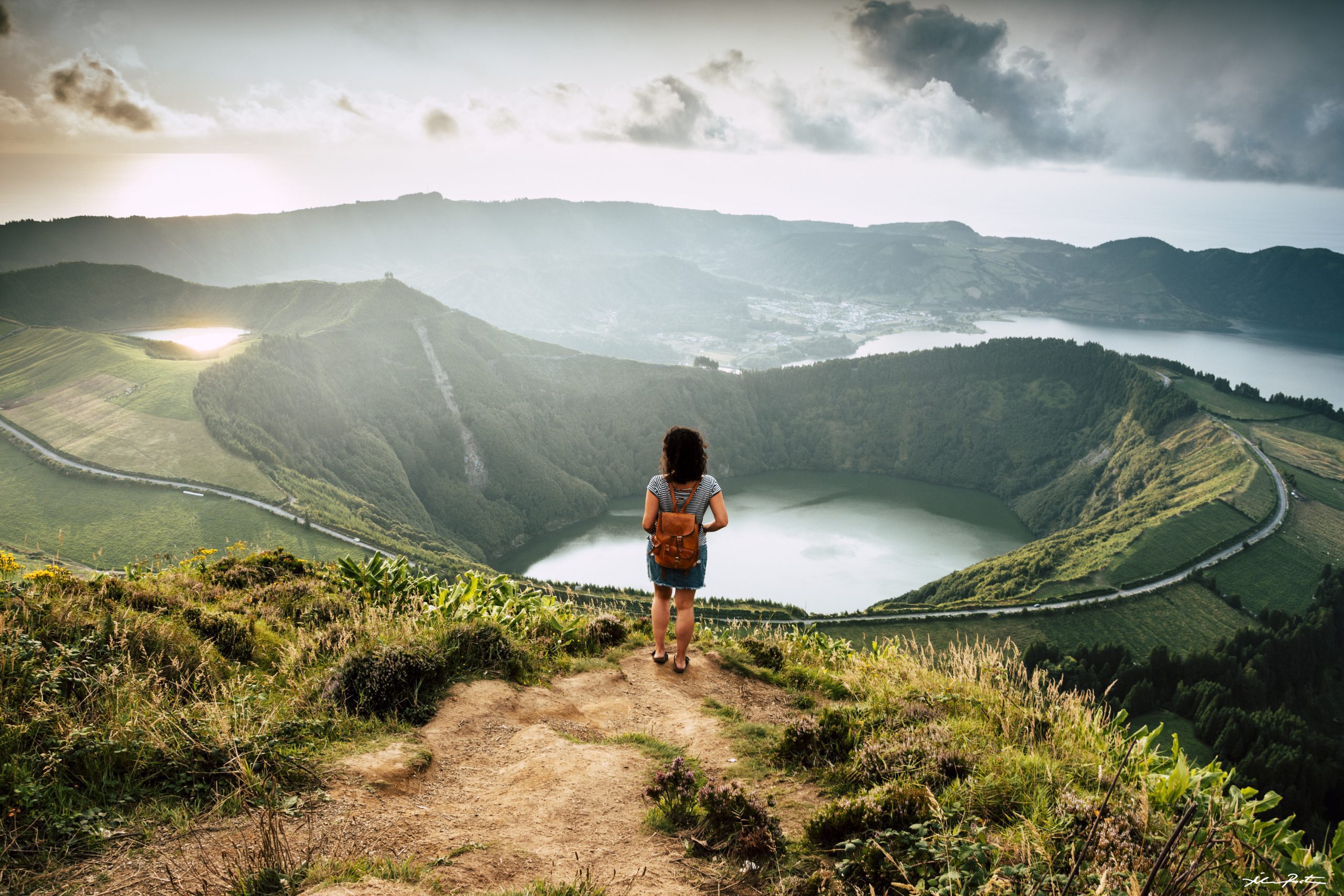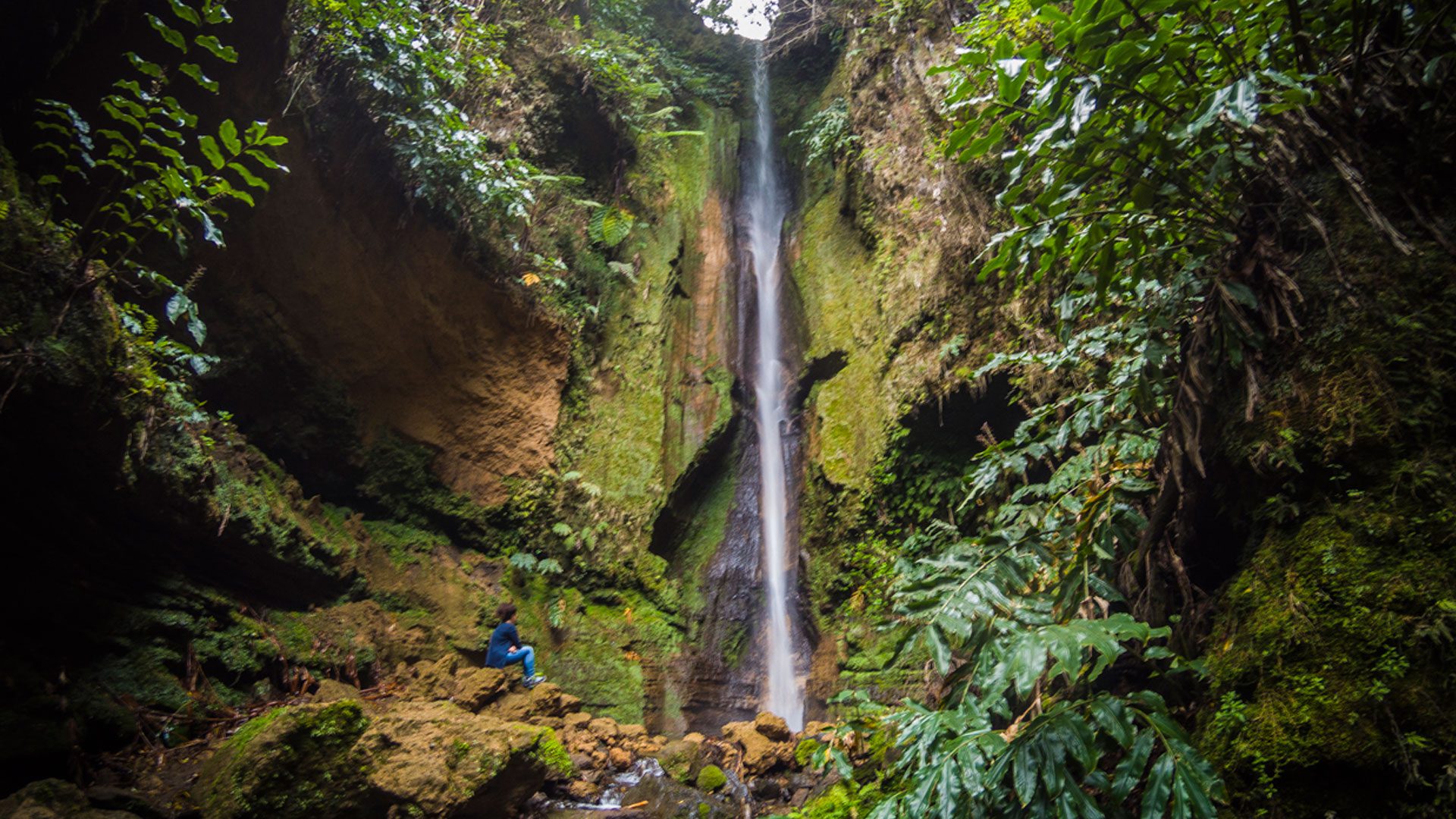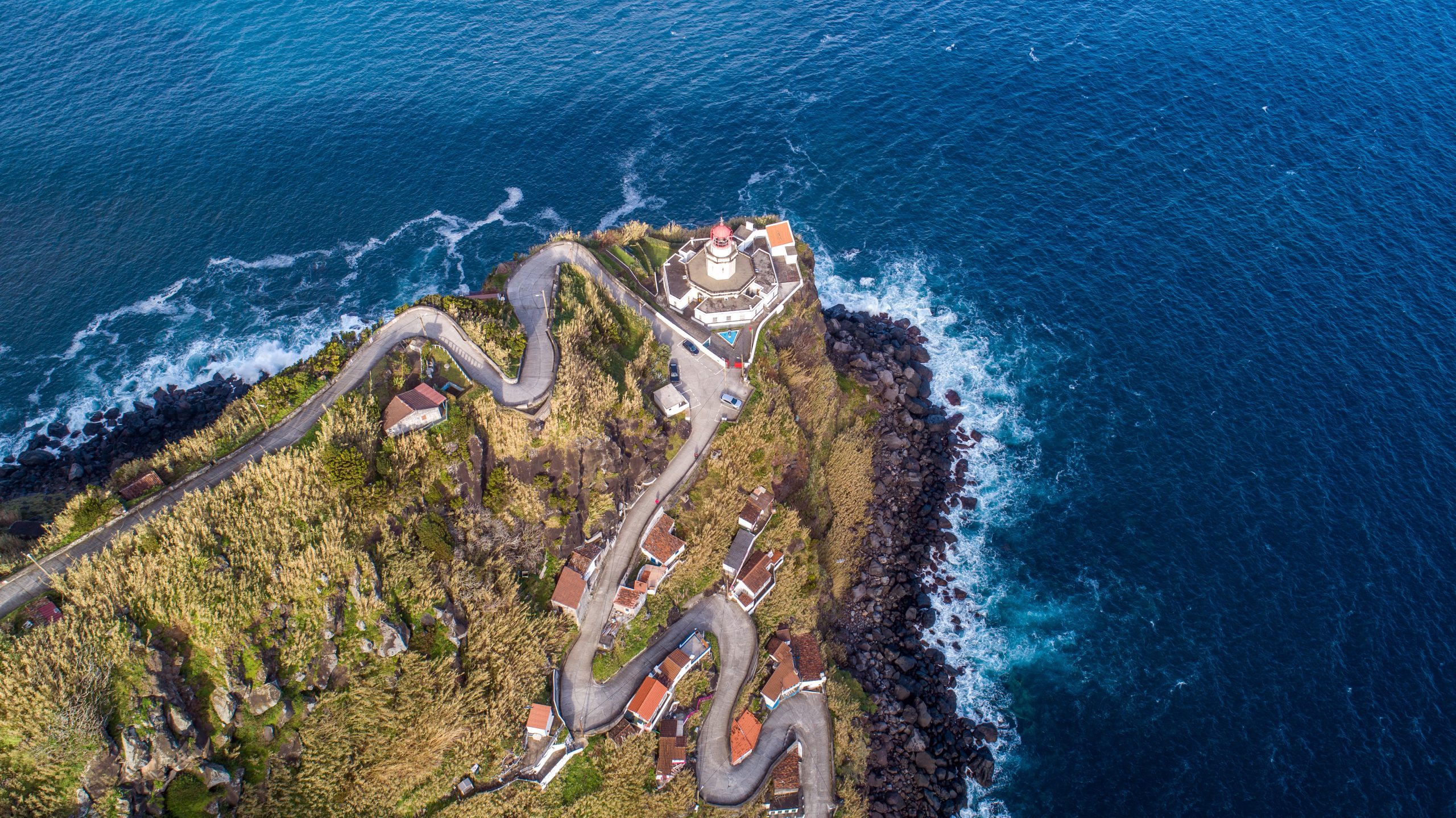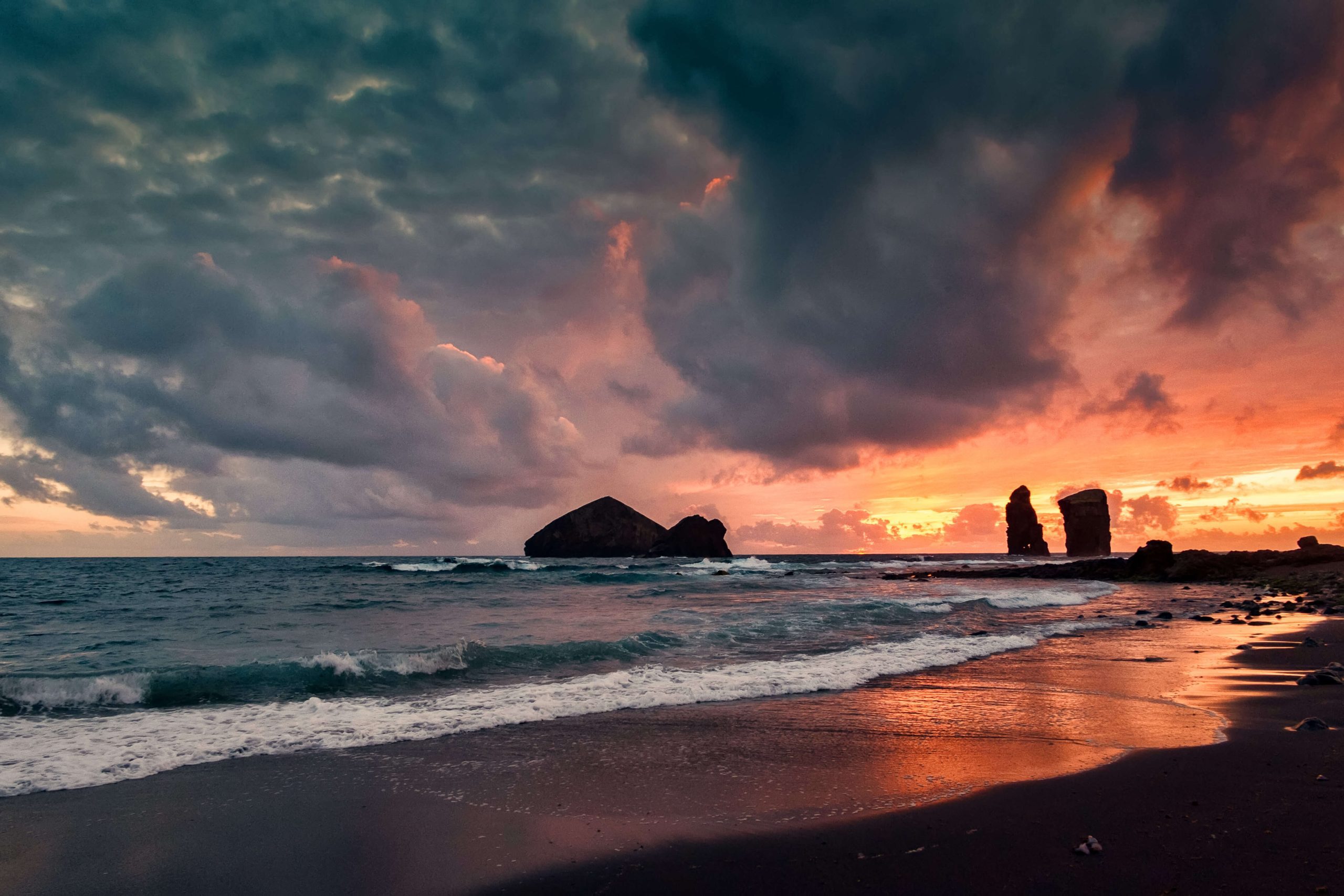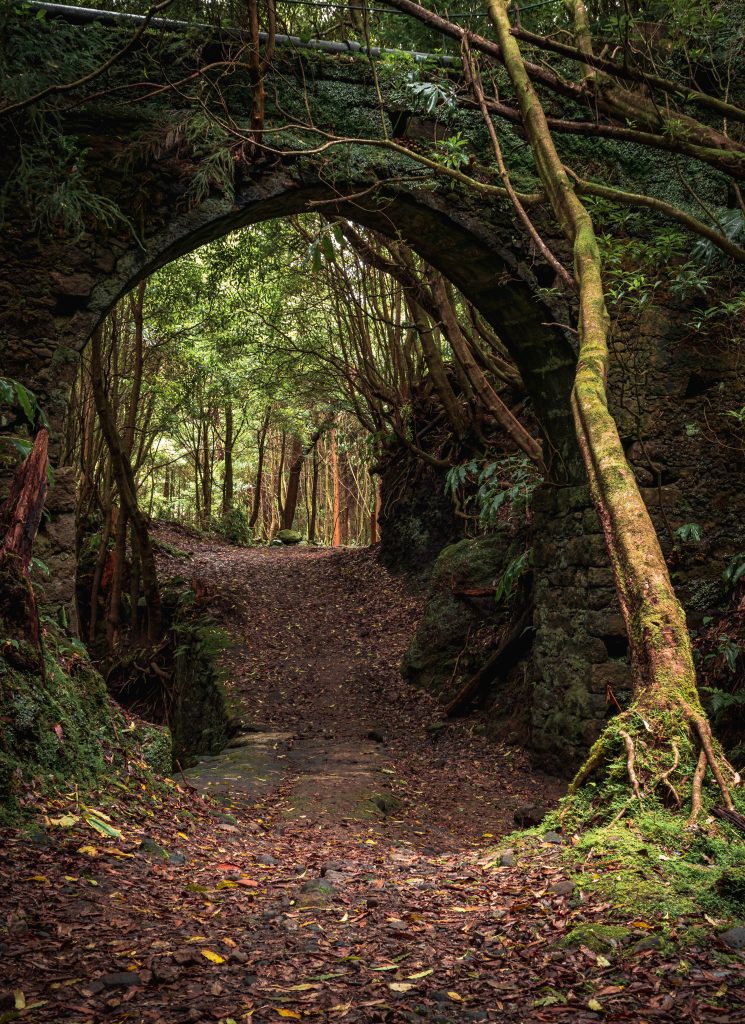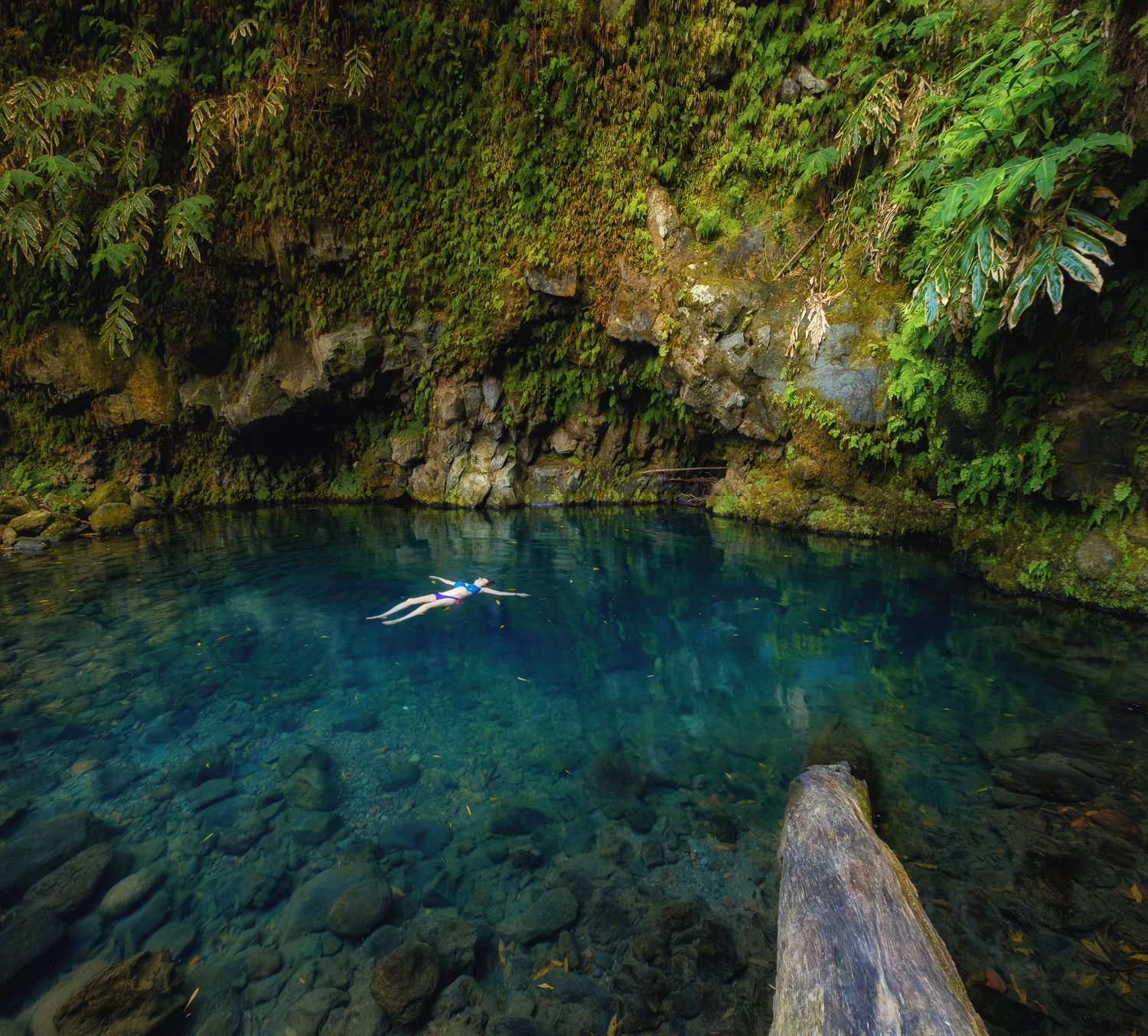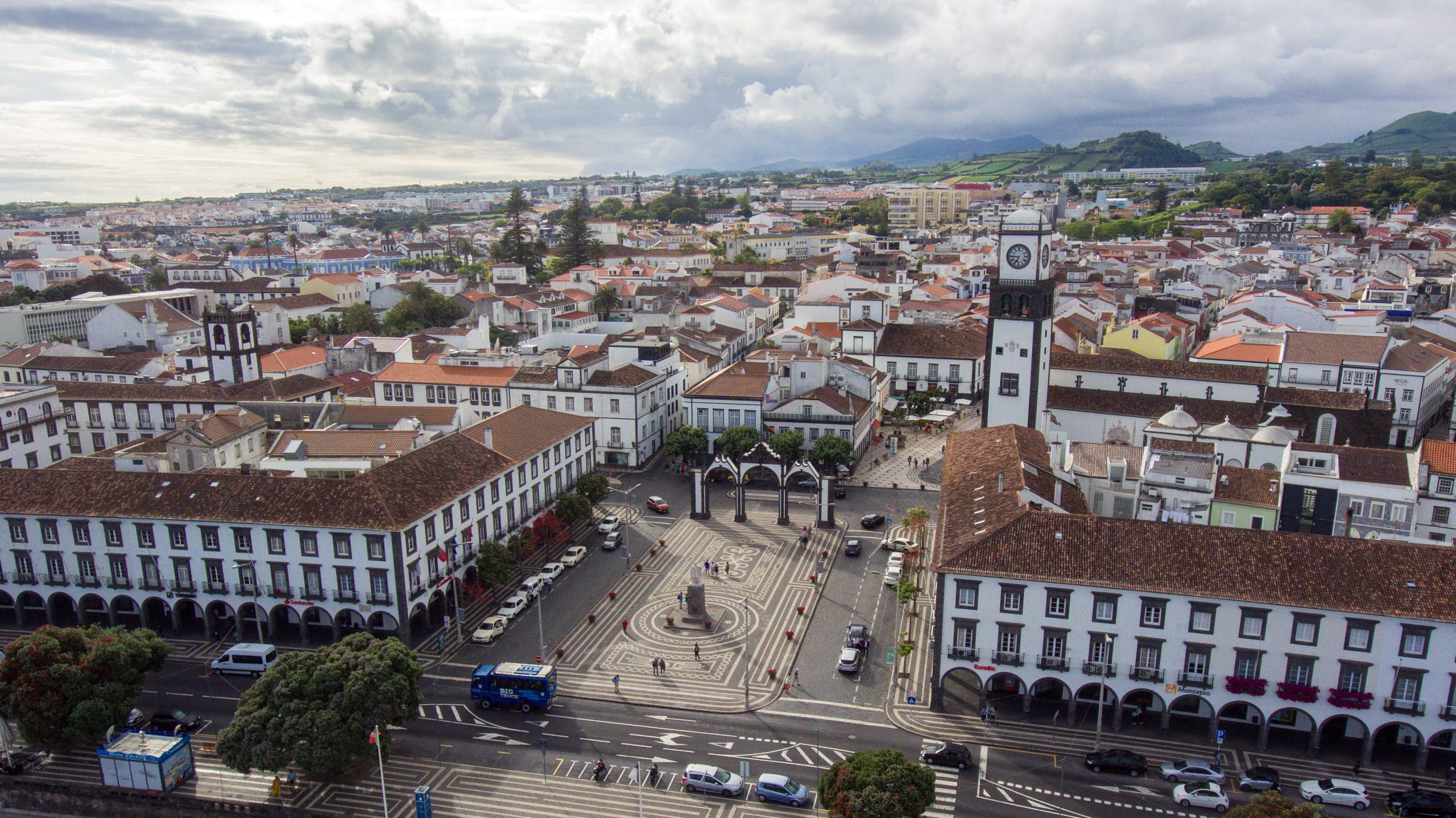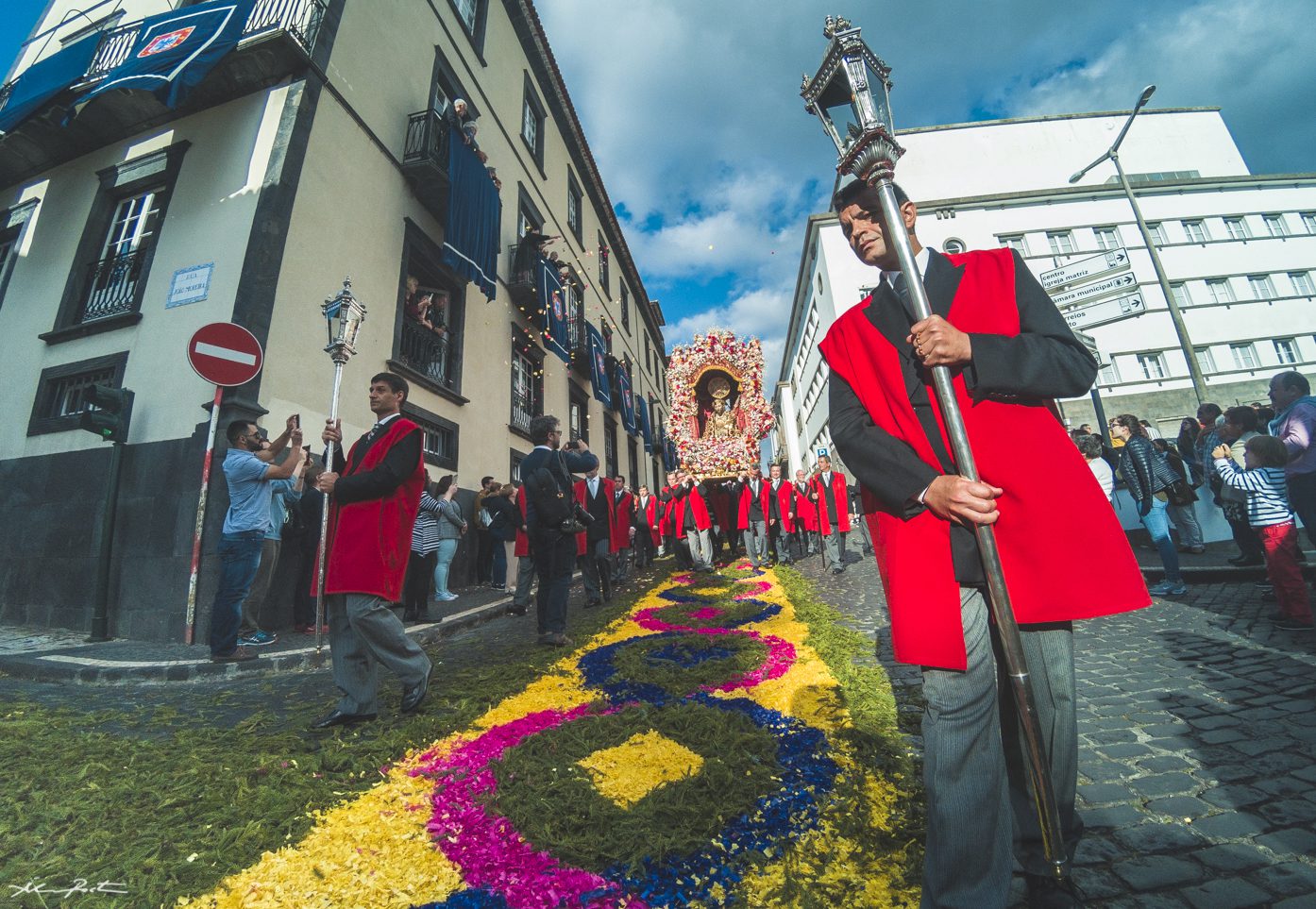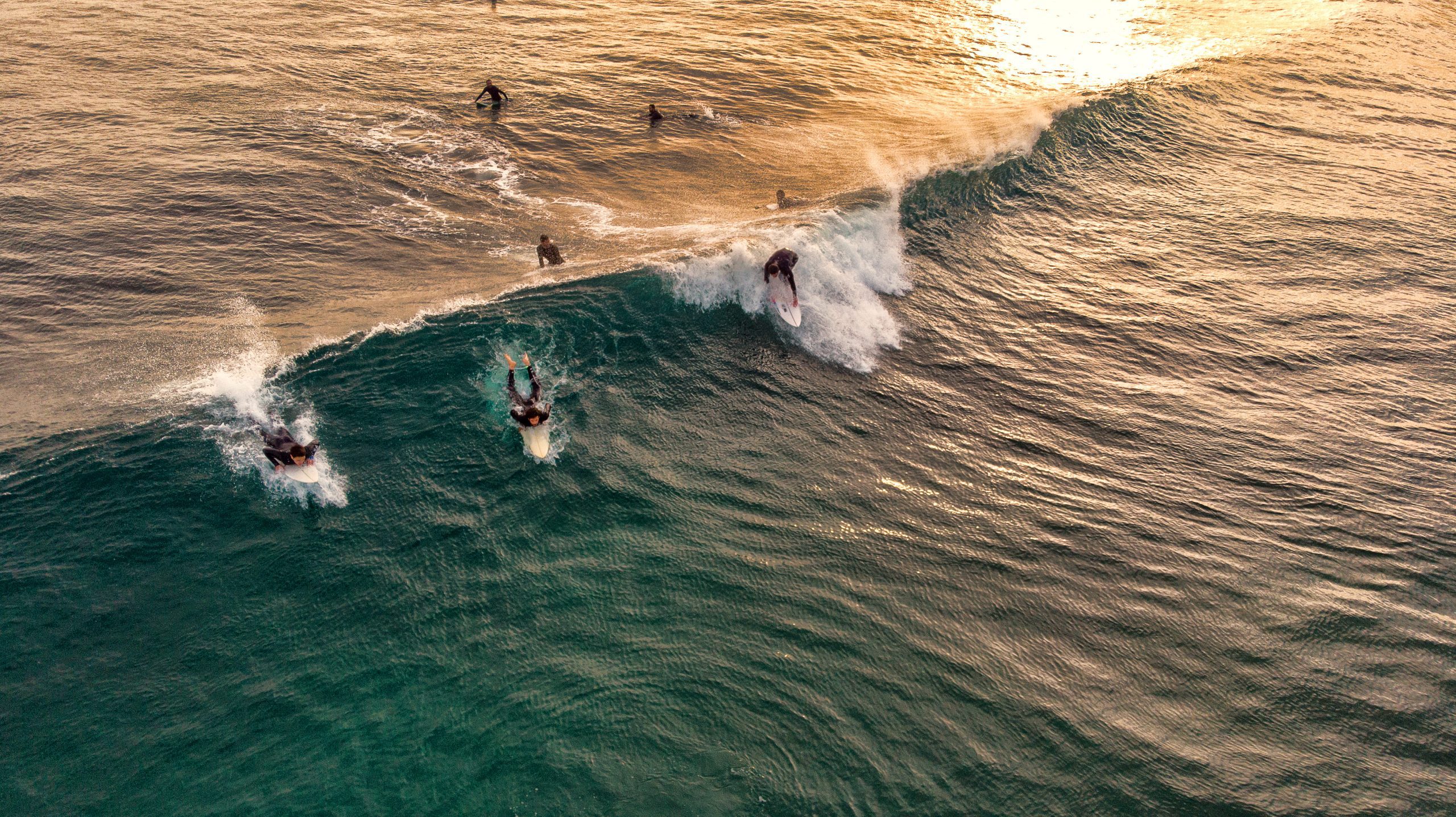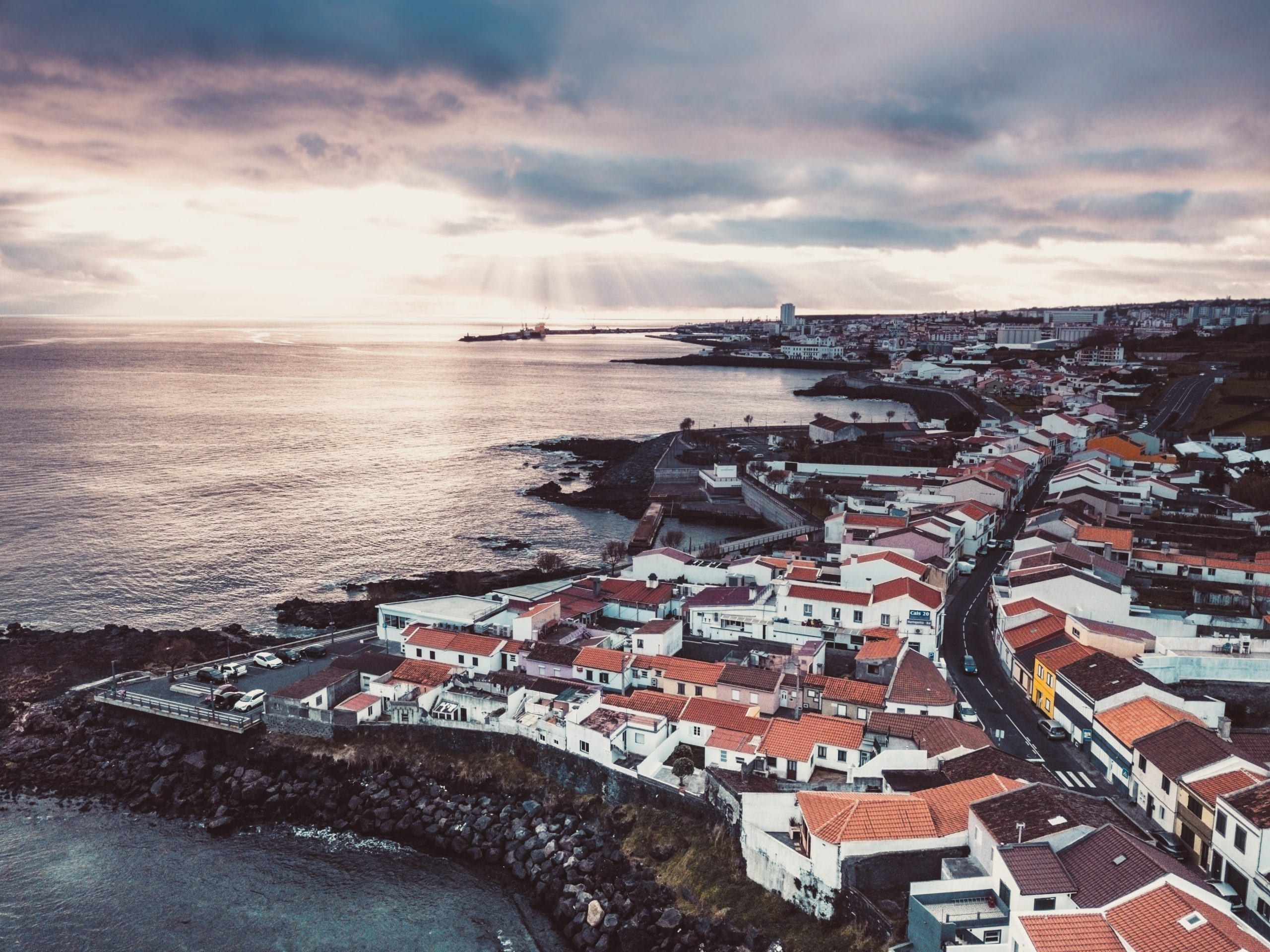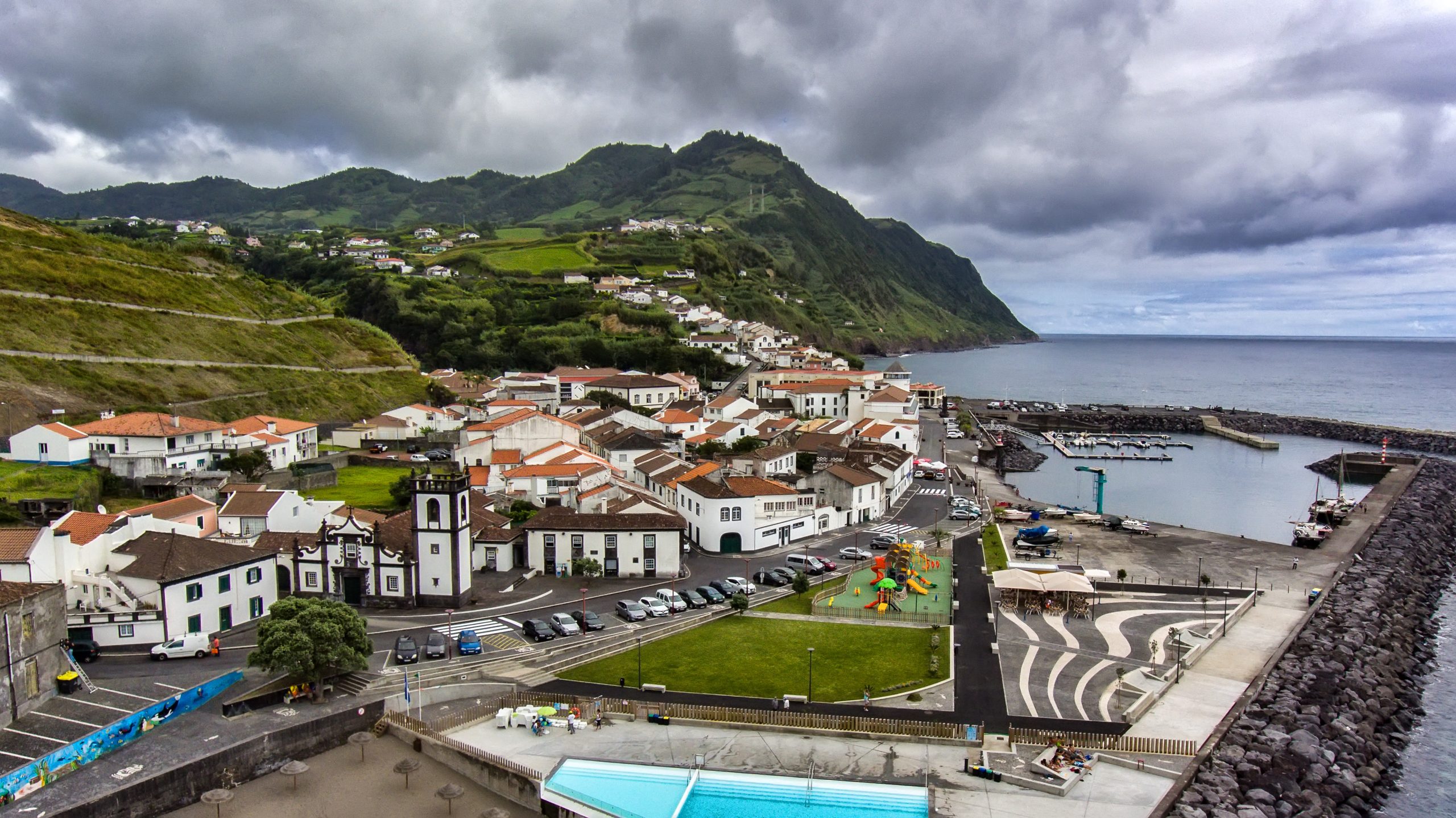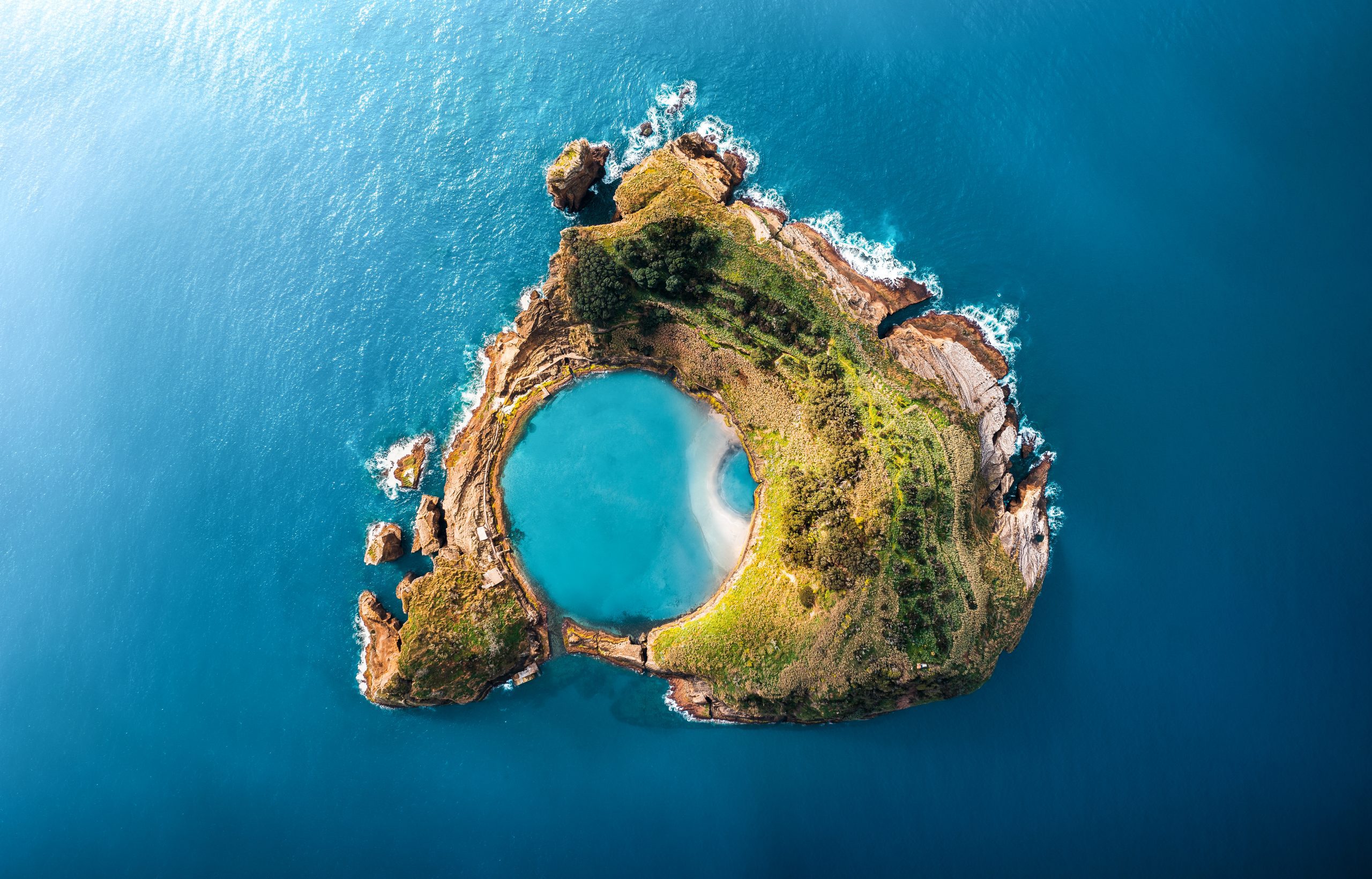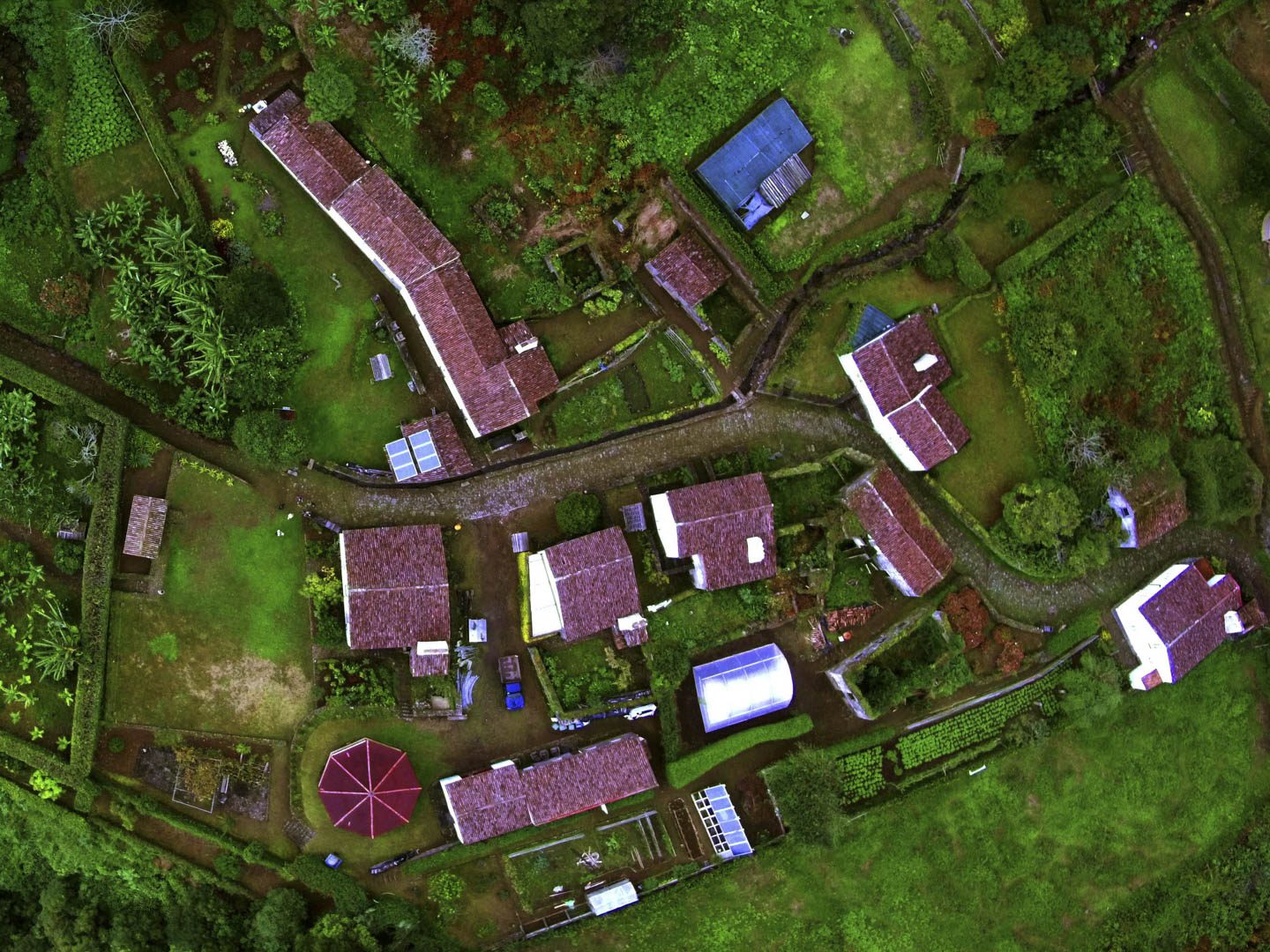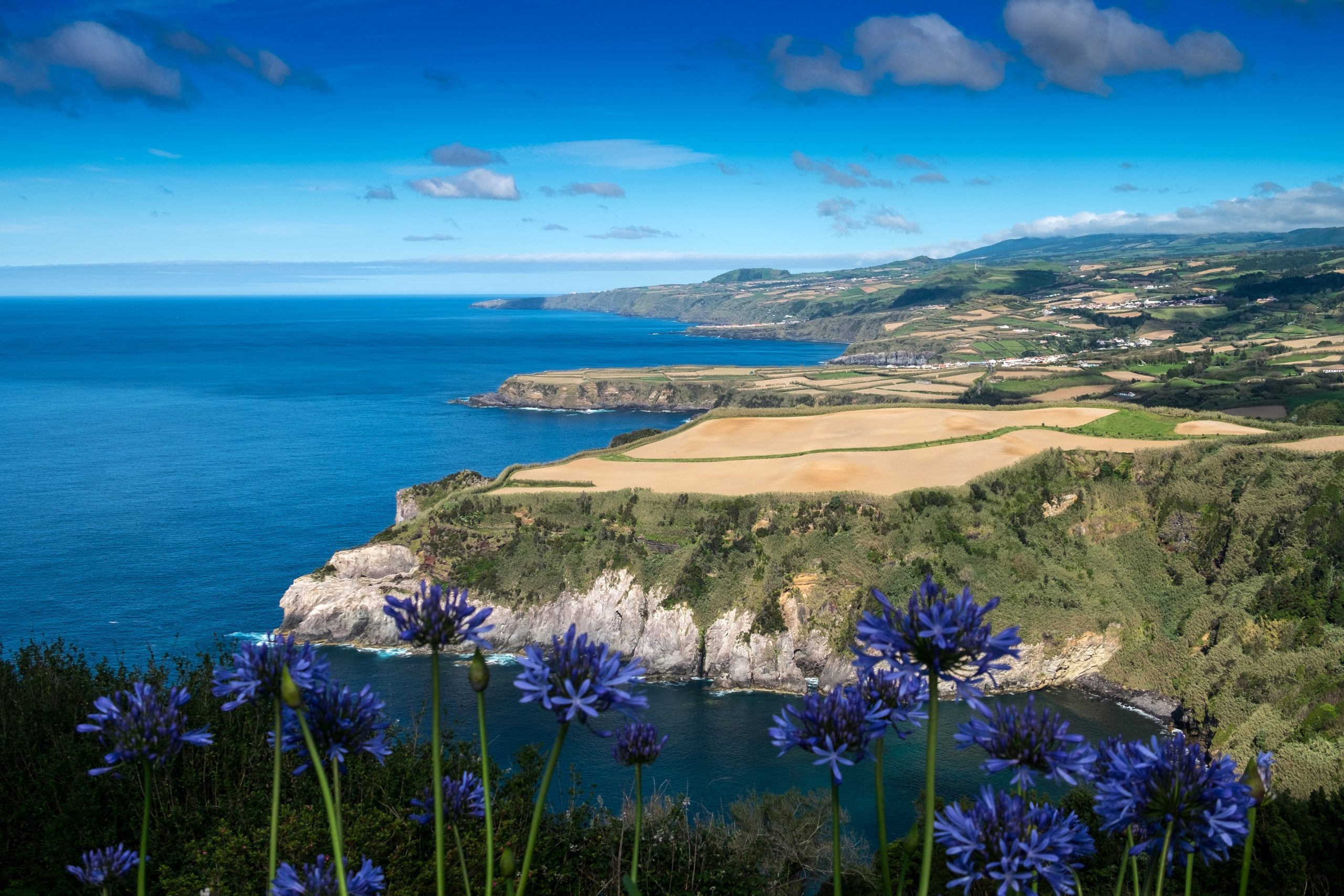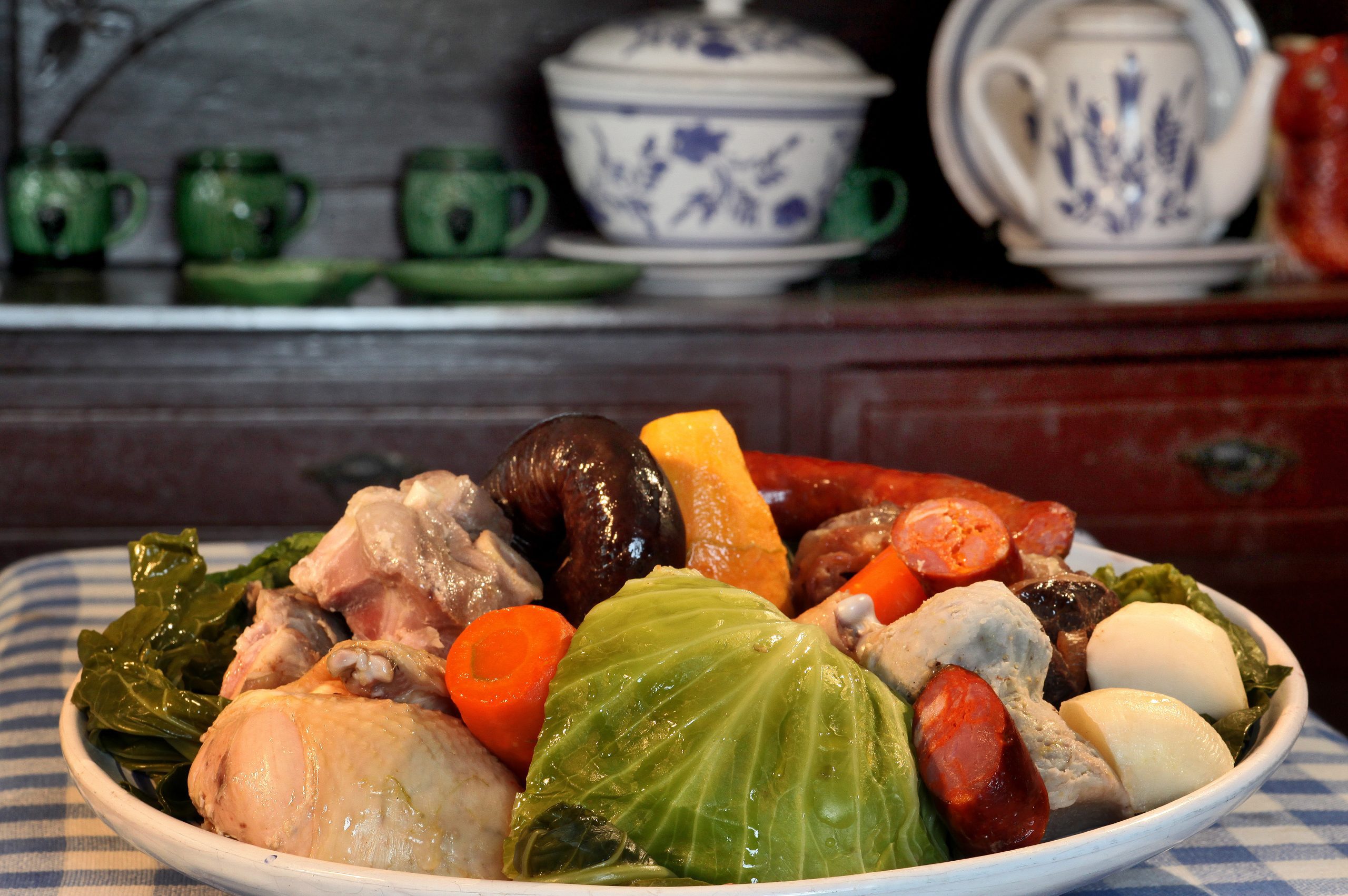São Miguel is the largest island of the Azores archipelago, with many wonders to explore. Five days is the absolute minimum to take your time and see the highlights of the Green Island. In this itinerary for São Miguel, you will have various options. We have you covered, whether you are looking to enjoy black-sand beaches, hike beautiful trails, observe unique landscapes, or learn more about history and culture during your holidays!
This 5-day itinerary in São Miguel will take you to the most popular places around the island due to their undeniable beauty and some off-the-beaten-path spots where you will find more locals than tourists.
Day 1: Take a Complete Tour of Ponta Delgada
It is necessary to take a whole day to explore Ponta Delgada. This is the economic capital of the Azores, the biggest and most populous city. There are many important landmarks, such as monuments, churches, and parks, to discover.
You can take a guided city tour to gain a local perspective and historical explanations. This way, you will know everything about the city and only visit the best parts. Otherwise, you can explore on foot, as it is a relatively small city with everything accessible by walking. There are no tramways or underground metro stations; the only transportation available is taxis, mini-buses, and a little tourist train on wheels.
Azores Guide Book
Azorean Language & Phrases 🗣️ | Currency & Banks 💵 | Credit Cards & Traveler’s Cheques 🏧 | Driving in the Azores 🚗 | Electricity 🔌 | Experiences & Tours 🗺️ | Health & Safety 🩺 | Internet & Wi-Fi Access 🛜 | Phones & Mobile Service 📞 | Post Offices & Buying Stamps ✉️ | Public Holidays 🏖️ | Shopping 🛒 | Time & Daylight 🕒 | Whale Watching Guide 🐳 | Best Island to Visit 🏞️
Mãe de Deus Viewpoint & Hermitage

Don’t forget to go to the chapel of Mãe de Deus in Ponta Delgada. In addition to having beautiful, typical architecture, you will have a panoramic view over the entire city, from the ocean to the mountains. Afterward, go to the Mercado da Graça (Farmers’ Market) to taste local cheese and pineapple.
Ponta Delgada’s Churches

Being a religious region, the Azores have several churches in the cities, and each parish has its own. If you like architecture and old stones, then visit the Igreja Matriz (São Sebastião church), the church of São José, and the Sanctuary of Senhor Santo Cristo dos Milagres. This one is probably the most important church in the archipelago because it hosts a sacred statue of Jesus, adored by all Azoreans. The festival is celebrated yearly for a week, five weeks after Easter.
Regarding monuments, the Fort of São Brás is right next to the sanctuary. This is now the military museum. Moreover, nearby are the beautiful city gates and, a bit further, the museum of Carlos Machado with the Jesuits’ church and convent of Santo André.
Related Article → Public Holidays in the Azores 2025: Full List & Travel Guide
Gardens of António Borges & José do Canto

Ponta Delgada is a beautiful city with basaltic architecture, and it also offers plenty of natural beauty. There are several parks, António Borges Garden and Mata-Jardim José do Canto being the most popular ones. Enjoy the quiet surrounded by beautiful, fascinating vegetation and cute animals like ducks and fish.
Gruta do Carvão

On the northern side of the city, take some time to visit Gruta do Carvão, a real lava tube with magical geological formations inside. This is such a great reminder that you are on a volcanic island.
Pineapple Plantations

Inside and around the city, you can find many pineapple plantations. This fruit is the symbol of our islands. Visit the plantations and enjoy delicious food and beverages made from pineapple, such as liquor or jam.
Did you know
We have cultivated pineapples in traditional greenhouses for over 150 years!
Check all our articles about each one of the most relevant points of interest in Ponta Delgada: Gruta do Carvão | Ponta Delgada | Jardim António Borges | Jardim Botânico José do Canto | Pinhal da Paz | Portas da Cidade | Milícias & Pópulo Beaches | Praia de São Roque | Pico Vermelho Windmill | Rocha da Relva | Mercado da Graça | Miradouro Vigia da Baleia
Day 2: Sete Cidades & the West Part
With a rental car, hit the road to the Western part of the island. There, encounter the majestic volcanic complex of Sete Cidades and the picturesque coast.
Iconic Viewpoints of Vista do Rei & Grota do Inferno

Begin your day trip at Vista do Rei, the iconic view of the caldera and its twin lakes. Moreover, at this spot, you will find the spooky abandoned hotel of Monte Palace.
Another famous viewpoint you will see as soon as you enter ‘ Azores’ on search engines is Grota do Inferno. One way to reach it is a short walk of about 20 minutes. In good weather, you will also have a fantastic panoramic view of several lakes and the village in the crater.
Hiking Trails: Cumeeira Grande & Serra Devassa

If you love hiking, there are two different trails nearby: Cumeeira Grande and Serra Devassa. The first route is approximately 12 km one way, following the crater’s edge around Blue Lake and into the village. The second option is 5 km, which takes you to the forest and many smaller lakes.
Sete Cidades Village

Now, it is possible to go to the village by car. Take the scenic road of the Hortensias, which leads to the inside of the crater. Enjoy the views over Lagoa de Santiago and the Lagoa das Sete Cidades, which form just one lake. In the town, you can walk around the green and blue lakes, see the small peninsula, pass on the bridge, go to the tunnel, have a kayak or stand-up paddle session, and visit the Church of São Nicolau.
Check all our articles about each one of the most relevant points of interest in Sete Cidades: Caldeira Seca | Janela do Inferno | Miradouro da Grota do Inferno | Lagoa das Empadadas | Sete Cidades | Lagoa das Sete Cidades | Lagoa de Santiago | Lagoa do Canário | Lagoa do Congro | Miradouro das Cumeeiras | Monte Palace Hotel | Sete Cidades Legend | Miradouro da Vista do Rei | Lagoa de Santiago Viewpoint | Pico da Vara
Ponta da Ferraria

You will also find several wonders outside the crater on the seaside. First, Ponta da Ferraria. This place is unbelievable. It is an atypical hot spring located in a natural basaltic pool in the Atlantic Ocean. The secondary volcanic activity naturally warms the seawater. It is a perfect place to relax in good conditions — no big waves and low tide.
Mosteiros

To end the day ideally, go to Mosteiros. There, you can enjoy one of the most beautiful black-sand beaches of the Azores, with its famous islets. This is where everybody goes for a barbecue dinner with a spectacular sunset. If you don’t like the sand, there are also natural pools of dry lava rocks for an atypical bath.
Check all our articles about each one of the most relevant points of interest in Mosteiros: Mosteiros | Ponta da Ferraria | Praia dos Mosteiros | Pico Vermelho Windmill | Miradouro da Ilha Sabrina | Miradouro Vigia da Baleia
Day 3: Vila Franca do Campo & Furnas
The central part of the island also has many gems to explore. On the coast with fantastic beaches and beautiful coastal towns, or in the countryside with the geothermal capital of the Azores showing off many geological wonders, you can spend another good day on São Miguel Island.

Vila Franca do Campo

This was once the first capital city of the Azores islands before a terrible earthquake destroyed it. Nowadays, it is a beautiful coastal village where you can enjoy the beach of Vinha da Areia. It is also there that we make our delicious local Queijadas — small sweet cakes. On top of the town, you can find the Ermida de Nossa Senhora da Paz. From there, you will have a panoramic view of Vila Franca do Campo and its islet.
Check all our articles about each one of the most relevant points of interest in Vila Franca do Campo: Vila Franca do Campo | Ermida de Nossa Senhora da Paz | Ilhéu de Vila Franca | Praia da Amora | Praia da Vinha da Areia | Praia de Água D’Alto | Lagoa do Congro | Lagoa dos Nenúfares | Miradouro do Castelo Branco
Vila Franca do Campo Islet

If you want to spend hours on one of the most epic beaches you will ever see, head to the marina and take the boat leading to Vila Franca do Campo Islet. This submarine volcano erupted, creating this almost perfect circle filled with ocean water. It is a great snorkeling spot as the water is shallow inside, and you are protected from the waves. Note that this nature reserve is only open to the public from June to October.
Lagoa do Congro

On the way to Furnas, stop at Lagoa do Congro. It is a true green wonderland. The lake is a short hike away, but it is 100% worth it. This lake is less touristy than the other big ones in São Miguel, so you’ll find fewer people.
Lagoa das Furnas & Caldeiras das Furnas

Welcome to the geothermal paradise of Furnas, one of the Azores’ active volcanoes.
Coming from the south road, you will arrive directly at the lake. It is possible to hike around the lake, but it will take you about 1 hour and 30 minutes. On the way, you will find the chapel of Nossa Senhora das Vitórias. This is a unique example of neo-Gothic church architecture, belonging to the forest garden of José do Canto. Furnas’s environmental interpretation center is a bit further, where you can learn more about the lake and the volcano.
Also on the walk around the lake is the fumarolic camp called Caldeiras. This is where we cook our famous Cozido, the regional stew, underground using the volcanic heat. This is a must-try to taste local flavors. If you have time in Caldeiras, you can visit Grená Park to see one of the tallest waterfalls: Salto da Inglesa. For hikers, climbing Pico do Ferro is a great warm-up, with a one-way walk of about 50 minutes. Up there, enjoy the view over Furnas Valley.
Check all our articles about each one of the most relevant points of interest in Furnas: Caldeiras das Furnas | Furnas | Capela da Nossa Senhora das Vitórias | Castelo Branco Viewpoint | Lagoa das Furnas | Lagoa das Furnas Viewpoint | Mata-Jardim José do Canto | Parque Terra Nostra’s Thermal Pool | Pico do Ferro Viewpoint | Poça da Dona Beija | Ribeira Quente | Praia do Fogo | Salto do Cavalo Viewpoint | Salto do Rosal | Terra Nostra Garden
Terra Nostra Garden

This botanical garden is so serene that you will want to stay for a while. Explore the exuberant vegetation and take some time to soak in the warm thermal waters. Three different pools are going up to 39ºC, and all the facilities are on-site. The waters are perfect for skin problems and rheumatism, but beware of white swimsuits, which can turn orange.
Pro tip
If you sleep at the Terra Nostra Hotel, you can enjoy the park at night, as it closes in the afternoon for visitors.
Related Article → Terra Nostra Botanical Garden | Parque Terra Nostra’s Thermal Pool
Furnas Village

There are some souvenir shops, restaurants, cafés, and pastry shops where you can find Bolos Lêvedos, the local brioche flatbreads. People use it to make toast with cheese, buns for hamburgers, or simply eat it in the morning when it is freshly made.
Other fumaroles can be observed in town, which are more impressive than the ones at the lake shore. At night, they are lit up and create a special atmosphere. There, you can also taste many water springs: iron water, sulfuric water, sparkling water, some cold, some warm. It is perfectly safe to drink them, but be careful with the warm ones as they are very hot. It is preferable to put them in a cup and wait for a while.
→ Explore the authentic flavors of Azorean cuisine in our articles: Bolos Lêvedos | Cozido das Furnas | Grilled Limpets | Massa Sovada | Pimenta da Terra | Gorreana Tea Plantation
Poça da Dona Beija

At night, we have the perfect plan for you. Swim at the thermal pools of Poça da Dona Beija. This hot spring is open at night, which is excellent since the air temperatures drop slightly, allowing you to stay warm. There is one colder pool, and the rest are around 39ºC.
Day 4: Nordeste & the East Part
Many call Nordeste ‘the tenth island of the Azores’ because it is so unique that it looks like another island. High green cliffs, colorful flowers, and waterfalls constitute the beautiful Northeast of the São Miguel island region.
Watch the Sunrise

Why not start the day early and watch an incredible sunrise over the Atlantic Ocean? You can sleep in Nordeste or drive early if you feel up to it. The best spots are Miradouro da Ponta do Sossego and Ponta da Madrugada. In addition to being beautiful parks filled with flowers, those are the easternmost points on the islands, providing a colorful spectacle in the early morning.
Ribeira dos Caldeirões Park

You can see many beautiful waterfalls at this beautiful park, have delicious Azorean ice cream, walk in nature along a river, and visit several watermills. Another frequent activity at Ribeira dos Caldeirões is Canyoning. Fill up your adrenaline levels!
Nordeste Village & Farol do Arnel

In Nordeste, you can see the Church of São Jorge, the old seven-arch bridge built in the 19th century, and simply discover the cute little town. Down a steep road, at the entrance of Nordeste town, you can find the Farol do Arnel. It is not recommended to go down by car, as the road is narrow and very steep.
Check all our articles about each one of the most relevant points of interest in Nordeste: Cu de Judas | Nordeste | Farol do Arnel | Faial da Terra | Ponta do Sossego | Miradouro do Salto da Farinha | Pico da Vara | Pico dos Bodes | Poço Azul | Ribeira dos Caldeirões | Miradouro da Boca da Ribeira | Ponta da Madrugada | Miradouro Vigia da Baleia
Pico da Vara Viewpoint

This is if you want to spend some hours hiking. Pico da Vara is the highest point on São Miguel island, 1,103 meters above sea level. There is one trail leading up to the top, which takes about 3 hours to complete.
Povoação

Povoação is a town on the southeast of São Miguel island, and it was right here that the very first settlers came to the island. Enjoy this coastal town with a beach, narrow streets, and its typical Fofas (eclair-like pastries).
Check all our articles about each one of the most relevant points of interest in Povoação: Povoação | Aldeia do Sanguinho | Faial da Terra | Salto do Cagarrão | Salto do Prego | Ribeira Quente Waterfall | Praia do Fogo | Miradouro do Pico dos Bodes | Miradouro Vigia da Baleia
Faial da Terra

Near Povoação is the town of Faial da Terra. From there, find one of the most beautiful hiking trails on the island: Sanguinho. This circular trail of about 2 hours will lead you to the waterfall of Salto do Prego and, if you wish to go further away, to the hidden Salto do Cagarrão. In addition, you will pass by the abandoned village of Sanguinho, which is currently being rebuilt.
Gorreana Tea Factory

For tea time, after a day full of activities and breathtaking landscapes, stop at Gorreana Tea Plantation on your way back to Ponta Delgada via the North road if you are sleeping in the city. You can stroll in the fields, visit the factory, taste the local tea, and buy plenty of regional products.
Day 5: Lagoa do Fogo & Ribeira Grande
Lagoa do Fogo Viewpoints

When you go up to the viewpoints of Lagoa do Fogo from the south coast, you will first find the Pico da Barrosa viewpoint, then the Lagoa do Fogo viewpoint, which is both spectacular and worth a visit.
Quick Info
Note that the road leading to the top of the mountain is forbidden to rent cars in the summer during the day. But a bus will take you there at the beginning of the road.
Check all our articles about each one of the most relevant points of interest in Lagoa do Fogo: Caldeira Velha | Lagoa do Fogo | Pico da Barrosa | Janela do Inferno
Caldeira Velha

Going down towards the north coast, you will pass by the hot springs of Caldeira Velha, a hot waterfall inside a lush forest. If you haven’t had enough warm water in Furnas, this is another opportunity to enjoy it.
Salto do Cabrito

Continue on the road, and there will be a sign towards Salto do Cabrito. This waterfall is an excellent spot for a refreshing dip in crystal-clear waters, capturing stunning photos of your last day in the Azores, hiking in nature, or even canyoning!
Ribeira Grande & Santa Barbara Beach

This is the second city of São Miguel island. Also known as the surf capital with its beautiful Areal de Santa Barbara, Ribeira Grande is a pleasant city to walk around and see beautiful architecture. The ‘big river’ also passes through the center, with some gardens and playgrounds.
Check all our articles about each one of the most relevant points of interest in Ribeira Grande: Caldeiras da Ribeira Grande | Ribeira Grande | Miradouro da Bela Vista | Lagoa de São Brás | Porto de Santa Iria | Poços de São Vicente | Praia dos Moinhos | Salto do Cabrito | Miradouro de Santa Iria | Rabo de Peixe | Pico da Barrosa | Areal de Santa Bárbara | Miradouro Vigia da Baleia | Jardim Municipal da Ribeira Grande | Waterfalls of Ribeira Grande
Miradouro de Santa Iria

Finally, end your trip with one last viewpoint, but this time on the island’s North shore. This contrast from the green fields to the blue ocean sums up a 5-day holiday in São Miguel in the Azores islands quite well.
Check all our articles about each one of the most relevant points of interest on São Miguel Island: 3-day itinerary for São Miguel | 5-day itinerary for São Miguel | Discovery Azores | Traditional Azorean Clothing | Tipping in the Azores | Do People Speak English in the Azores? | Miradouros da Vigia da Baleia | Furnas | Lagoa | Lagoa do Fogo | Mosteiros | Maia | Nordeste | Ponta Delgada | Povoação | Ribeira Grande | Sete Cidades | Vila Franca do Campo
Complementary Information
Best Season to Visit the Azores
The Azores Archipelago boasts a unique climate that shapes its lush landscapes, making it a splendid year-round destination. With mild temperatures and minimal fluctuations, each season offers something unique. Spring averages 16 °C, summer reaches 21 °C, autumn cools to 18 °C, and winter remains mild at 14 °C.
→ For a detailed breakdown of the weather by month, check the following links 🌤️☔️: January | February | March | April | May | June | July | August | September | October | November | December
How to Get to the Azores
The Azorean Archipelago is easily accessible through numerous flight routes. Lisbon and Porto are the main entry points to the continent, with direct flights available to São Miguel (PDL), Terceira (TER), Faial (HOR), Pico (PIX), and Santa Maria (SMA). To find the best flight, use search engines like eDreams or Skyscanner. These platforms let you compare prices and schedules from multiple airlines in one convenient location.
For more details on how to get to the Azores, take a look at our complete guide. But what if you want to explore beyond your arrival island? We’ve got you covered!
- Azores airports 🛬
- Flights between islands ✈️
- Ferries between islands ⛴️
- Which island to choose? 🏝️
- What airlines fly to the Azores? 🛩️
→ Once you’ve found the perfect route, book your tickets and get ready to experience one of the world’s most stunning island groups!
Travel Essentials
Essential Information for your Azores trip: Azorean Language & Phrases 🗣️ | Currency & Banks 💵 | Credit Cards & Traveler’s Cheques 🏧 | Driving in the Azores 🚗 | Electricity 🔌 | Experiences & Tours 🗺️ | Health & Safety 🩺 | Internet & Wi-Fi Access 🛜 | Phones & Mobile Service 📞 | Post Offices & Buying Stamps ✉️ | Public Holidays 🏖️ | Shopping 🛒 | Time & Daylight 🕒 | Whale Watching Guide 🐳 | Best Island to Visit 🏞️
Useful Tools & Apps
The weather in the Azores can be variable, so it’s helpful to use some apps before visiting the islands. Spotazores provides live camera feeds from the main tourist attractions, allowing you to check the weather and plan your visit. For accurate weather predictions, use Windy or Windguru — they provide the most reliable predictions.
Video
Conclusion
This itinerary gives you an idea of what you can do in São Miguel in five days. There are plenty of choices to fit everyone’s wants and needs. Whether you wish to relax on a sunny beach or explore the dirt paths with plenty of hikes, every holiday is different.
What is most important is that you enjoy your time in São Miguel. Remember that the Azores are nine islands, so you still have eight to visit after this trip!
Authors’ Note
I am pleased to inform you that all the recommendations in this article are based on my personal experience and observations. As the author, I have personally visited each attraction mentioned, ensuring that every suggestion is grounded in first-hand knowledge and genuine enthusiasm.
FAQs
This five-day itinerary covers São Miguel’s iconic spots, including black-sand beaches, scenic hiking trails, volcanic landscapes, and lesser-known sites that provide a more authentic island experience.
Yes! The itinerary includes options for different preferences, whether relaxing on beaches, exploring trails, enjoying natural scenery, or learning about local history and culture. You can choose activities based on your interests.
Spring and summer are ideal for exploring São Miguel, with warmer and more stable weather. However, with mild temperatures and fewer tourists, autumn can also be enjoyable, providing a more peaceful experience.
We recommend renting a car to explore the island more freely. Public transport is available, but having a car makes it easier to access remote spots and allows you to explore at your own pace.

